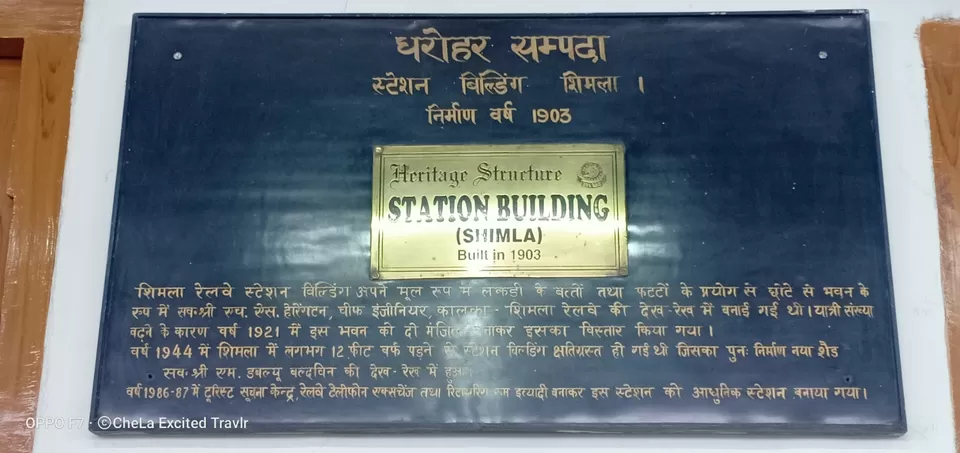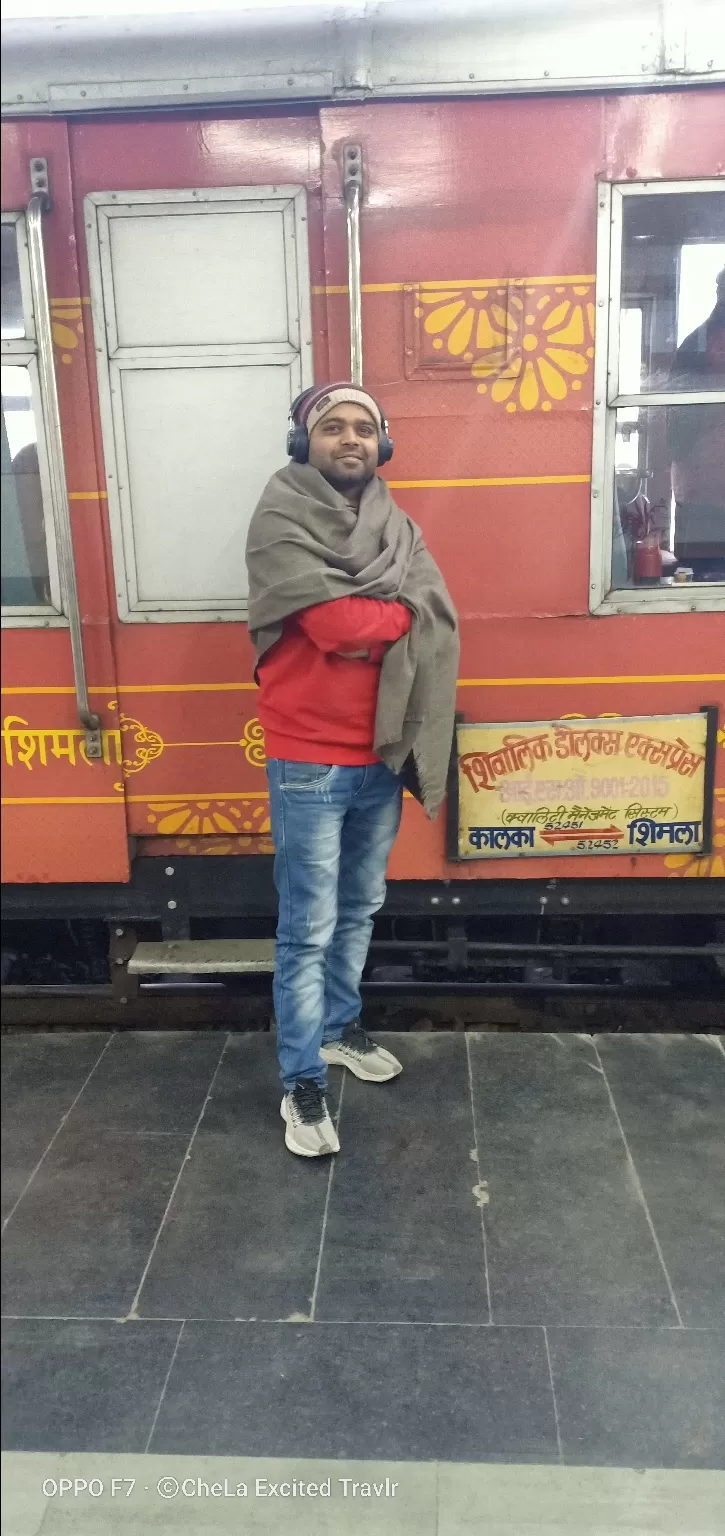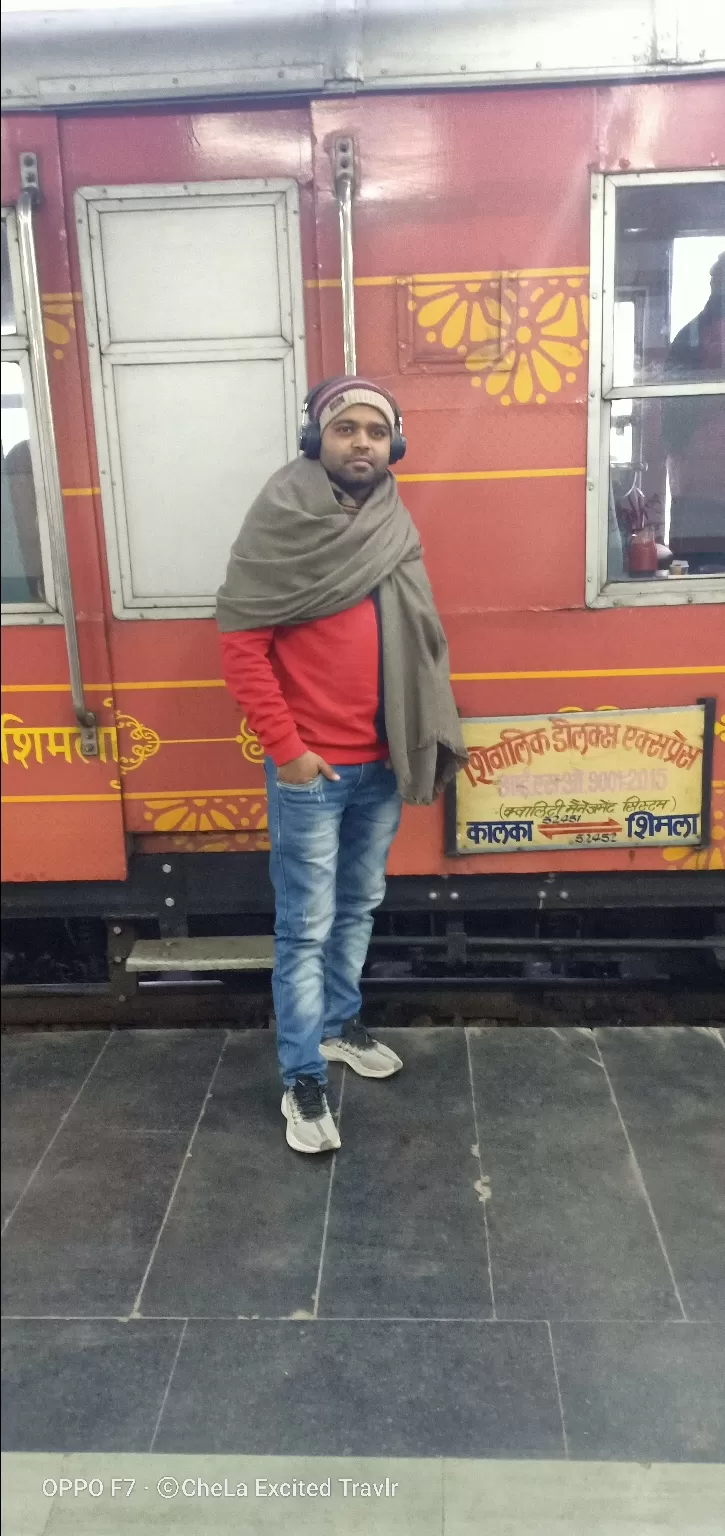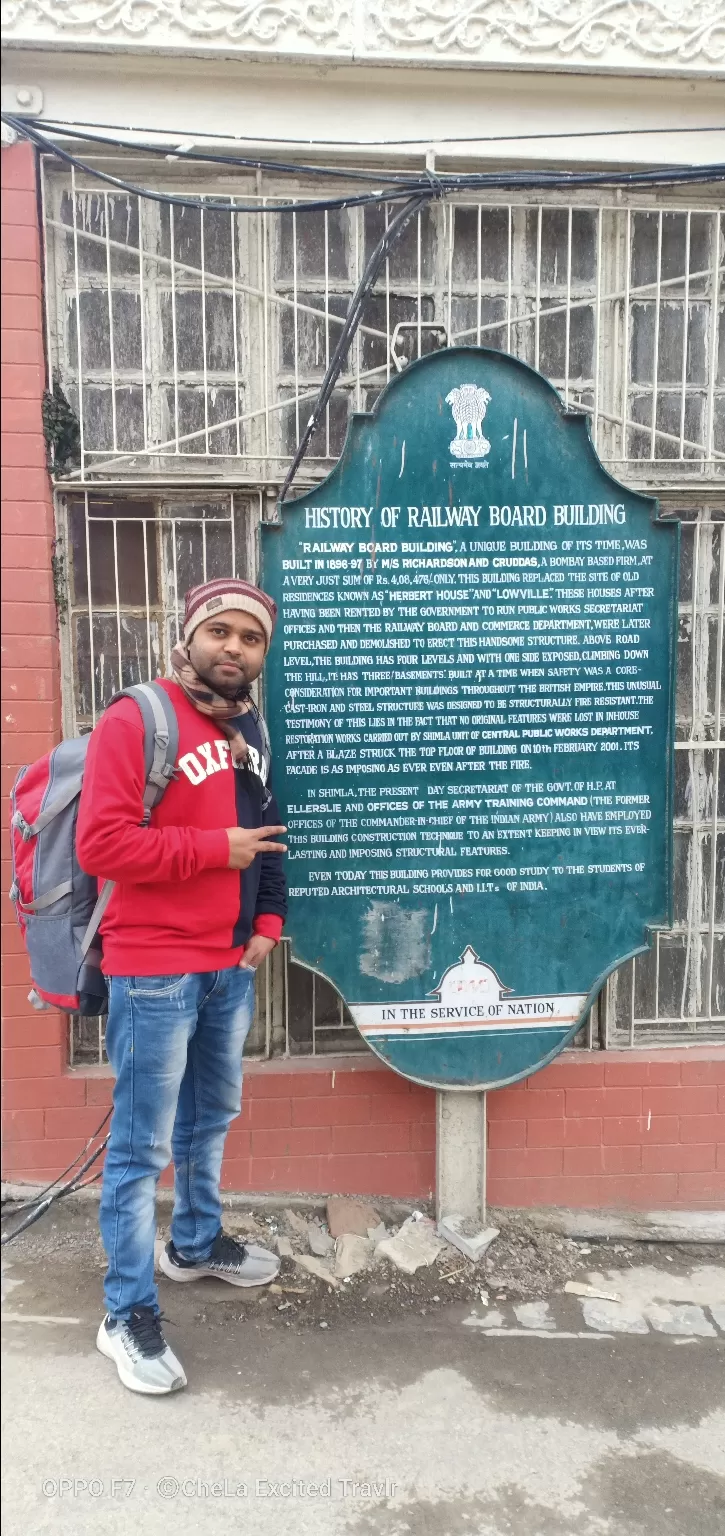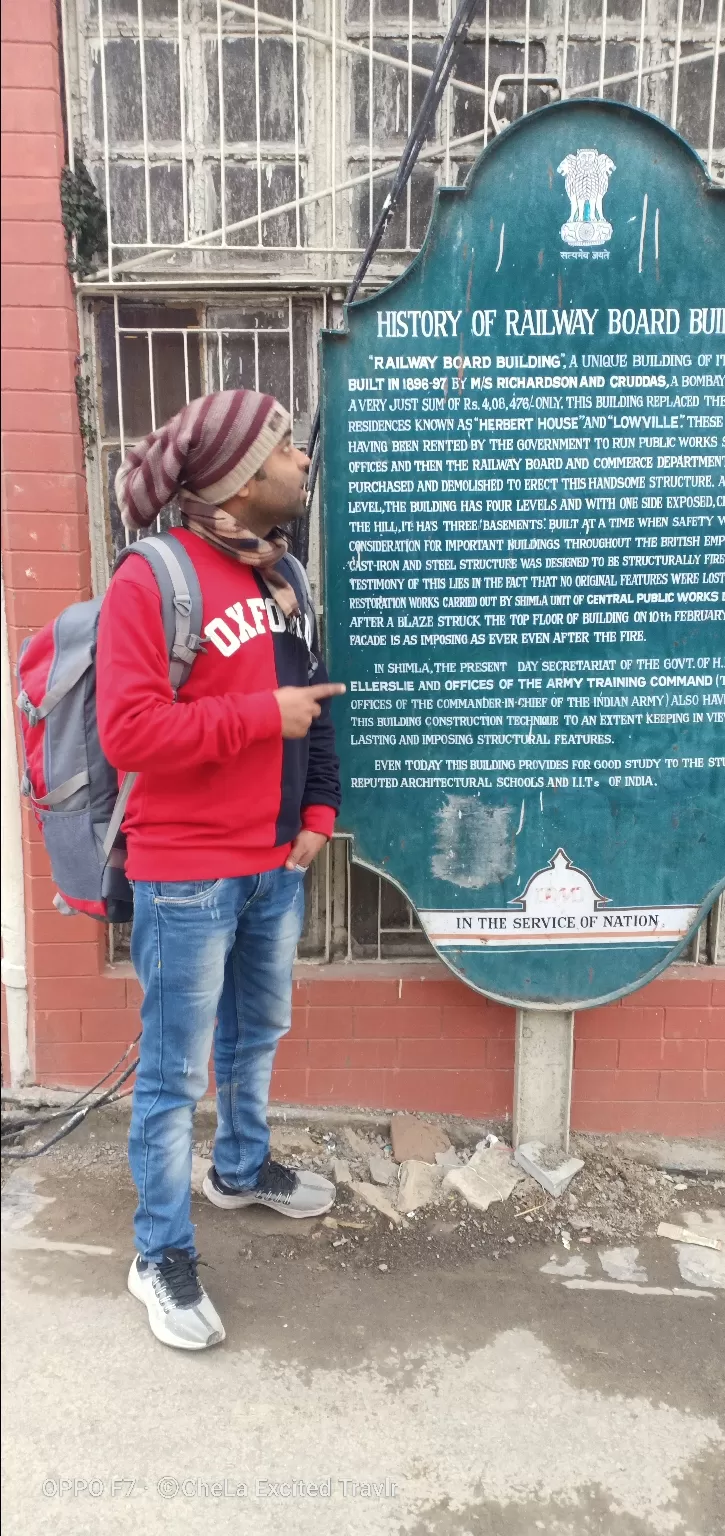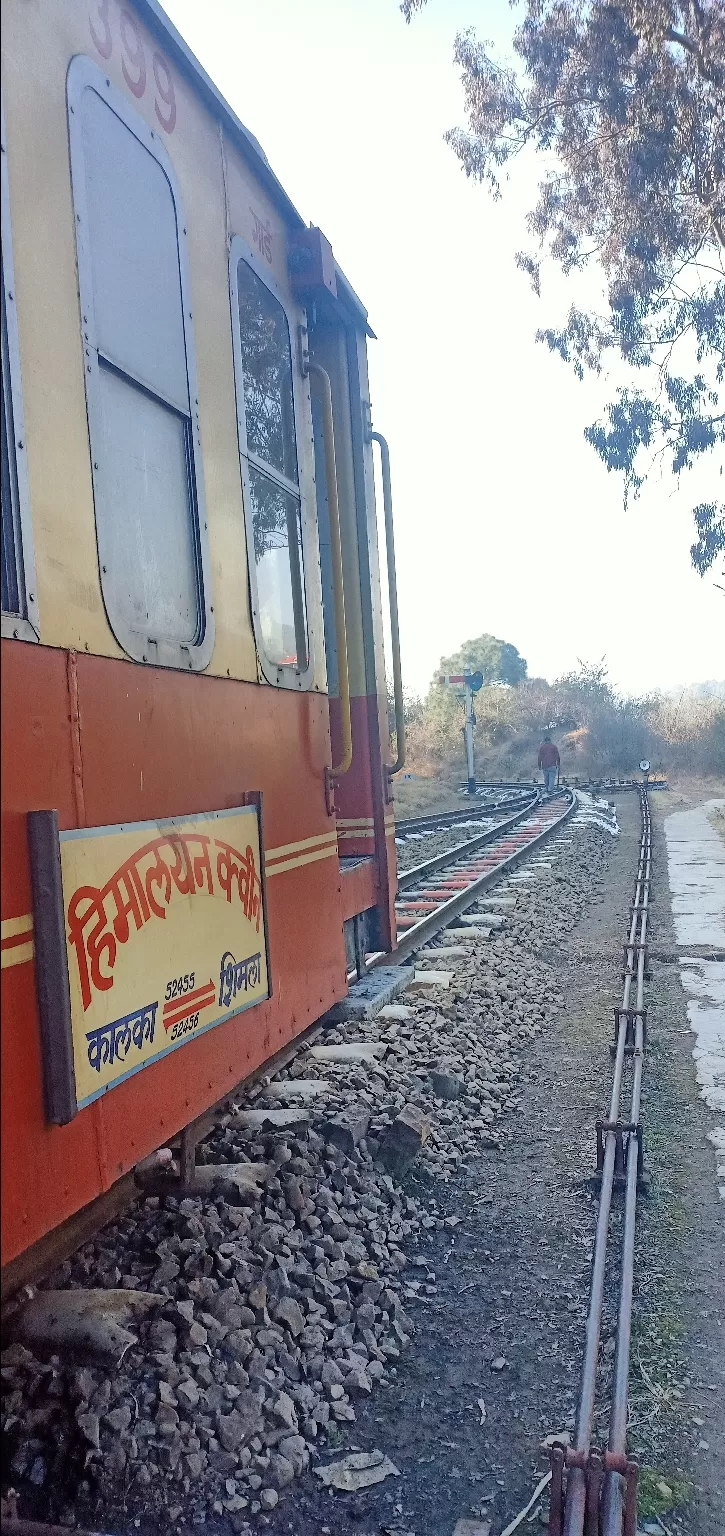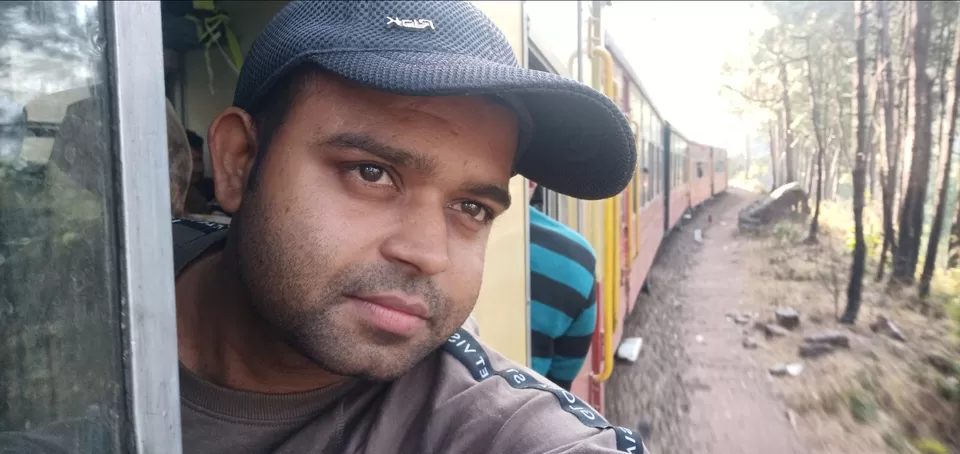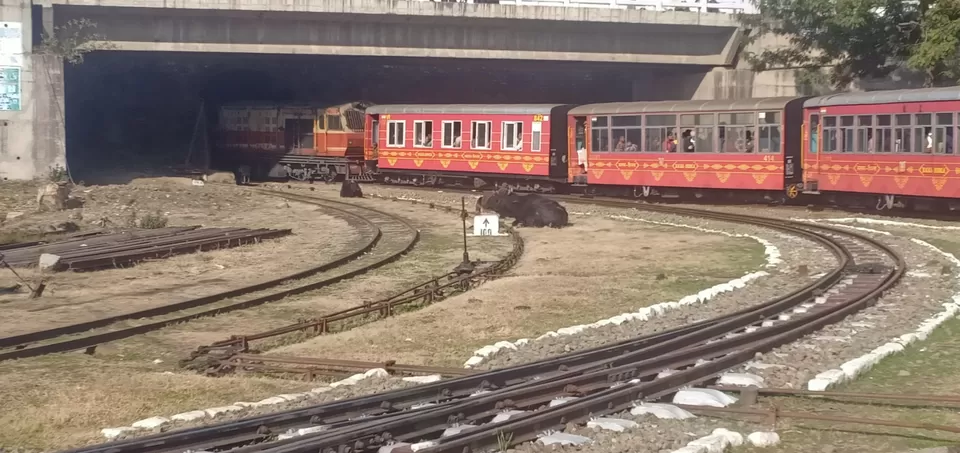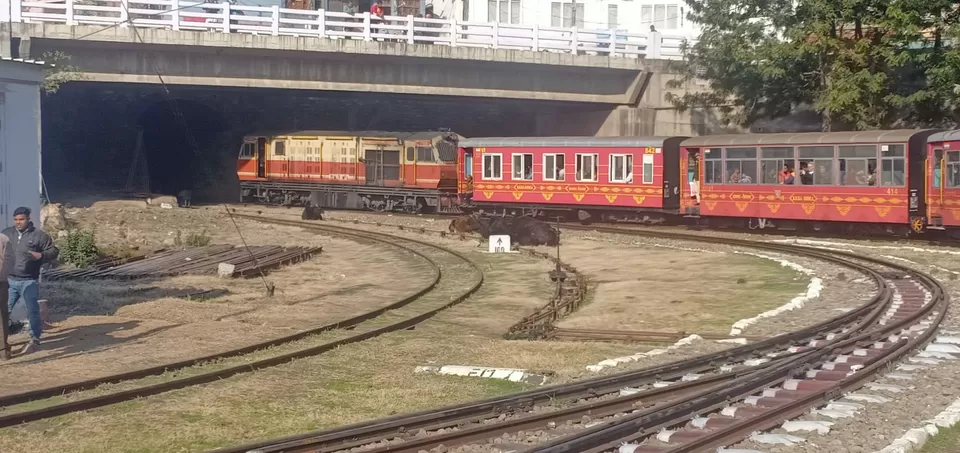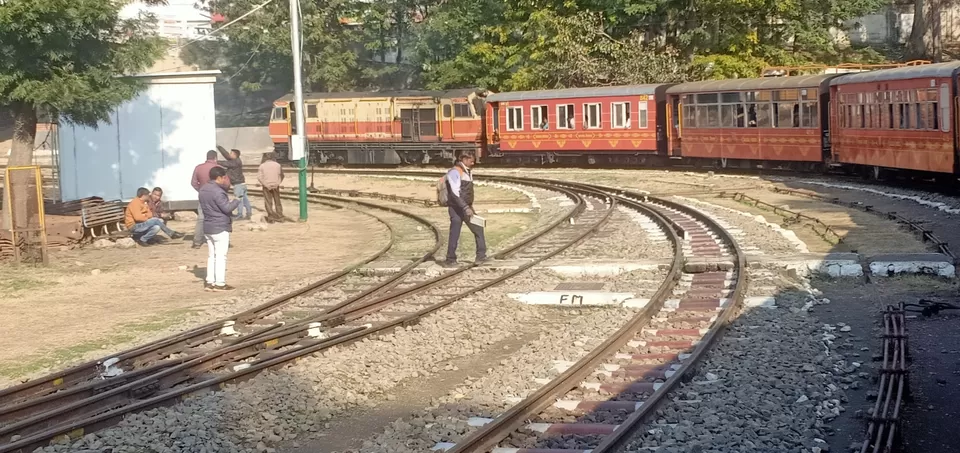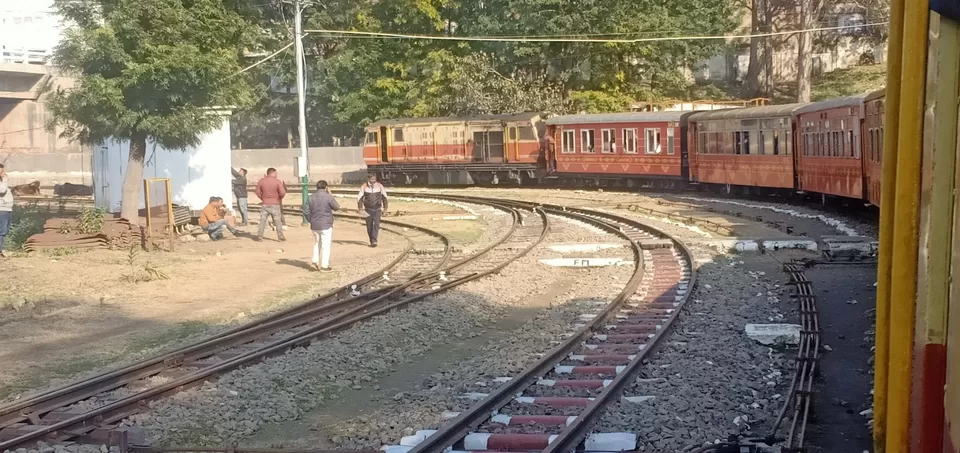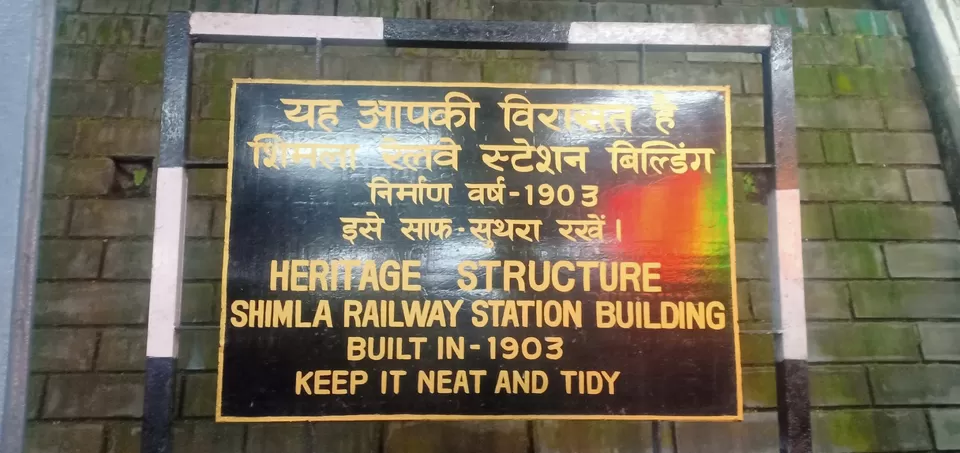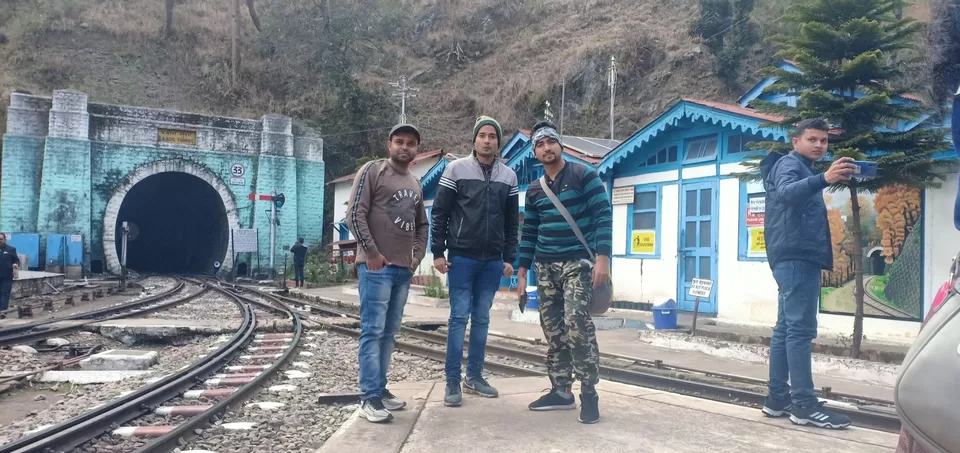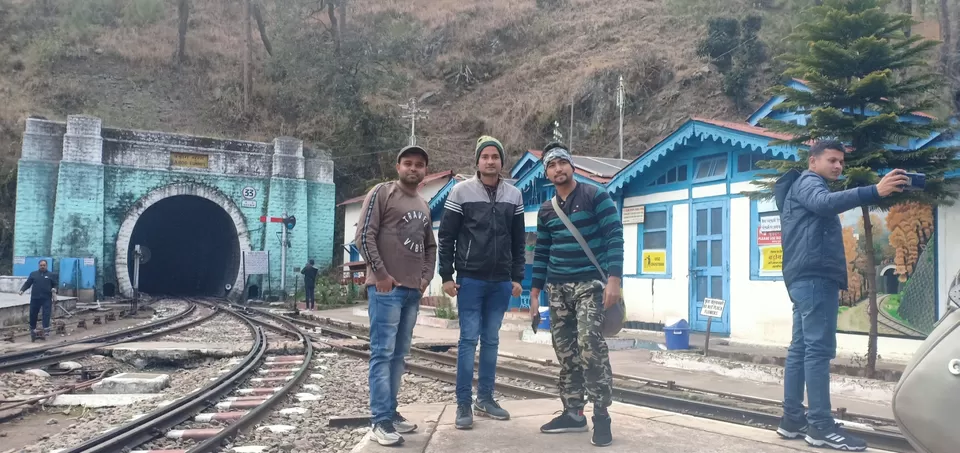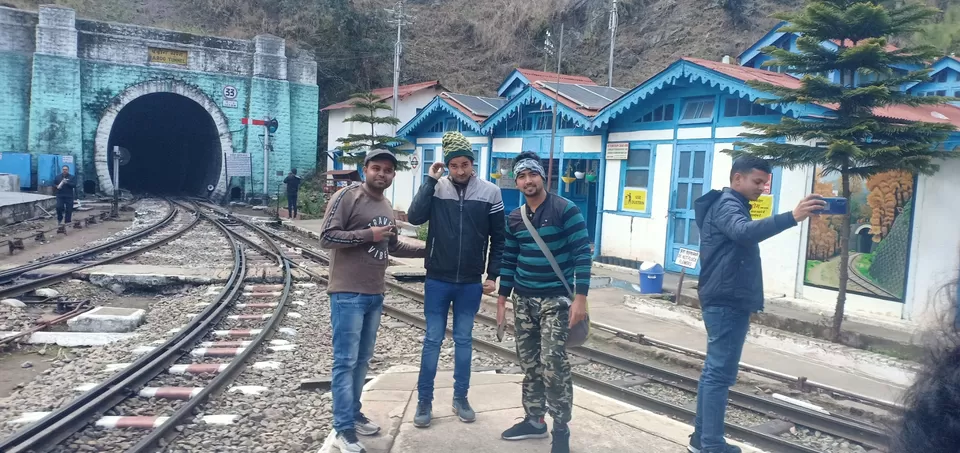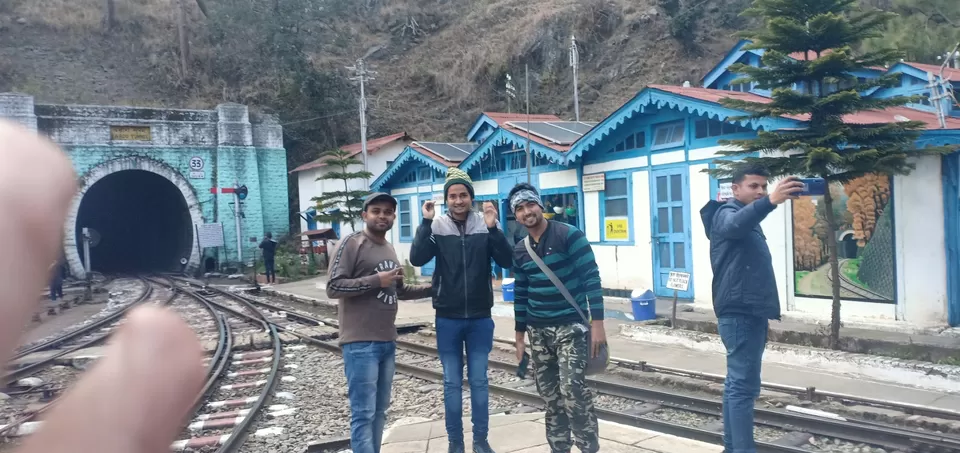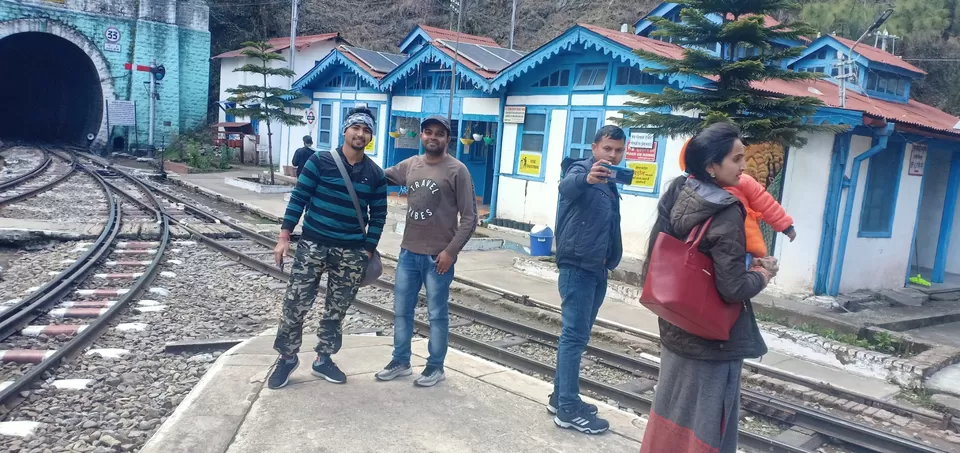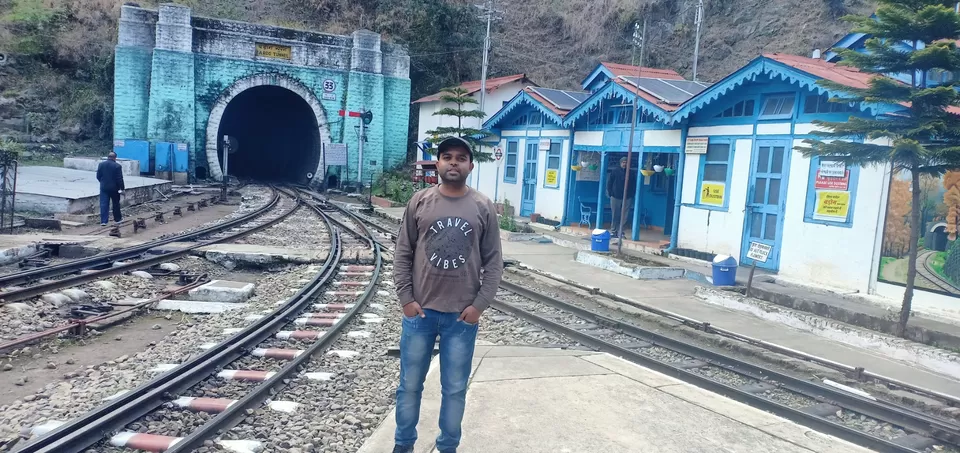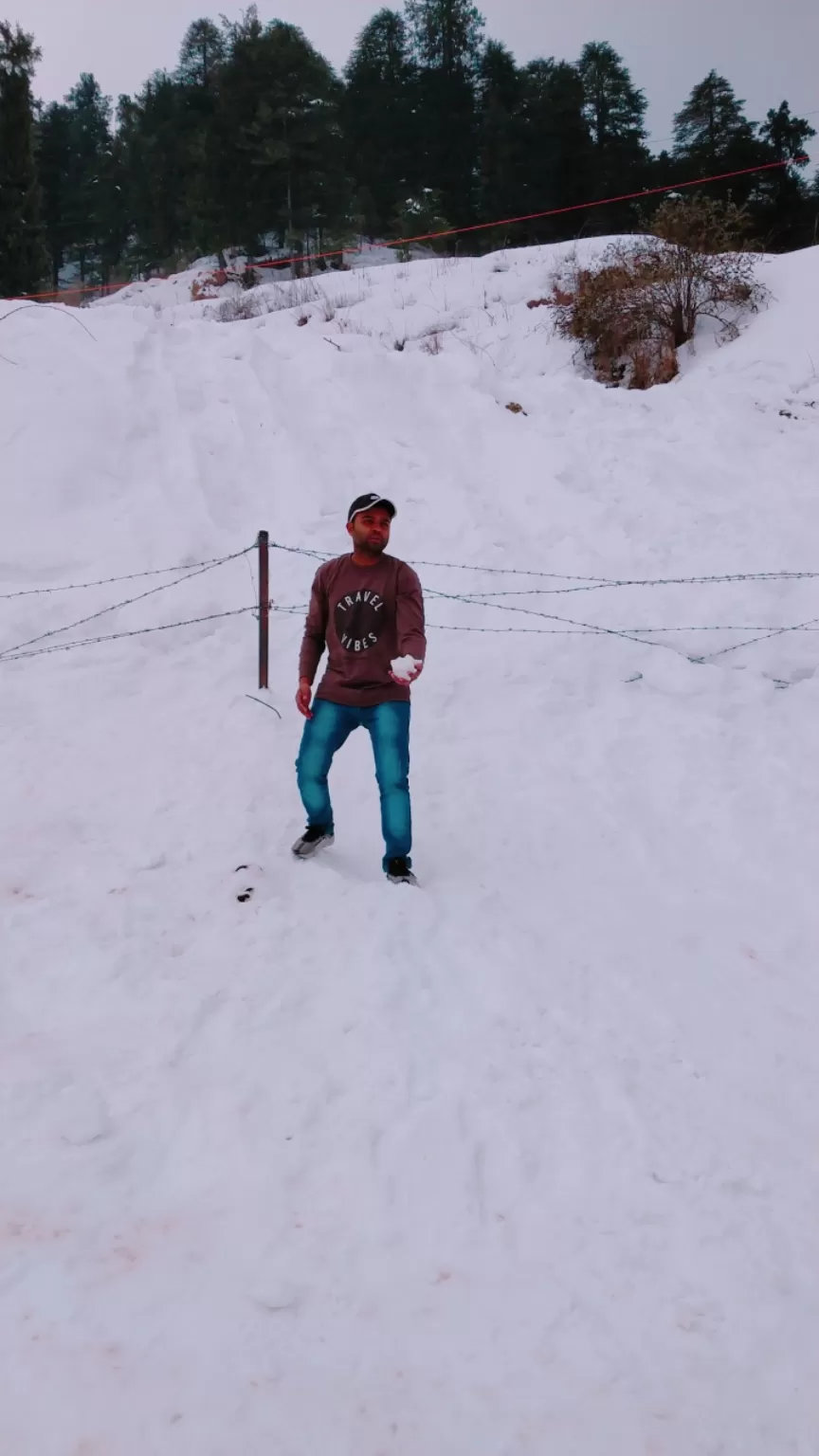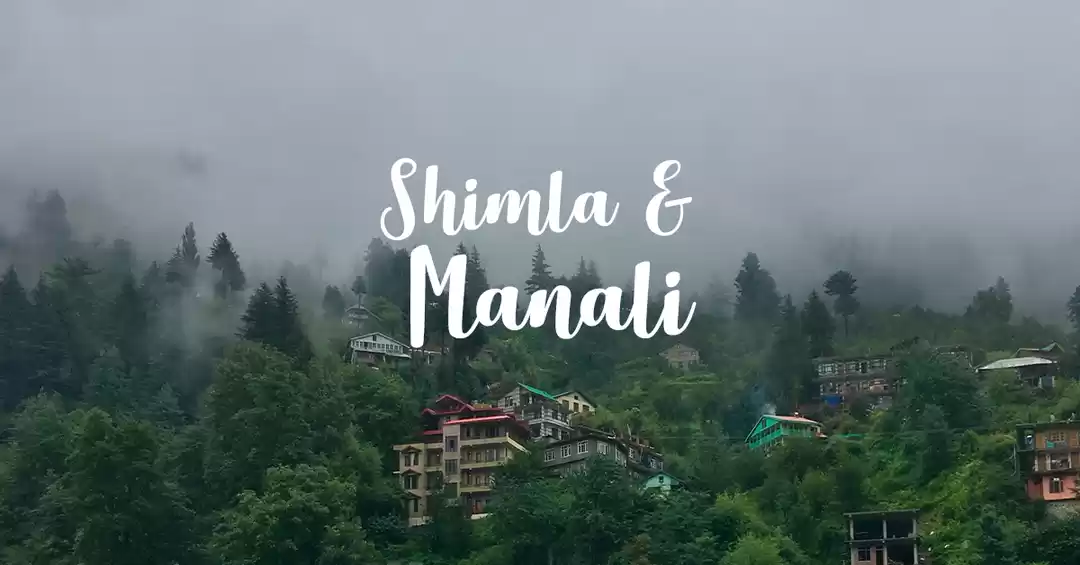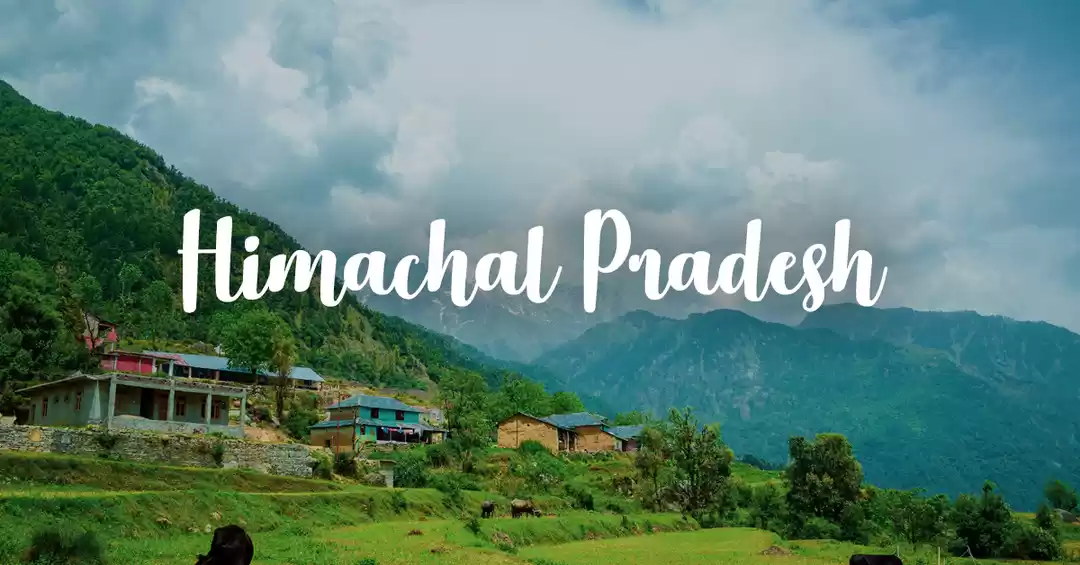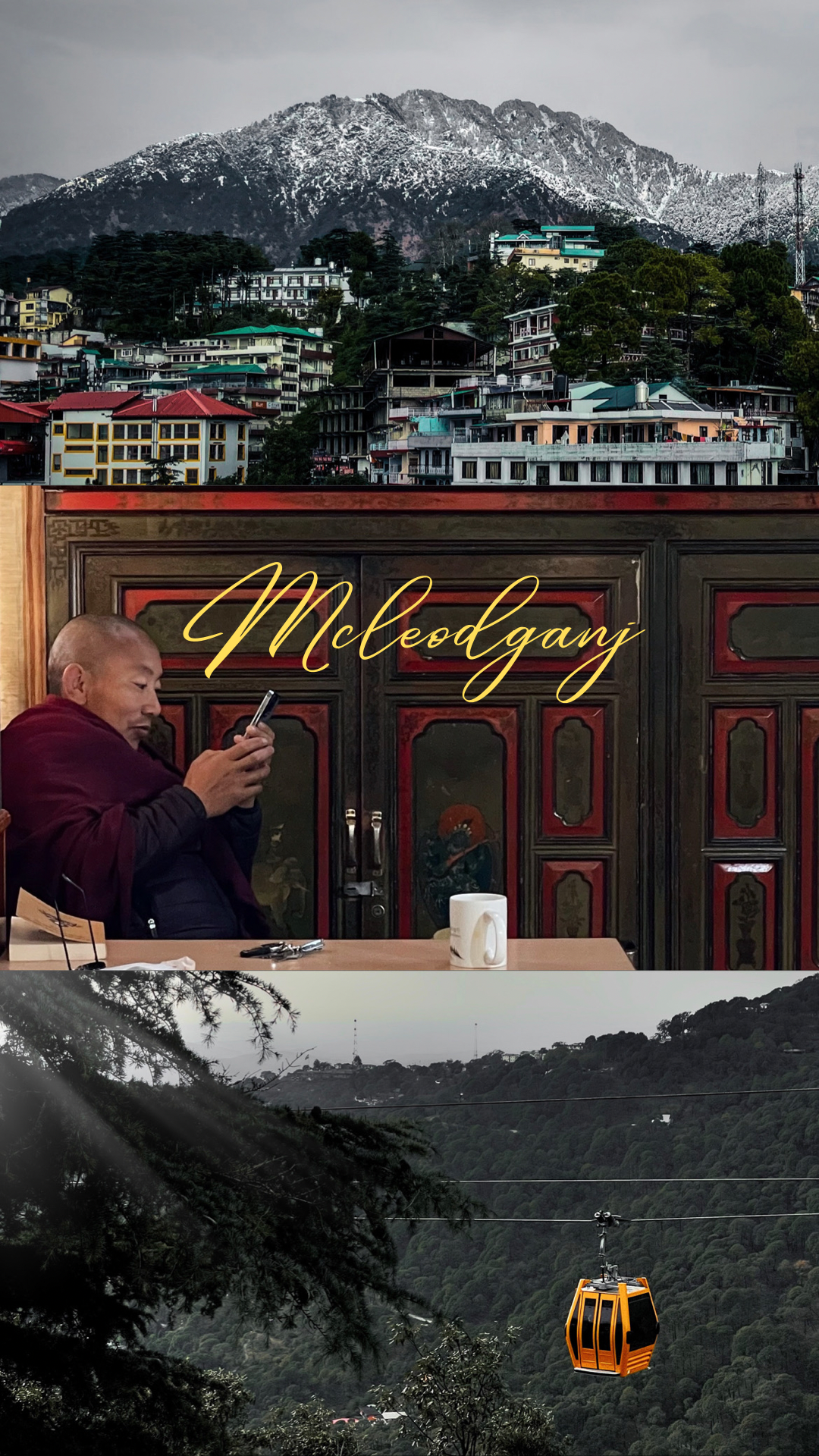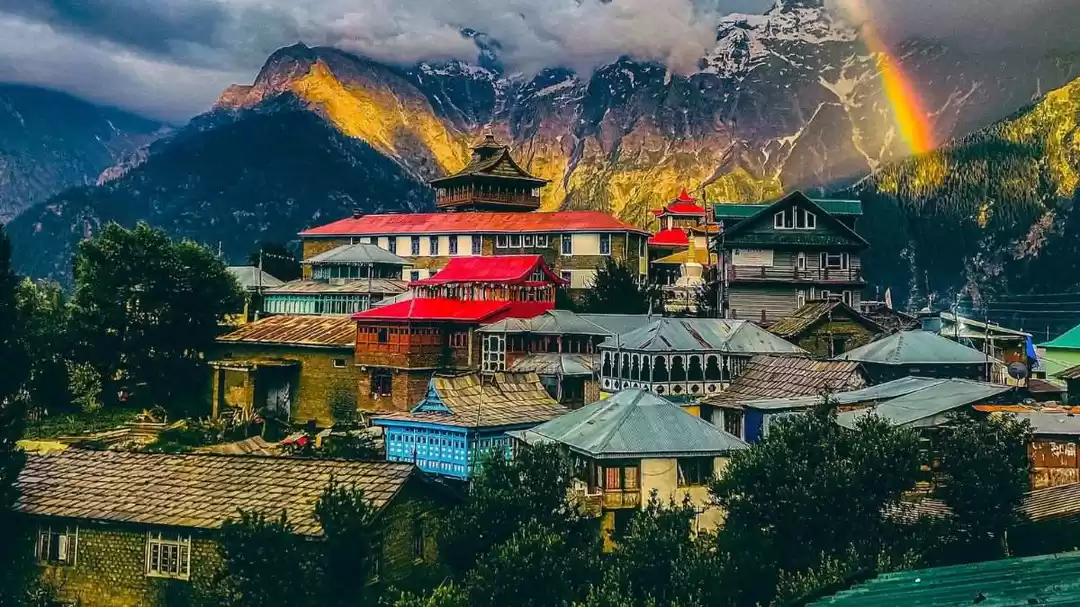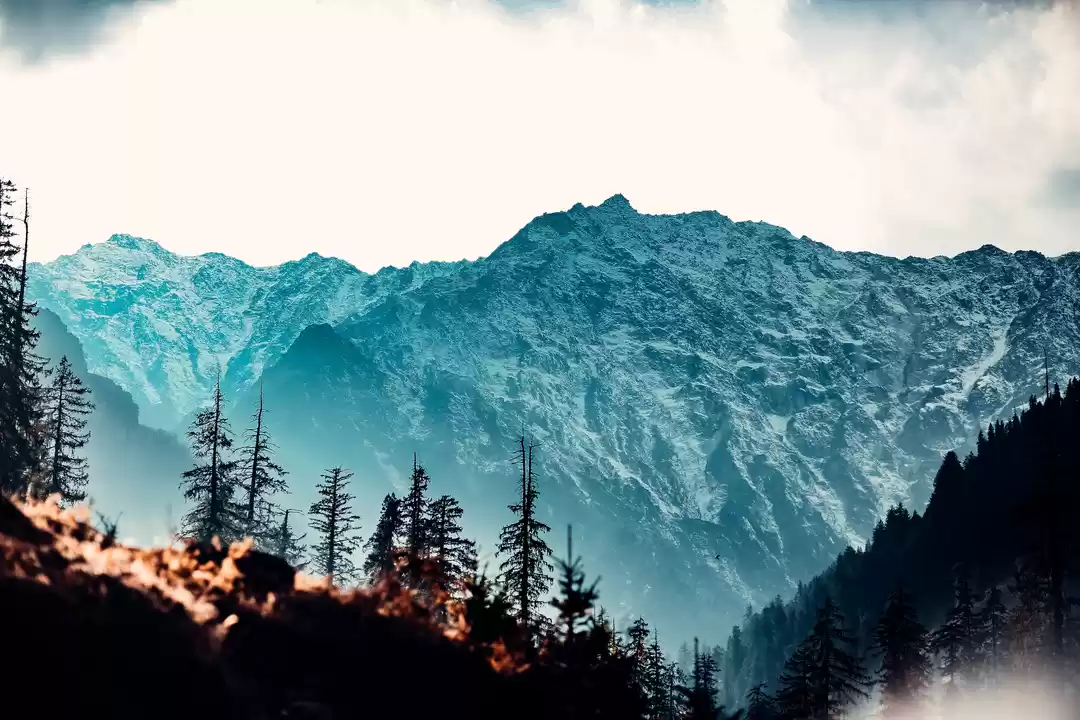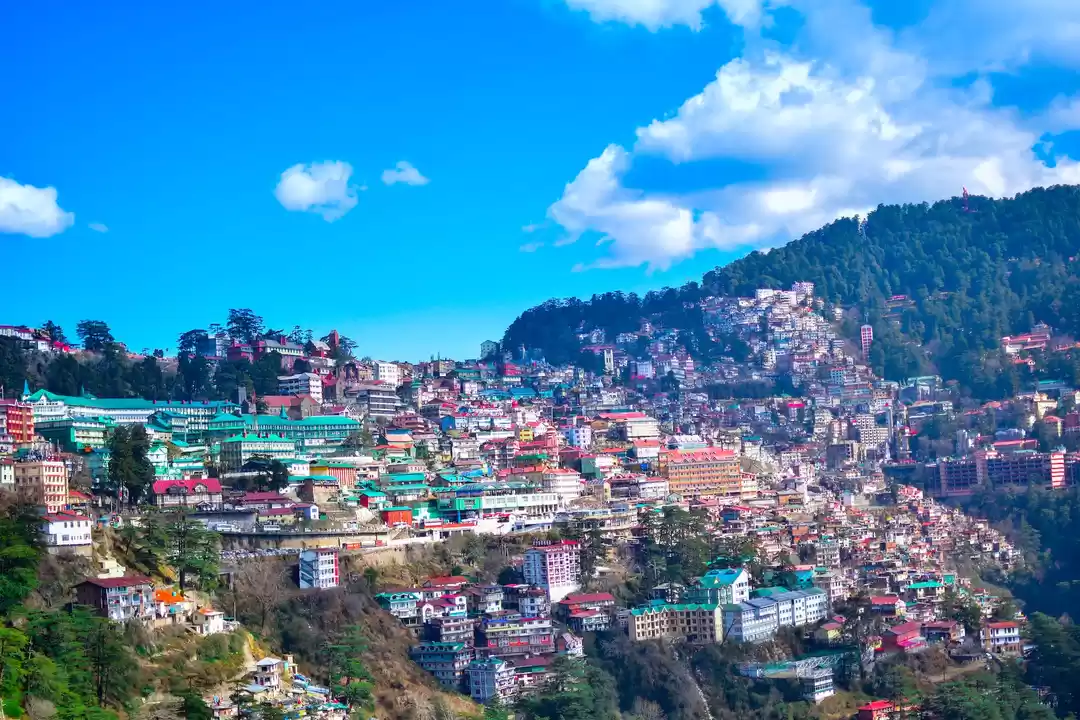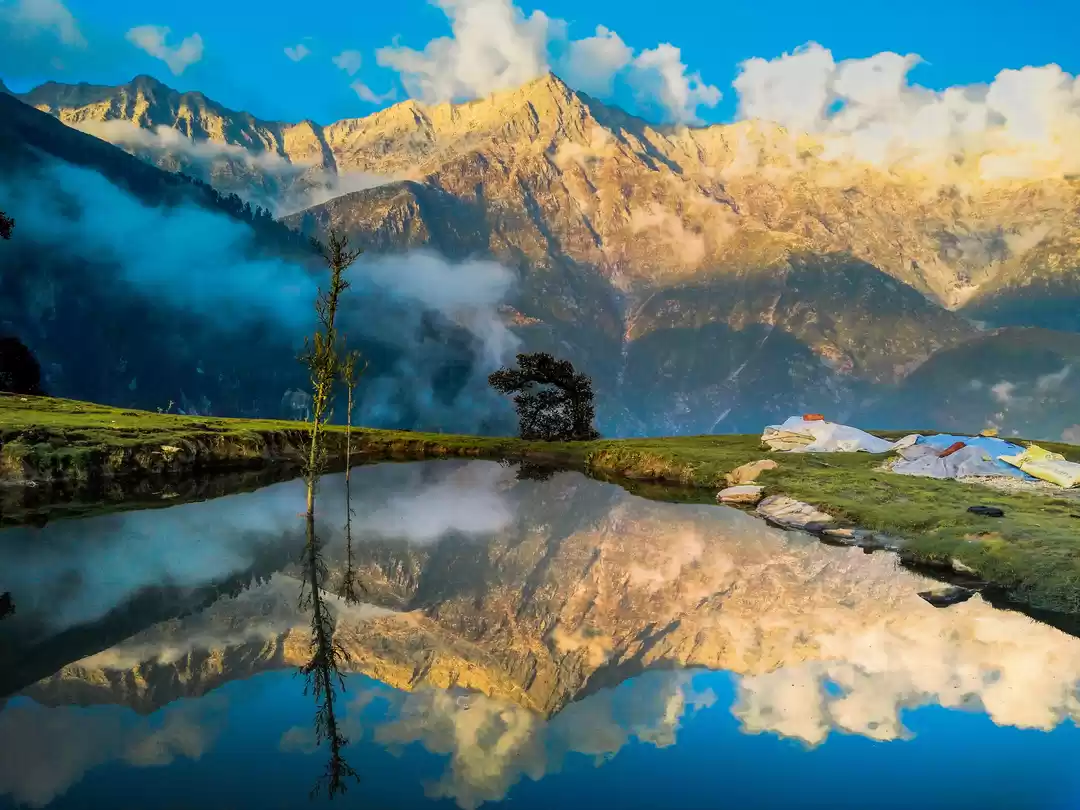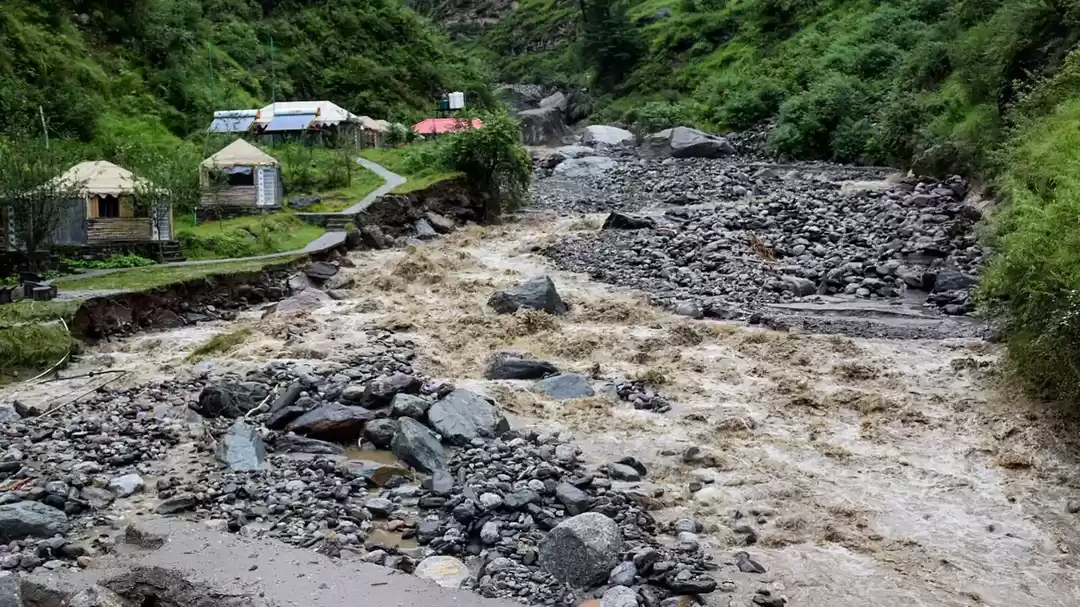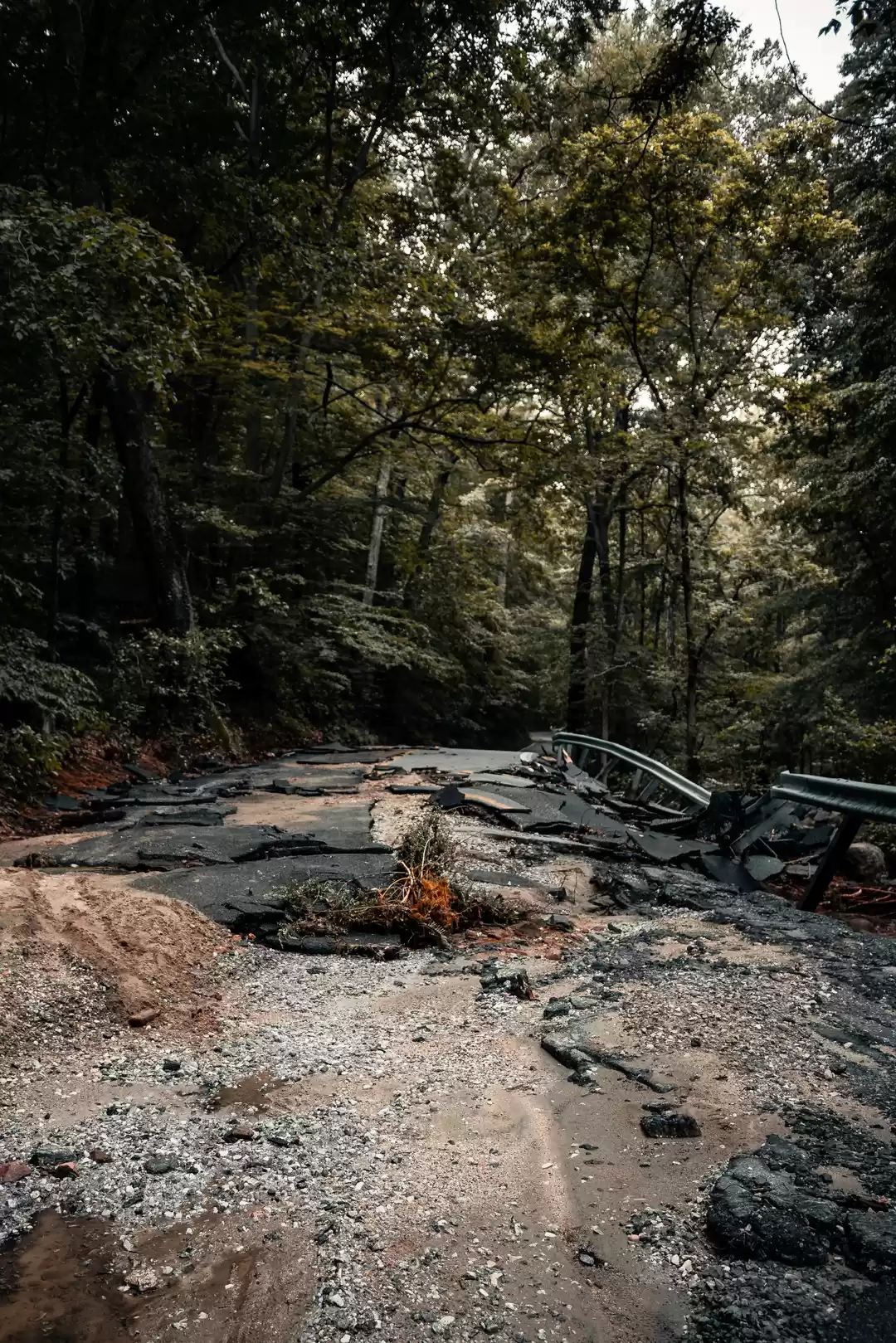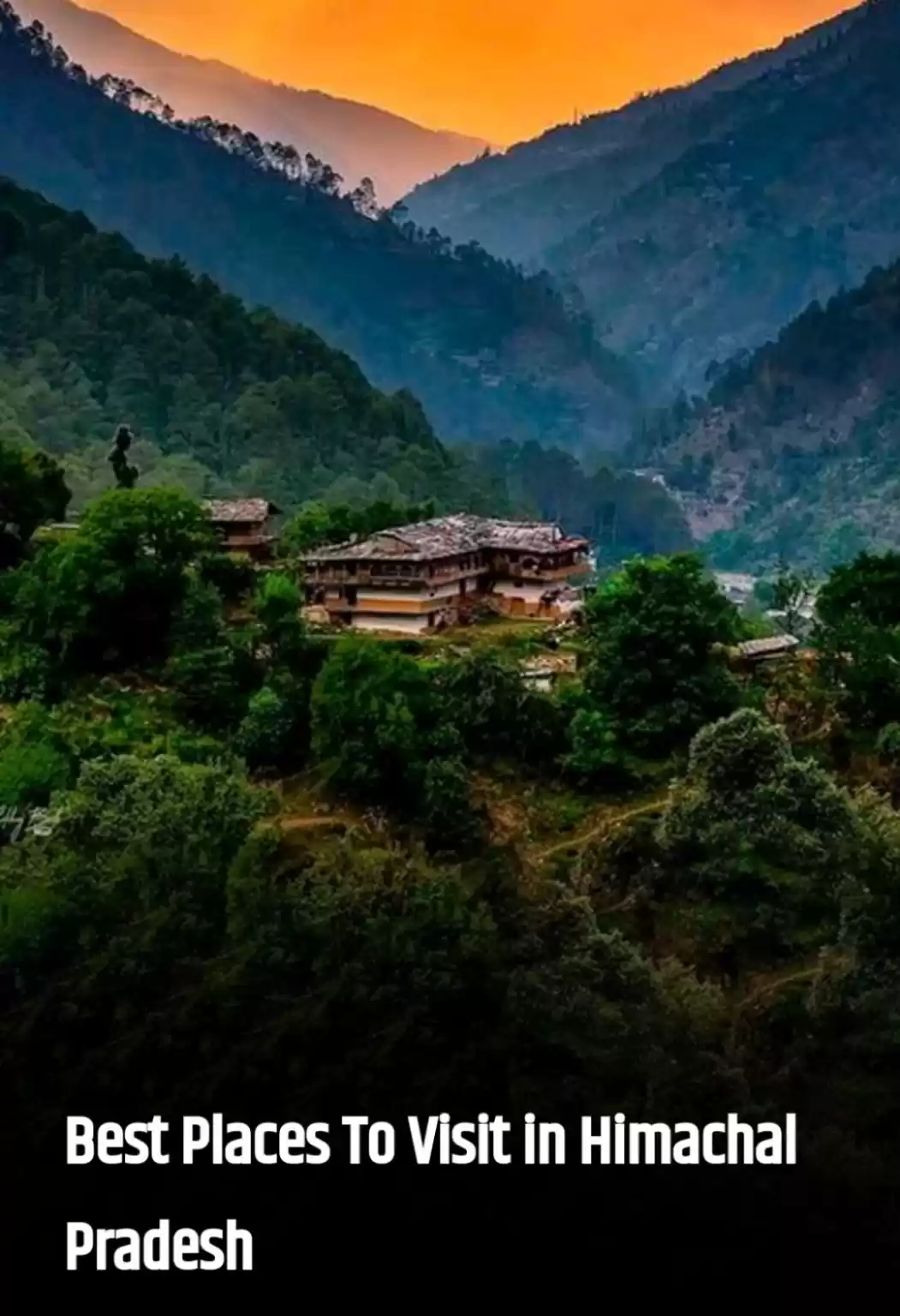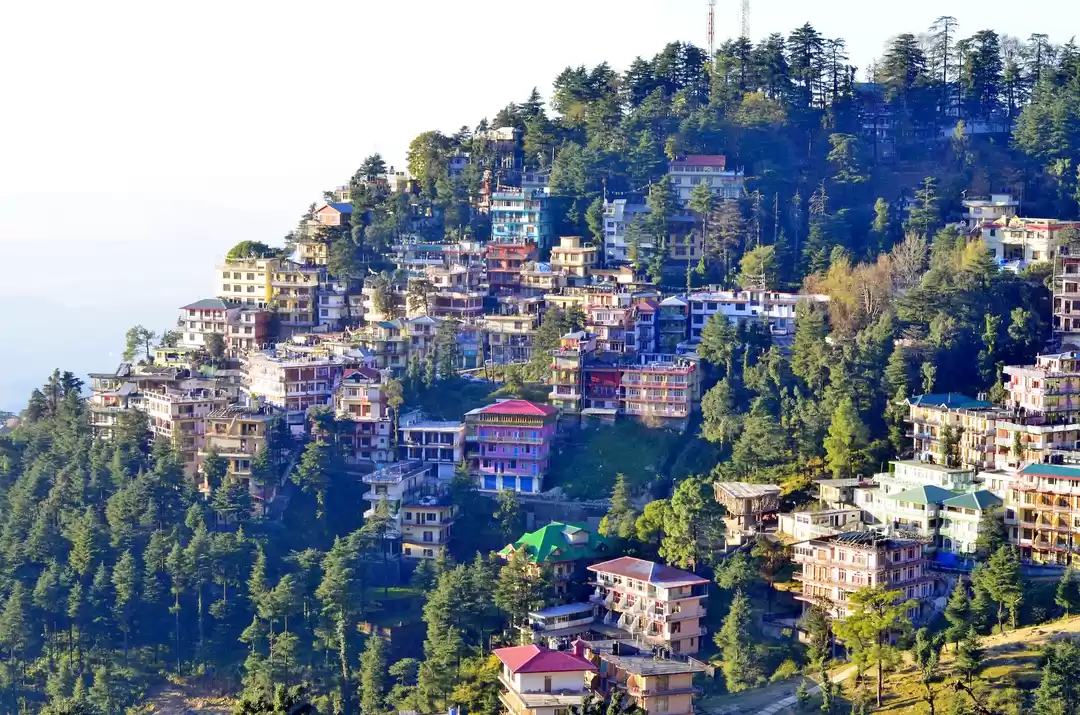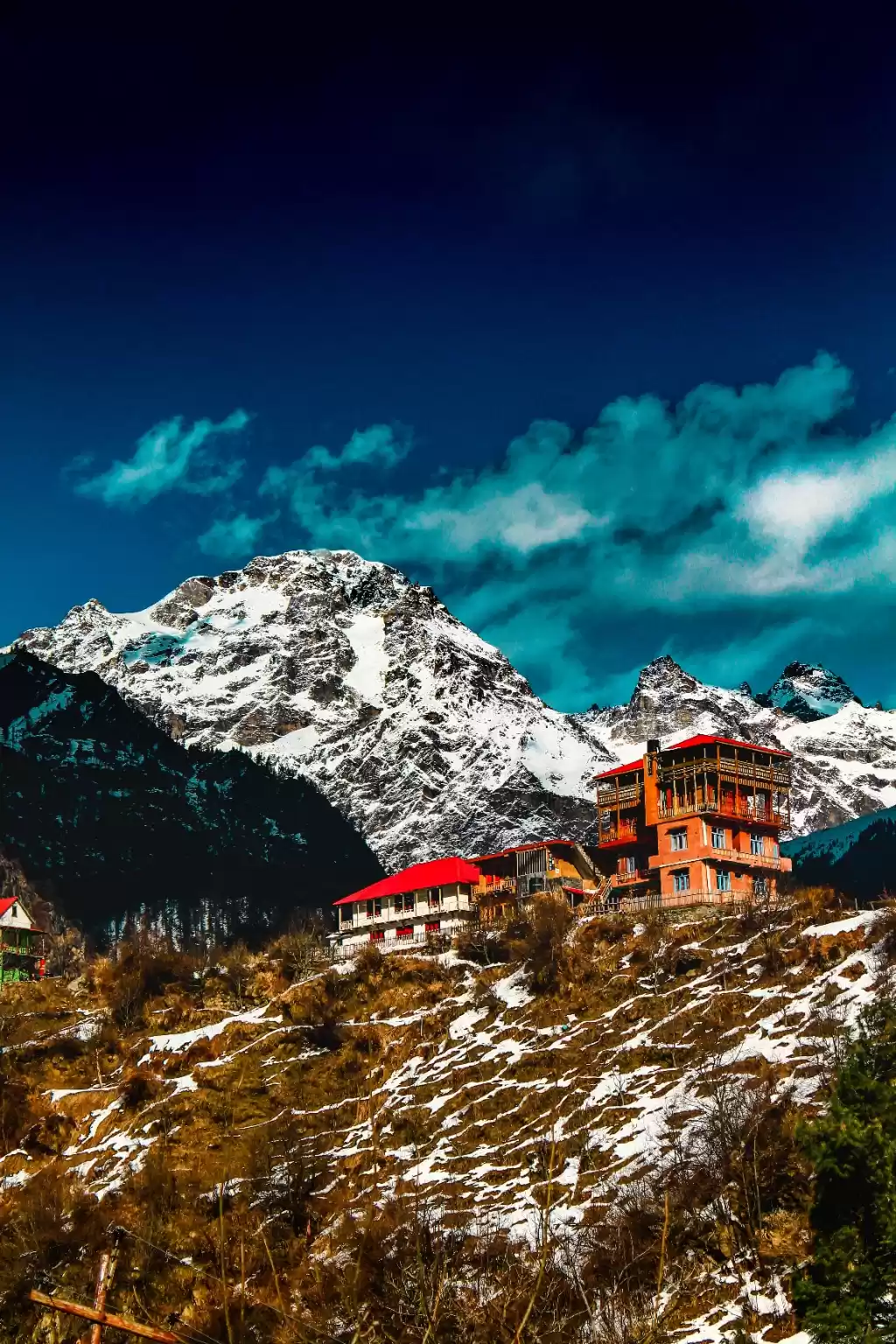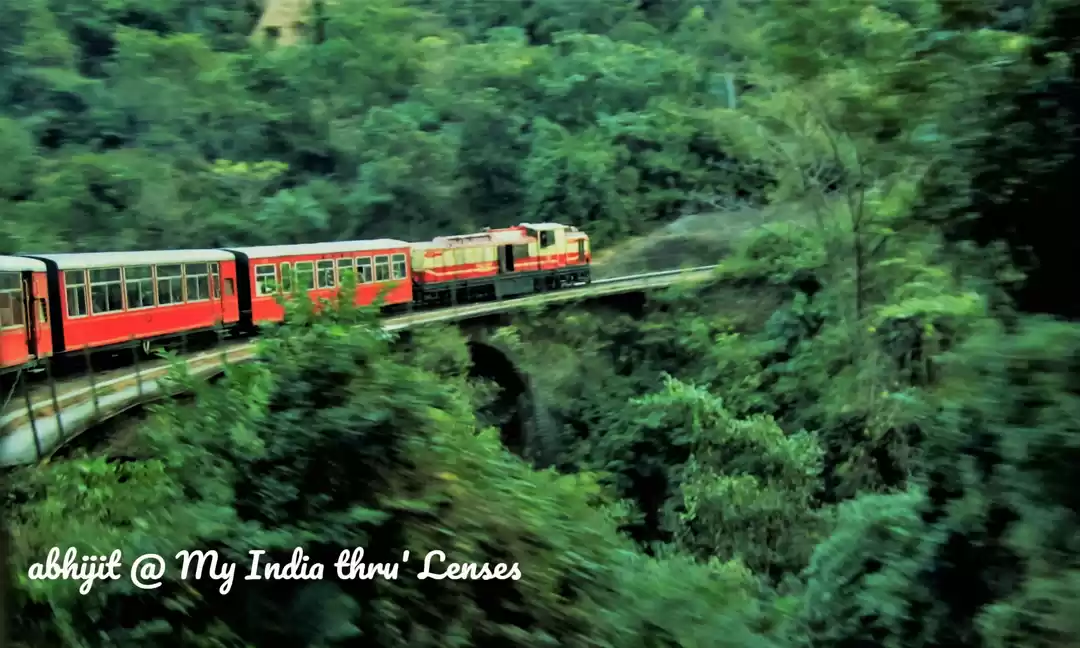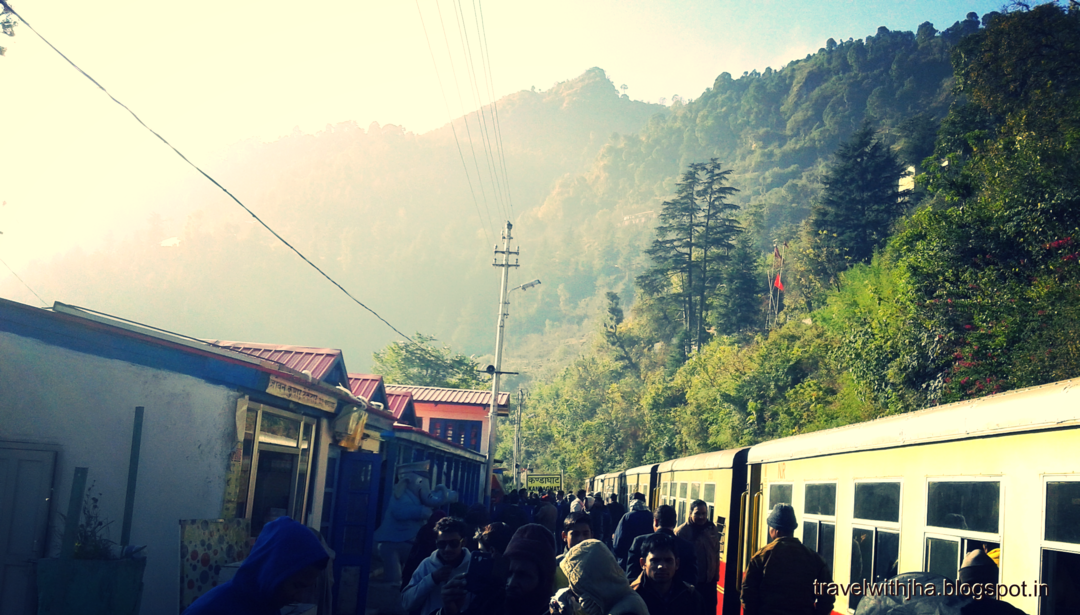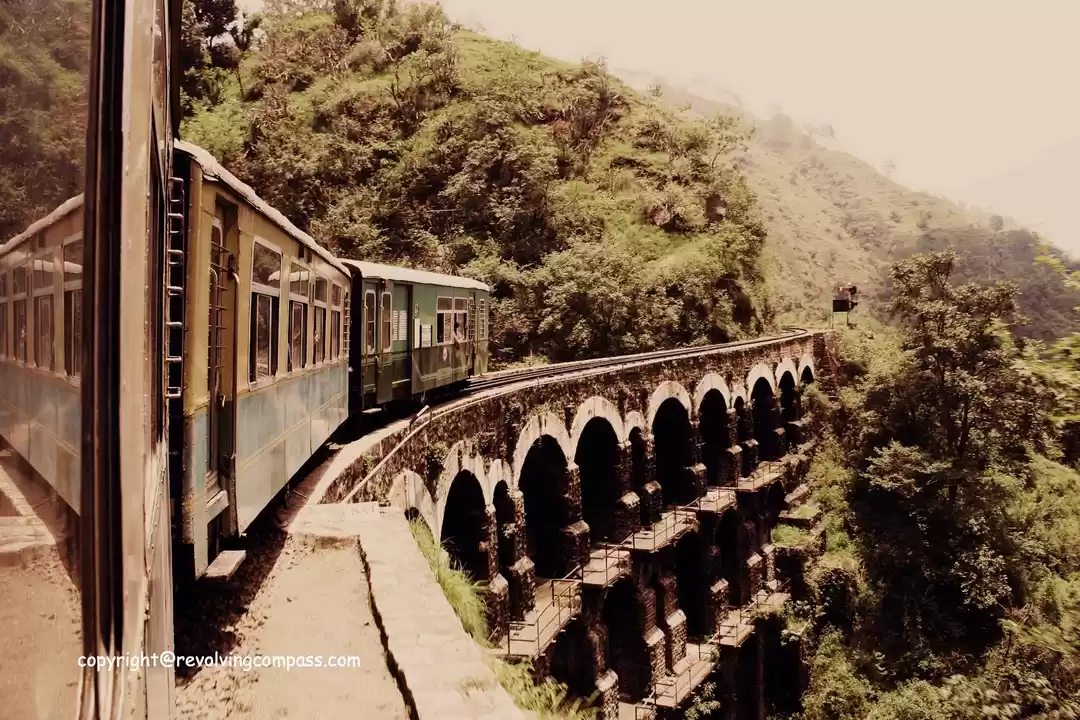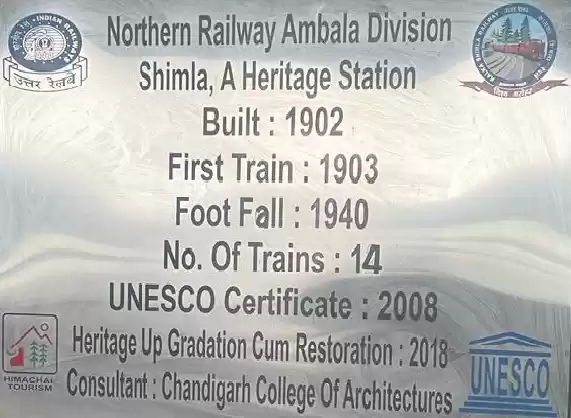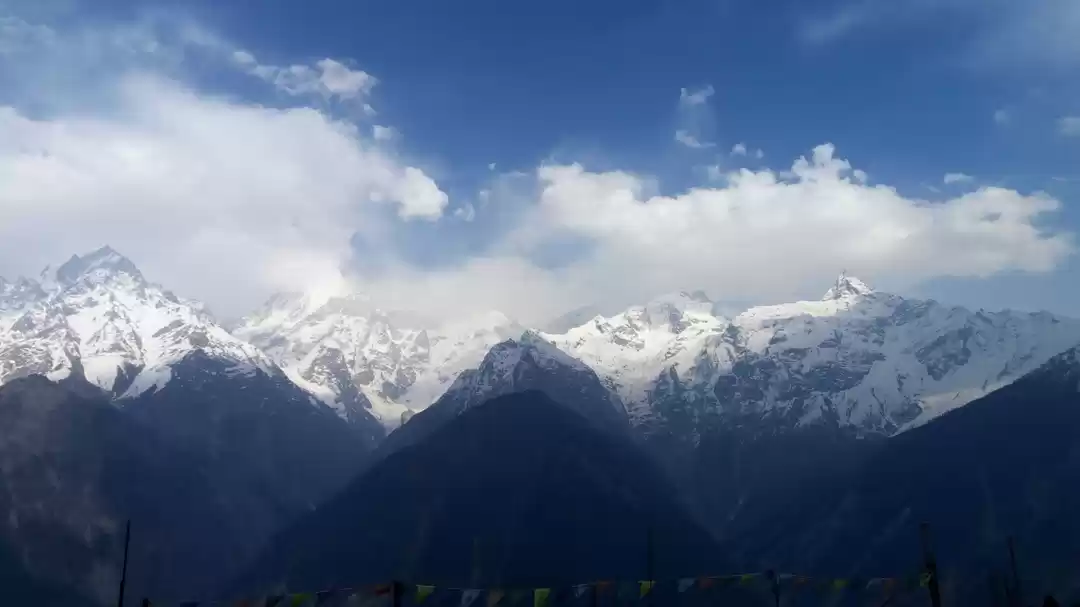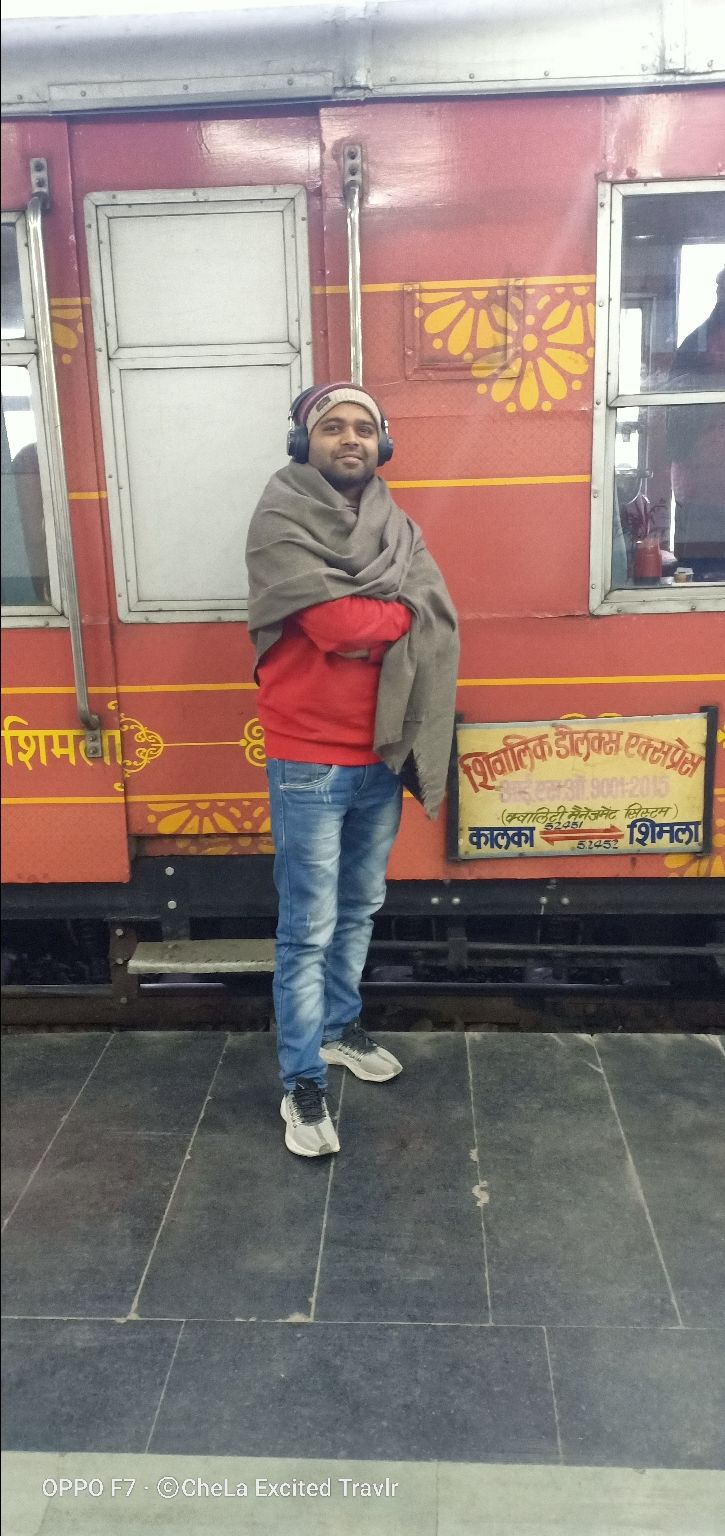
Hello Travelholic world ,
Hope all is well
CheLa The Excited Traveler welcome you again,
This time we covered UNESCO Heritage sites mountain train journey =Kalka-Shimla Toy Train Journey @ UNESCO Heritage sites 2008.
Hello Travelholic world ,
Hope all is well
CheLa The Excited Traveler welcome you again,
This time we covered with my friend Sumit and Vikas ,UNESCO Heritage sites mountain train journey =Kalka-Shimla Toy Train Journey @ UNESCO Heritage sites 2008.
Hello Travelholic world ,
Hope all is well
CheLa The Excited Traveler welcome you again,
This time we covered with my friend Sumit and Vikas ,UNESCO Heritage sites mountain train journey =Kalka-Shimla Toy Train Journey @ UNESCO Heritage sites 2008.
Kalka-Shimla Toy Train, a UNESCO World Heritage Site that connects the Indian plains to the ‘Queen of Hills,’ Shimla. Built in 1903, this toy train ride is one of India’s most incredible feats of engineering covering a staggering 102 tunnels, 864 bridges and 919 stunning curves.
Spanning some 60 miles, the Kalka-Shimla Toy Train is said to be one of the most scenic railway journeys in India. And, with a route that encompasses a vast display of awe-inspiring landscapes, it’s easy to see why. This journey runs on a narrow gauge from Kalka to Shimla, treating passengers with breathtaking views of rugged mountains, lush pine forests, waterfalls, valleys and picture-perfect hill stations along the way that will definitely tempt you to disembark and bask in their beauty. The whole journey takes about five and a half hours.
Hello Travelholic world ,
Hope all is well
CheLa The Excited Traveler welcome you again,
This time we covered with my friend Sumit and Vikas ,UNESCO Heritage sites mountain train journey =Kalka-Shimla Toy Train Journey @ UNESCO Heritage sites 2008.
Kalka-Shimla Toy Train, a UNESCO World Heritage Site that connects the Indian plains to the ‘Queen of Hills,’ Shimla. Built in 1903, this toy train ride is one of India’s most incredible feats of engineering covering a staggering 102 tunnels, 864 bridges and 919 stunning curves.
Spanning some 60 miles, the Kalka-Shimla Toy Train is said to be one of the most scenic railway journeys in India. And, with a route that encompasses a vast display of awe-inspiring landscapes, it’s easy to see why. This journey runs on a narrow gauge from Kalka to Shimla, treating passengers with breathtaking views of rugged mountains, lush pine forests, waterfalls, valleys and picture-perfect hill stations along the way that will definitely tempt you to disembark and bask in their beauty. The whole journey takes about five and a half hours.
History
Soon after the first Anglo-Gurkha war, Shimla (then, called as Simla) was established by the British. In 1864, the town became the summer capital of the British Empire and even served as the British army’s headquarters. But the only snag was connectivity – to reach Shimla, the only mode of transportation was a bullock cart that traversed through mountainous terrain, which was unsteady, dangerous and took a long amount of time. So, for easy and quick access to Shimla, the Kalka-Shimla narrow gauge was started in 1903 and was referred as the ‘British Jewel of the Orient’. The maiden journey of the train was taken by the then Viceroy of India, Lord Curzon. And since then, the train has been operating regularly and has become an iconic symbol of Shimla that is cherished by locals and tourists alike.
Hello Travelholic world ,
Hope all is well
CheLa The Excited Traveler welcome you again,
This time we covered with my friend Sumit and Vikas ,UNESCO Heritage sites mountain train journey =Kalka-Shimla Toy Train Journey @ UNESCO Heritage sites 2008.
Kalka-Shimla Toy Train, a UNESCO World Heritage Site that connects the Indian plains to the ‘Queen of Hills,’ Shimla. Built in 1903, this toy train ride is one of India’s most incredible feats of engineering covering a staggering 102 tunnels, 864 bridges and 919 stunning curves.
Spanning some 60 miles, the Kalka-Shimla Toy Train is said to be one of the most scenic railway journeys in India. And, with a route that encompasses a vast display of awe-inspiring landscapes, it’s easy to see why. This journey runs on a narrow gauge from Kalka to Shimla, treating passengers with breathtaking views of rugged mountains, lush pine forests, waterfalls, valleys and picture-perfect hill stations along the way that will definitely tempt you to disembark and bask in their beauty. The whole journey takes about five and a half hours.
History
Soon after the first Anglo-Gurkha war, Shimla (then, called as Simla) was established by the British. In 1864, the town became the summer capital of the British Empire and even served as the British army’s headquarters. But the only snag was connectivity – to reach Shimla, the only mode of transportation was a bullock cart that traversed through mountainous terrain, which was unsteady, dangerous and took a long amount of time. So, for easy and quick access to Shimla, the Kalka-Shimla narrow gauge was started in 1903 and was referred as the ‘British Jewel of the Orient’. The maiden journey of the train was taken by the then Viceroy of India, Lord Curzon. And since then, the train has been operating regularly and has become an iconic symbol of Shimla that is cherished by locals and tourists alike.
The route
The Kalka-Shimla train allows passengers to see mesmerizing sights and hamlets that they would have otherwise never witnessed. The route starts from Kalka, located in the Panchkula district of Haryana, from zero metres, winding its way upwards along the narrow track. At 656 metres, the train starts climbing uphill, passing through the 18 stations and reaches Shimla, located at an elevation of 2, 076 metres in the lap of the Himalayas. As the train ascends through steep mountains and curves, its speed slows down.
The 18 stations it stops at are: Taksal (6 km), Gumman (11 km), Koti (17 km), Sonwara (27 km), Dharampur (33 km), Kumarhatti (39 km), Barog (43 km), Solan (47 km), Salogra (53 km), Kandaghat (59 km), Kanoh (65 km), Kathleegat (73 km), Shoghi (78 km), Taradevi (85 km), Jutoh (90 km), Summer Hill (93 km) and finally, Shimla (96 km). At every station, there are tea and snack stalls, so passengers can relish in the local food along the way. The journey is magical, to say the least.
The highlight of the journey is Barog station, which has the longest tunnel (tunnel 33) on the route, stretching 1, 143.61 metres. Also, bridge number 226 is an architectural marvel that passes over a deep valley surrounded by steep hills on both sides. However, it is difficult to see this bridge from the carriage.
Thanks for pay attention and motivate me
Best Regards
CheLa
Hello Travelholic world ,
Hope all is well
CheLa The Excited Traveler welcome you again,
This time we covered with my friend Sumit and Vikas ,UNESCO Heritage sites mountain train journey =Kalka-Shimla Toy Train Journey @ UNESCO Heritage sites 2008.
Kalka-Shimla Toy Train, a UNESCO World Heritage Site that connects the Indian plains to the ‘Queen of Hills,’ Shimla. Built in 1903, this toy train ride is one of India’s most incredible feats of engineering covering a staggering 102 tunnels, 864 bridges and 919 stunning curves.
Spanning some 60 miles, the Kalka-Shimla Toy Train is said to be one of the most scenic railway journeys in India. And, with a route that encompasses a vast display of awe-inspiring landscapes, it’s easy to see why. This journey runs on a narrow gauge from Kalka to Shimla, treating passengers with breathtaking views of rugged mountains, lush pine forests, waterfalls, valleys and picture-perfect hill stations along the way that will definitely tempt you to disembark and bask in their beauty. The whole journey takes about five and a half hours.
History
Soon after the first Anglo-Gurkha war, Shimla (then, called as Simla) was established by the British. In 1864, the town became the summer capital of the British Empire and even served as the British army’s headquarters. But the only snag was connectivity – to reach Shimla, the only mode of transportation was a bullock cart that traversed through mountainous terrain, which was unsteady, dangerous and took a long amount of time. So, for easy and quick access to Shimla, the Kalka-Shimla narrow gauge was started in 1903 and was referred as the ‘British Jewel of the Orient’. The maiden journey of the train was taken by the then Viceroy of India, Lord Curzon. And since then, the train has been operating regularly and has become an iconic symbol of Shimla that is cherished by locals and tourists alike.
The route
The Kalka-Shimla train allows passengers to see mesmerizing sights and hamlets that they would have otherwise never witnessed. The route starts from Kalka, located in the Panchkula district of Haryana, from zero metres, winding its way upwards along the narrow track. At 656 metres, the train starts climbing uphill, passing through the 18 stations and reaches Shimla, located at an elevation of 2, 076 metres in the lap of the Himalayas. As the train ascends through steep mountains and curves, its speed slows down.
The 18 stations it stops at are: Taksal (6 km), Gumman (11 km), Koti (17 km), Sonwara (27 km), Dharampur (33 km), Kumarhatti (39 km), Barog (43 km), Solan (47 km), Salogra (53 km), Kandaghat (59 km), Kanoh (65 km), Kathleegat (73 km), Shoghi (78 km), Taradevi (85 km), Jutoh (90 km), Summer Hill (93 km) and finally, Shimla (96 km). At every station, there are tea and snack stalls, so passengers can relish in the local food along the way. The journey is magical, to say the least.
The highlight of the journey is Barog station, which has the longest tunnel (tunnel 33) on the route, stretching 1, 143.61 metres. Also, bridge number 226 is an architectural marvel that passes over a deep valley surrounded by steep hills on both sides. However, it is difficult to see this bridge from the carriage.
Thanks for pay attention and motivate me
Best Regards
CheLa
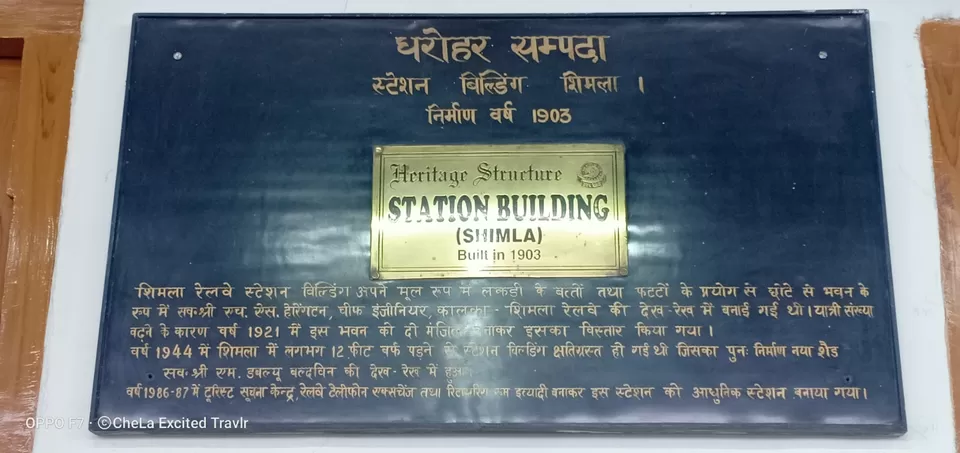
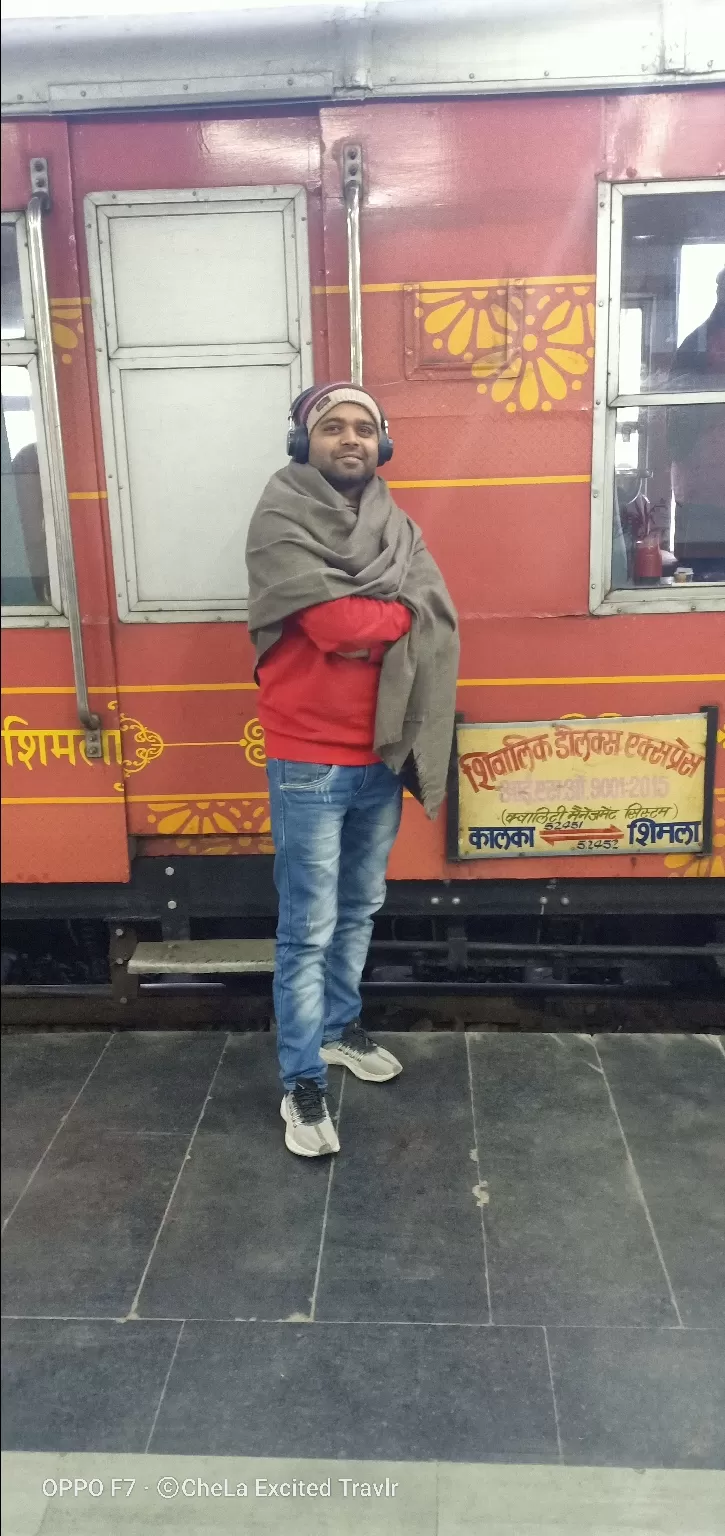
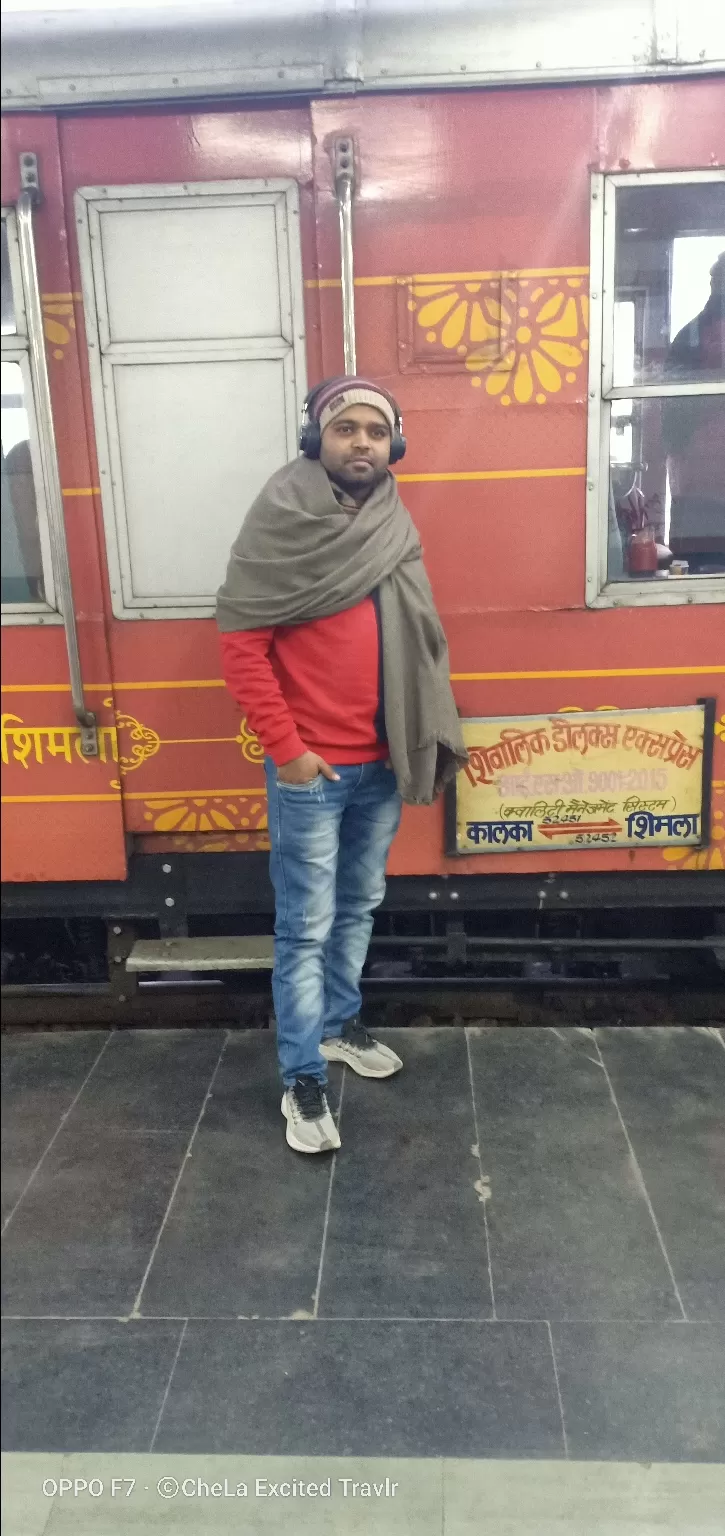
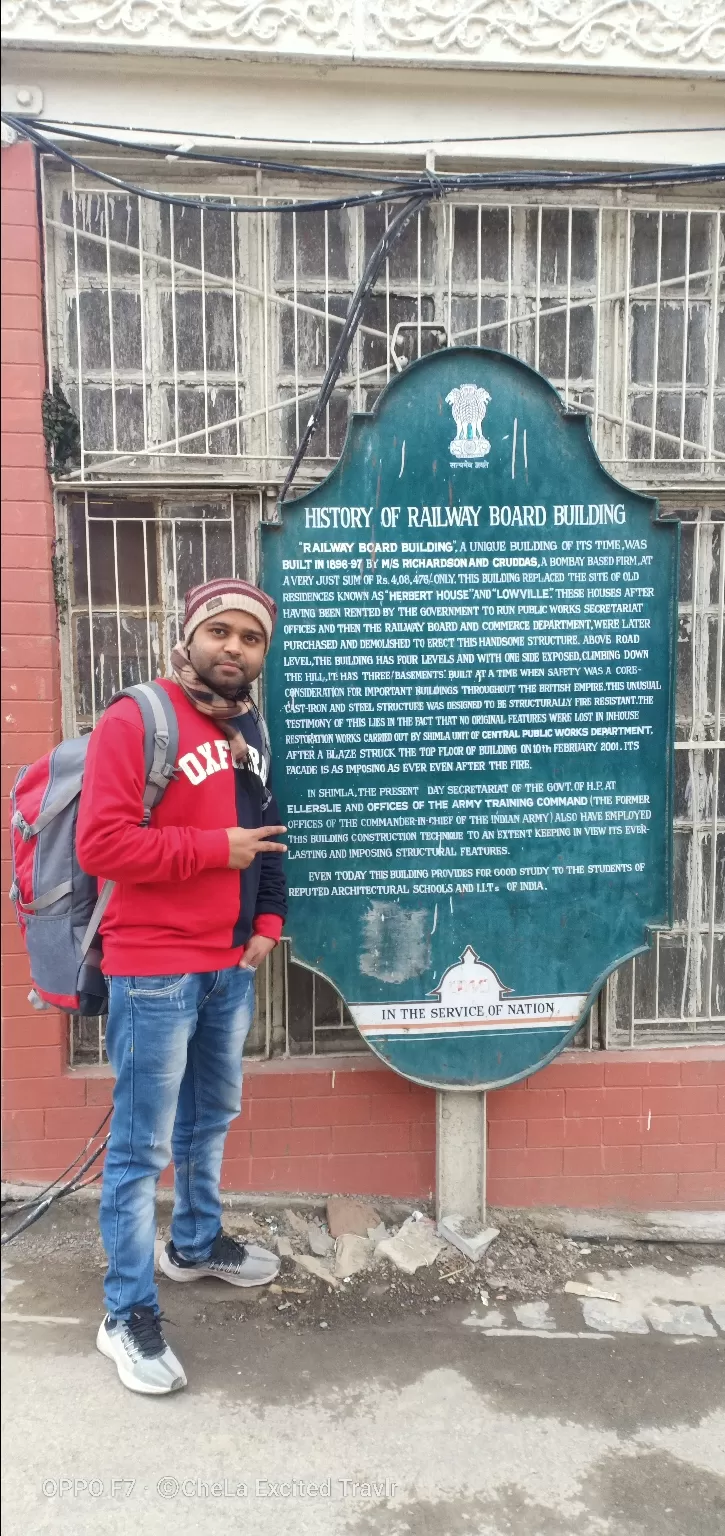
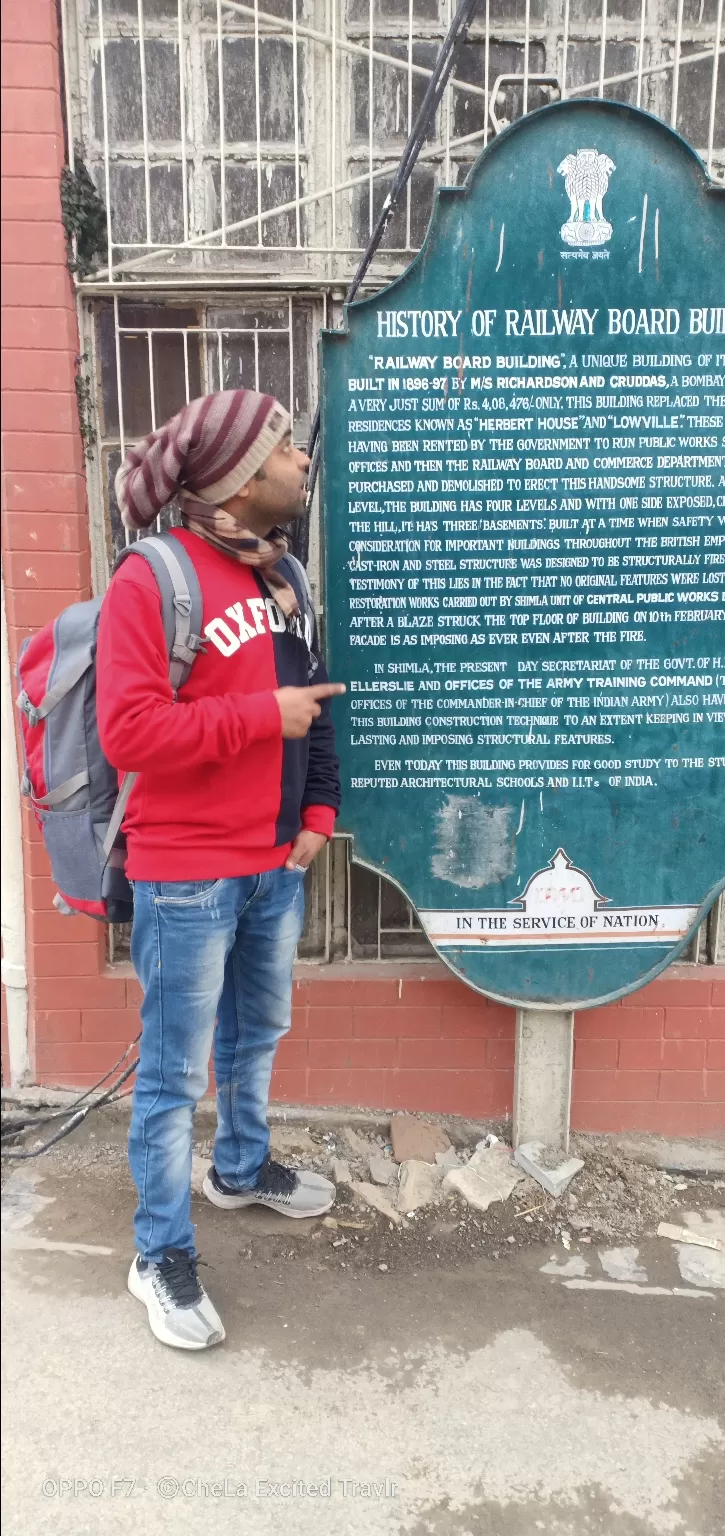
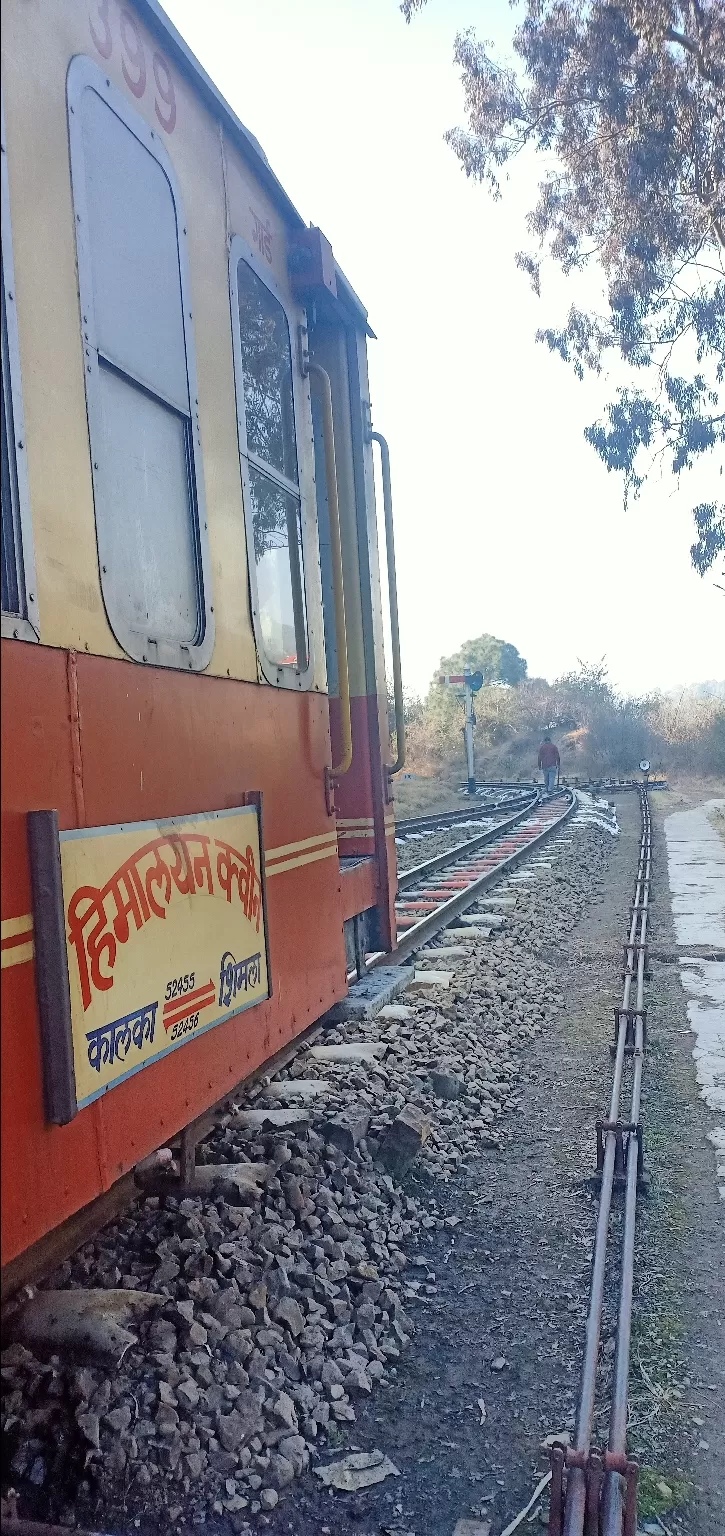
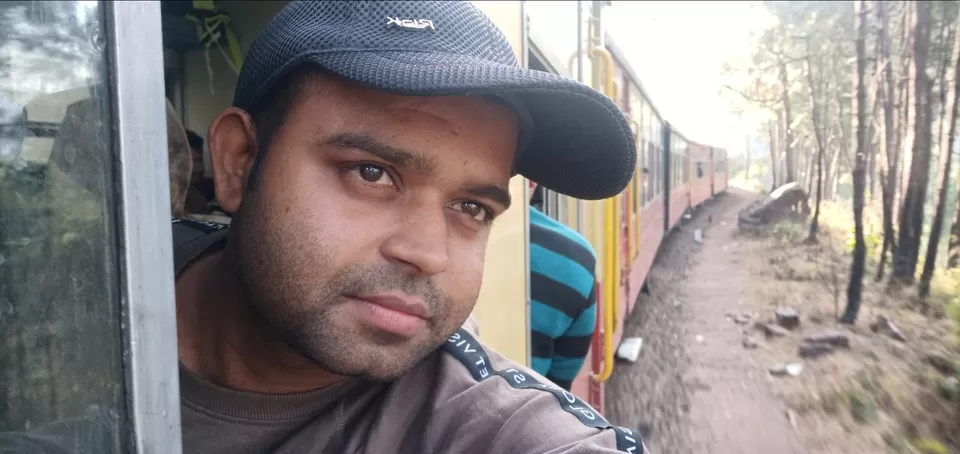
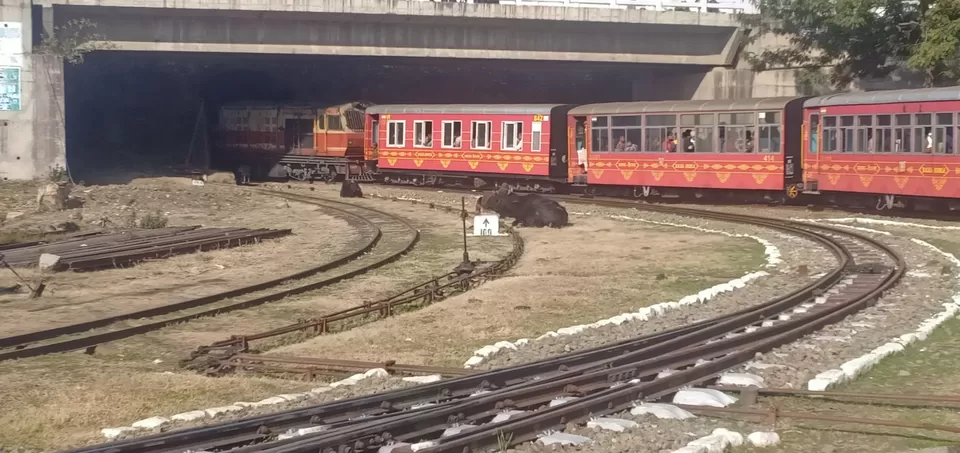
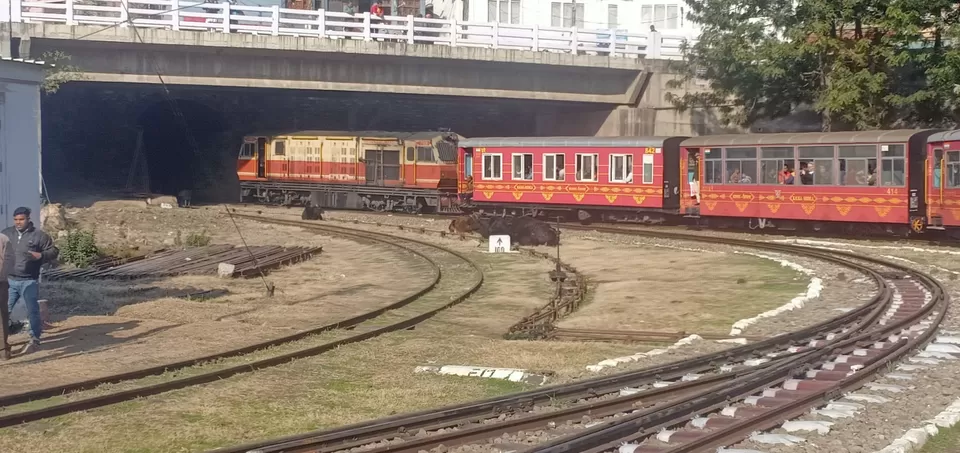
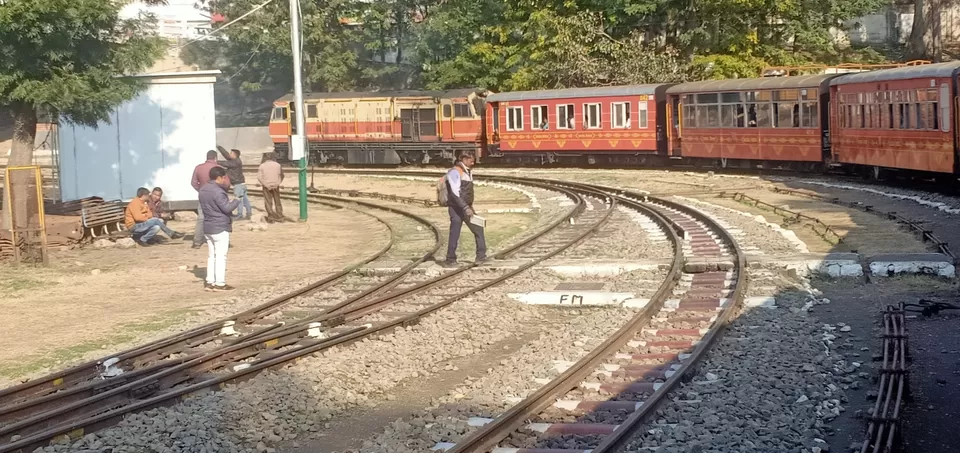
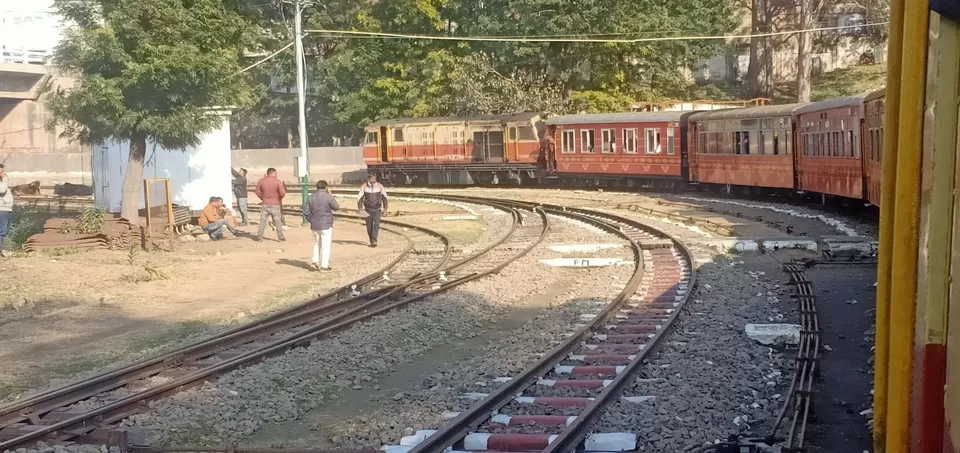
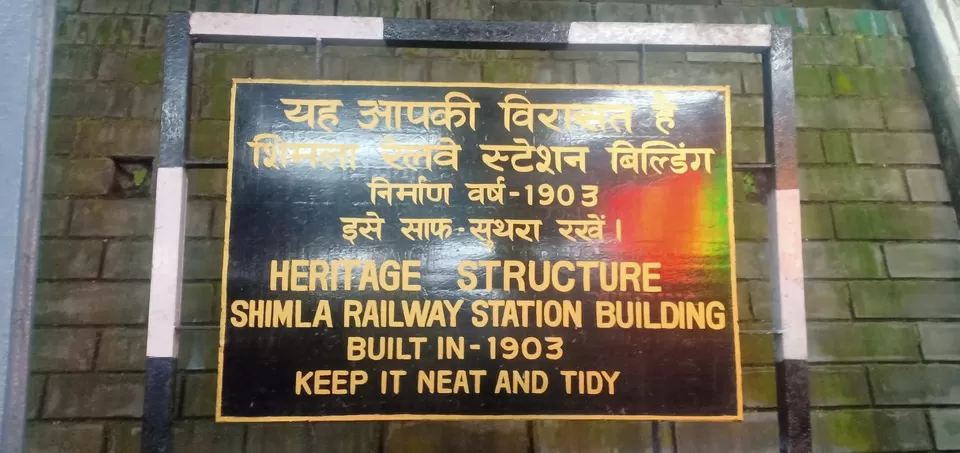
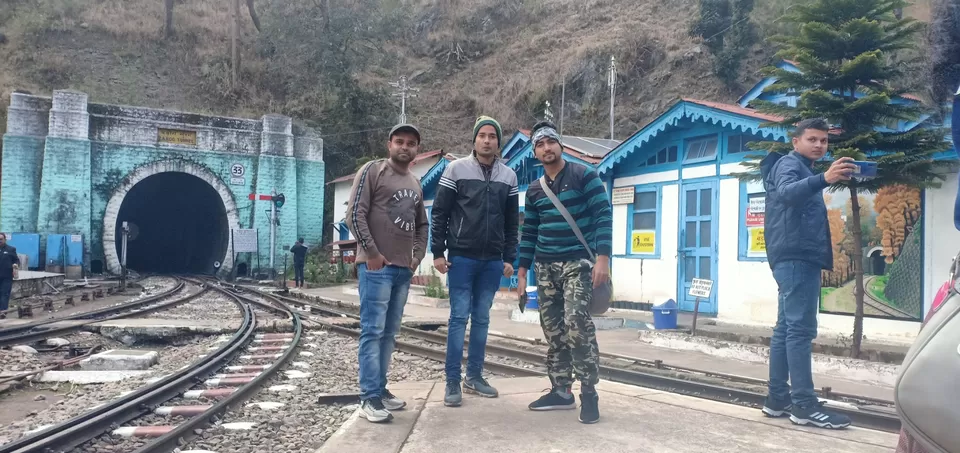
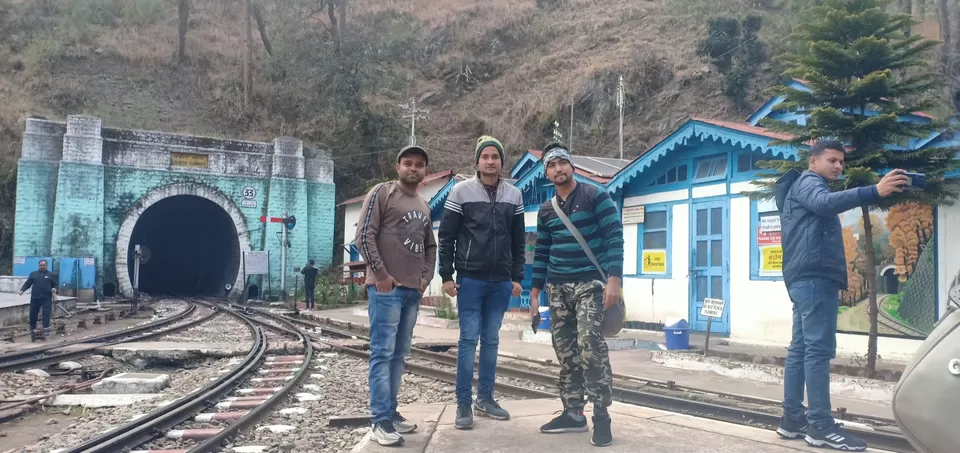
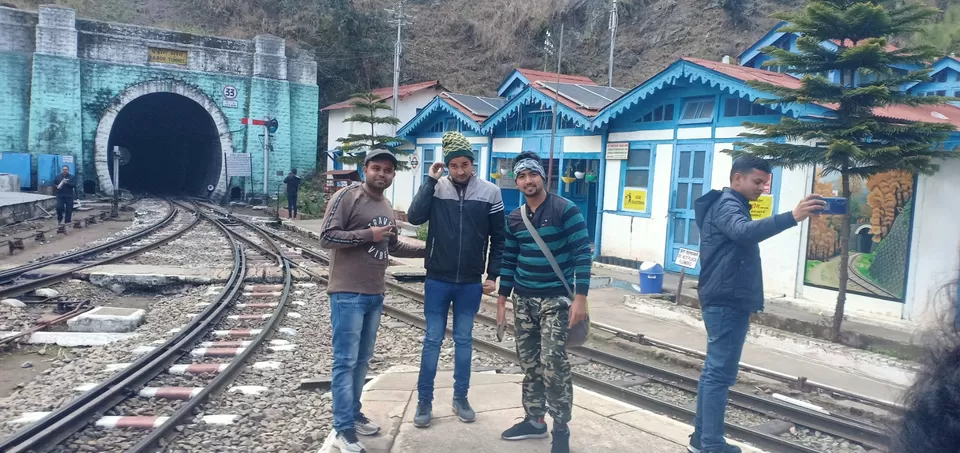
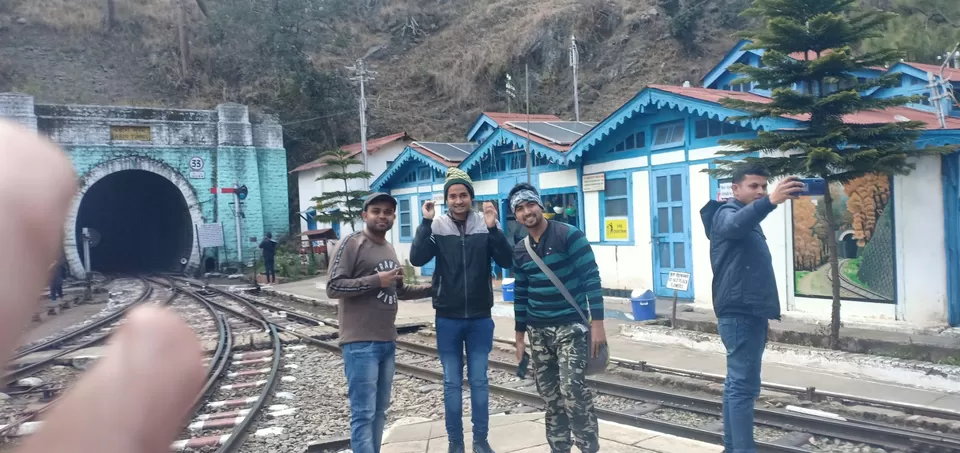
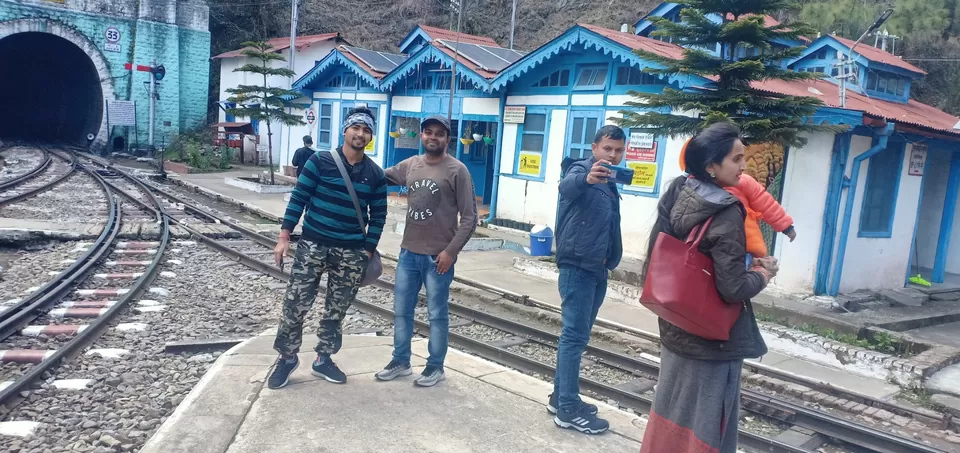
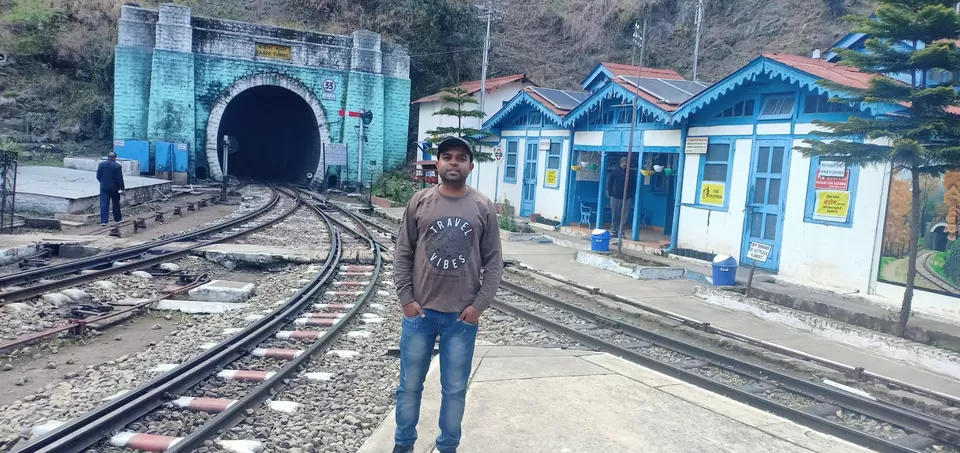
Hello Travelholic world ,
Hope all is well
CheLa The Excited Traveler welcome you again,
This time we covered with my friend Sumit and Vikas ,UNESCO Heritage sites mountain train journey =Kalka-Shimla Toy Train Journey @ UNESCO Heritage sites 2008.
Kalka-Shimla Toy Train, a UNESCO World Heritage Site that connects the Indian plains to the ‘Queen of Hills,’ Shimla. Built in 1903, this toy train ride is one of India’s most incredible feats of engineering covering a staggering 102 tunnels, 864 bridges and 919 stunning curves.
Spanning some 60 miles, the Kalka-Shimla Toy Train is said to be one of the most scenic railway journeys in India. And, with a route that encompasses a vast display of awe-inspiring landscapes, it’s easy to see why. This journey runs on a narrow gauge from Kalka to Shimla, treating passengers with breathtaking views of rugged mountains, lush pine forests, waterfalls, valleys and picture-perfect hill stations along the way that will definitely tempt you to disembark and bask in their beauty. The whole journey takes about five and a half hours.
History
Soon after the first Anglo-Gurkha war, Shimla (then, called as Simla) was established by the British. In 1864, the town became the summer capital of the British Empire and even served as the British army’s headquarters. But the only snag was connectivity – to reach Shimla, the only mode of transportation was a bullock cart that traversed through mountainous terrain, which was unsteady, dangerous and took a long amount of time. So, for easy and quick access to Shimla, the Kalka-Shimla narrow gauge was started in 1903 and was referred as the ‘British Jewel of the Orient’. The maiden journey of the train was taken by the then Viceroy of India, Lord Curzon. And since then, the train has been operating regularly and has become an iconic symbol of Shimla that is cherished by locals and tourists alike.
The route
The Kalka-Shimla train allows passengers to see mesmerizing sights and hamlets that they would have otherwise never witnessed. The route starts from Kalka, located in the Panchkula district of Haryana, from zero metres, winding its way upwards along the narrow track. At 656 metres, the train starts climbing uphill, passing through the 18 stations and reaches Shimla, located at an elevation of 2, 076 metres in the lap of the Himalayas. As the train ascends through steep mountains and curves, its speed slows down.
The 18 stations it stops at are: Taksal (6 km), Gumman (11 km), Koti (17 km), Sonwara (27 km), Dharampur (33 km), Kumarhatti (39 km), Barog (43 km), Solan (47 km), Salogra (53 km), Kandaghat (59 km), Kanoh (65 km), Kathleegat (73 km), Shoghi (78 km), Taradevi (85 km), Jutoh (90 km), Summer Hill (93 km) and finally, Shimla (96 km). At every station, there are tea and snack stalls, so passengers can relish in the local food along the way. The journey is magical, to say the least.
The highlight of the journey is Barog station, which has the longest tunnel (tunnel 33) on the route, stretching 1, 143.61 metres. Also, bridge number 226 is an architectural marvel that passes over a deep valley surrounded by steep hills on both sides. However, it is difficult to see this bridge from the carriage.
Thanks for pay attention and motivate me
Best Regards
CheLa
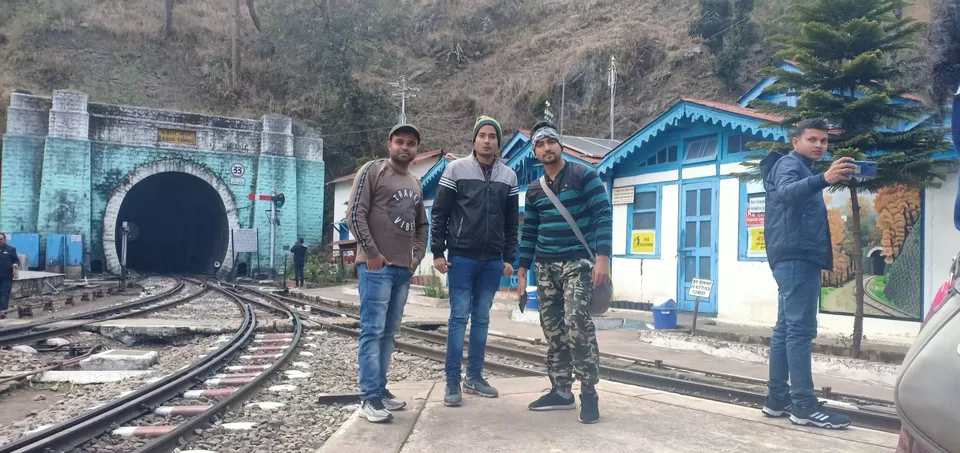
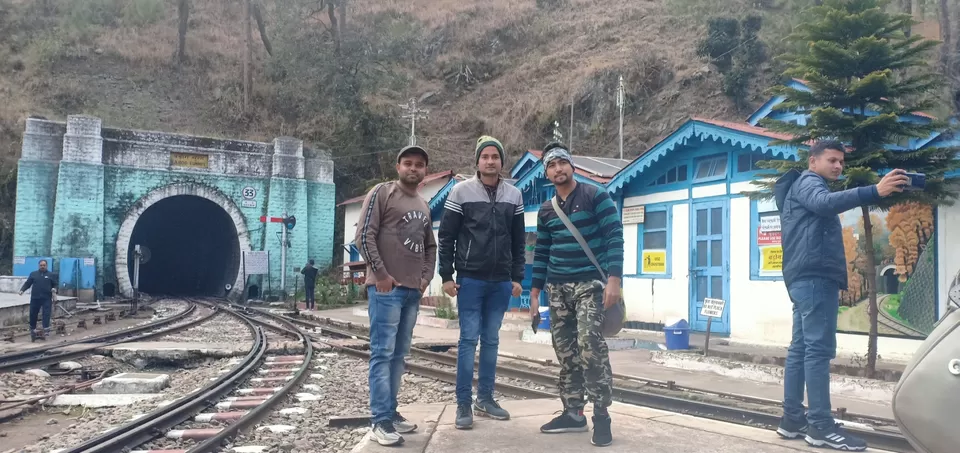
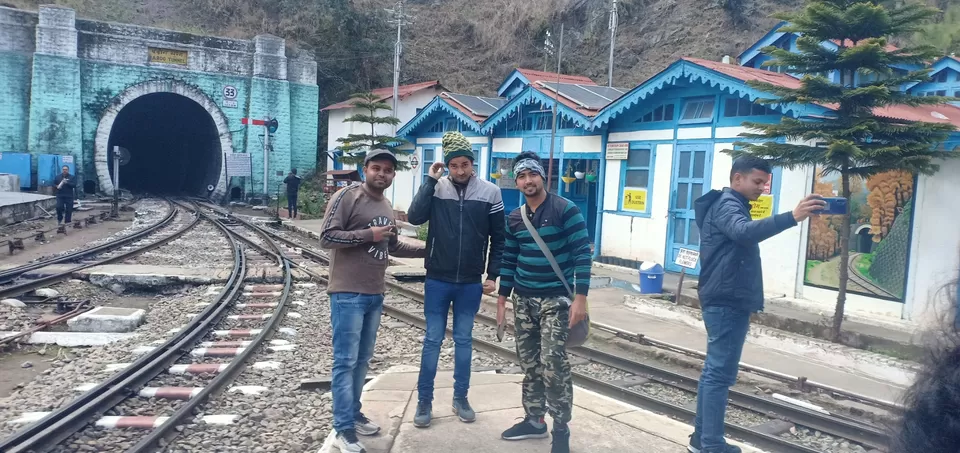
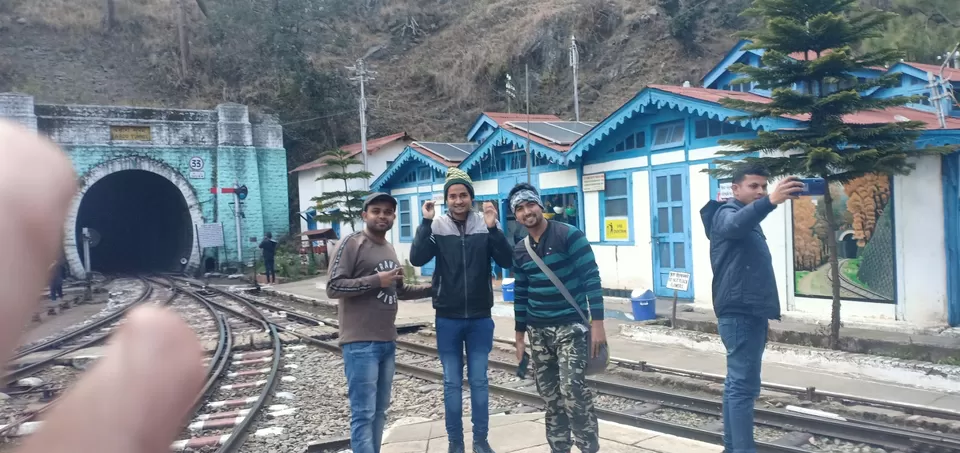
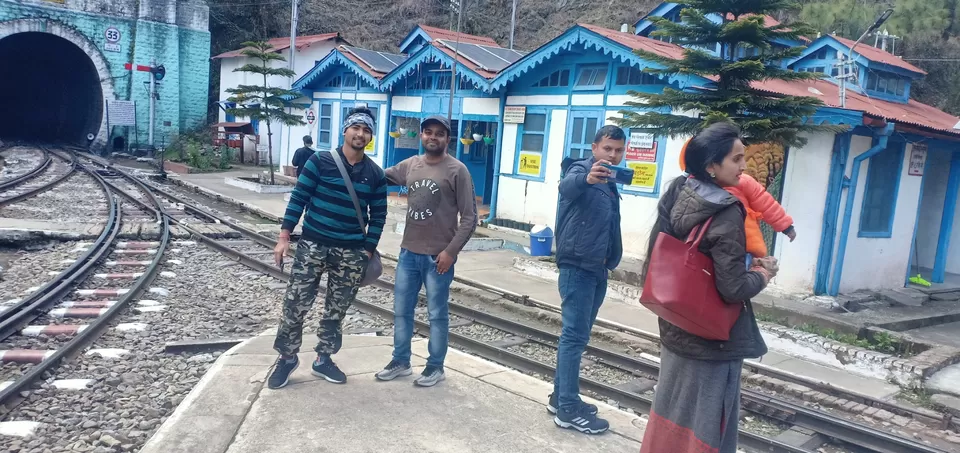
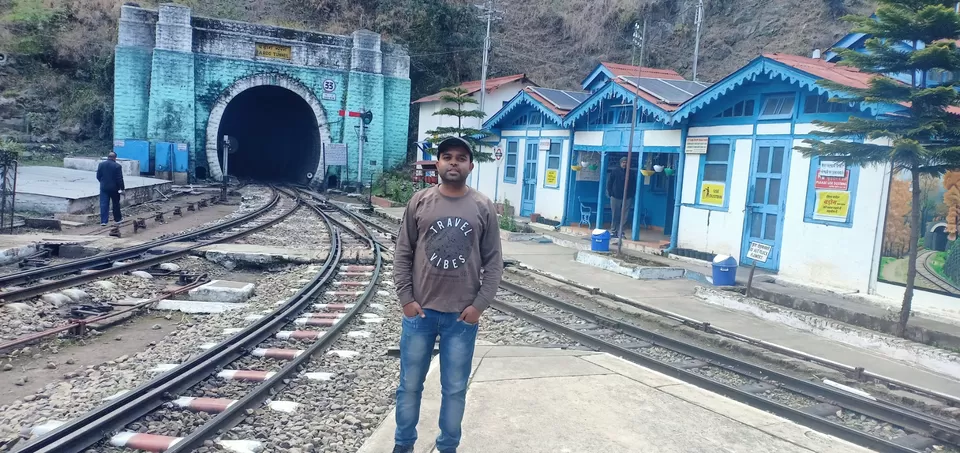
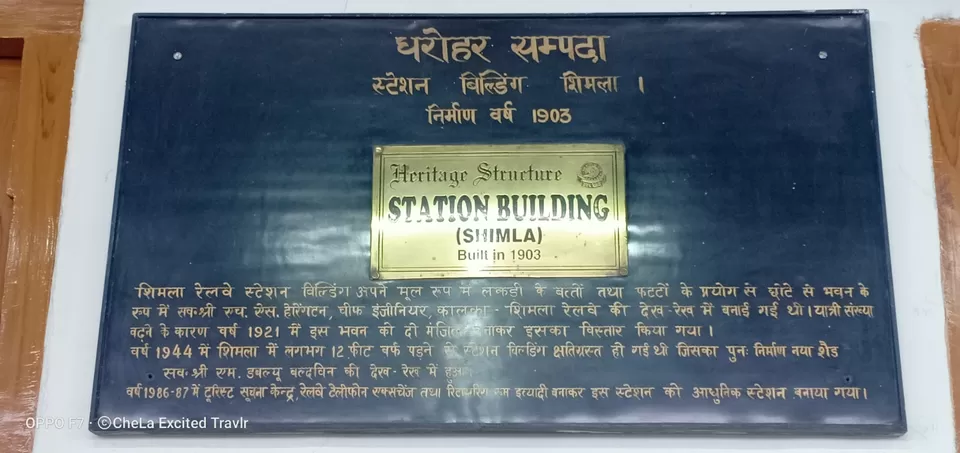
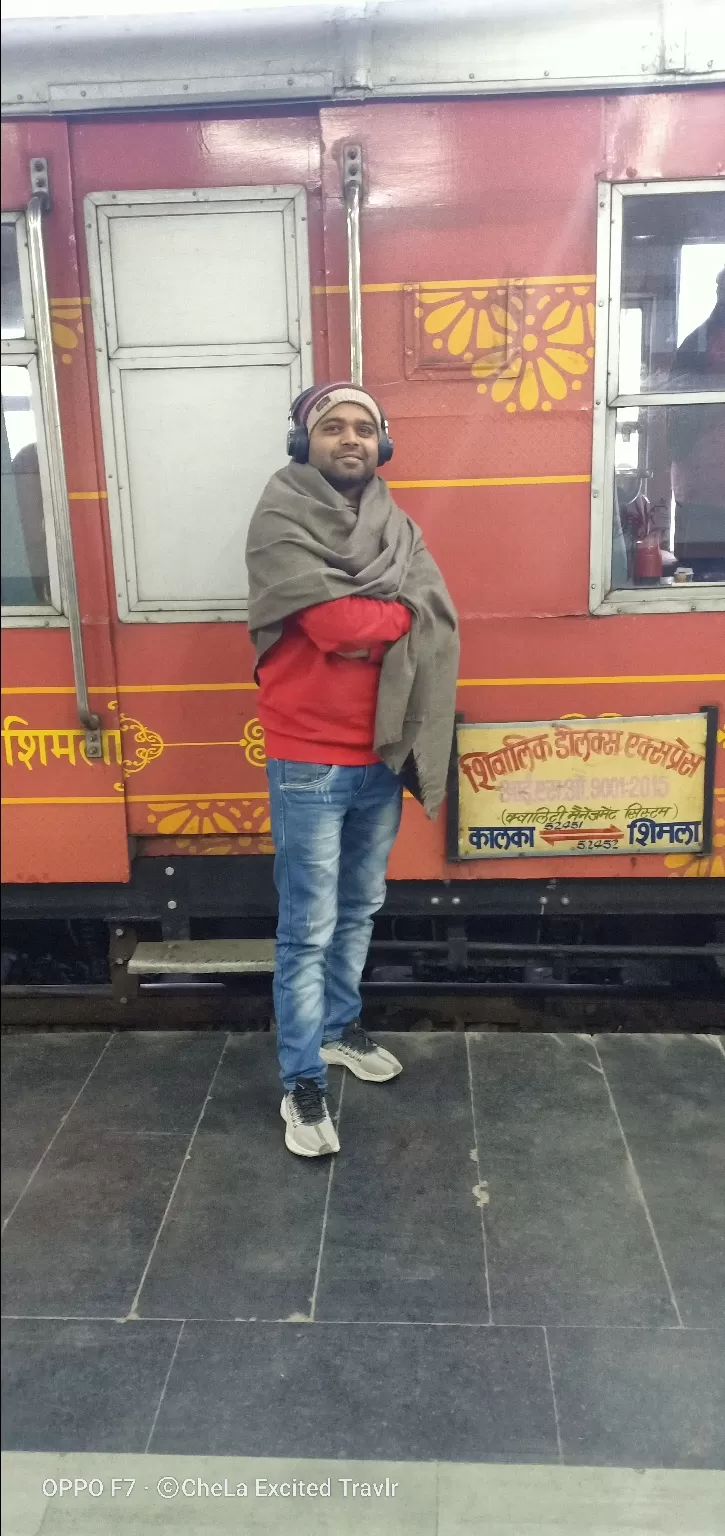
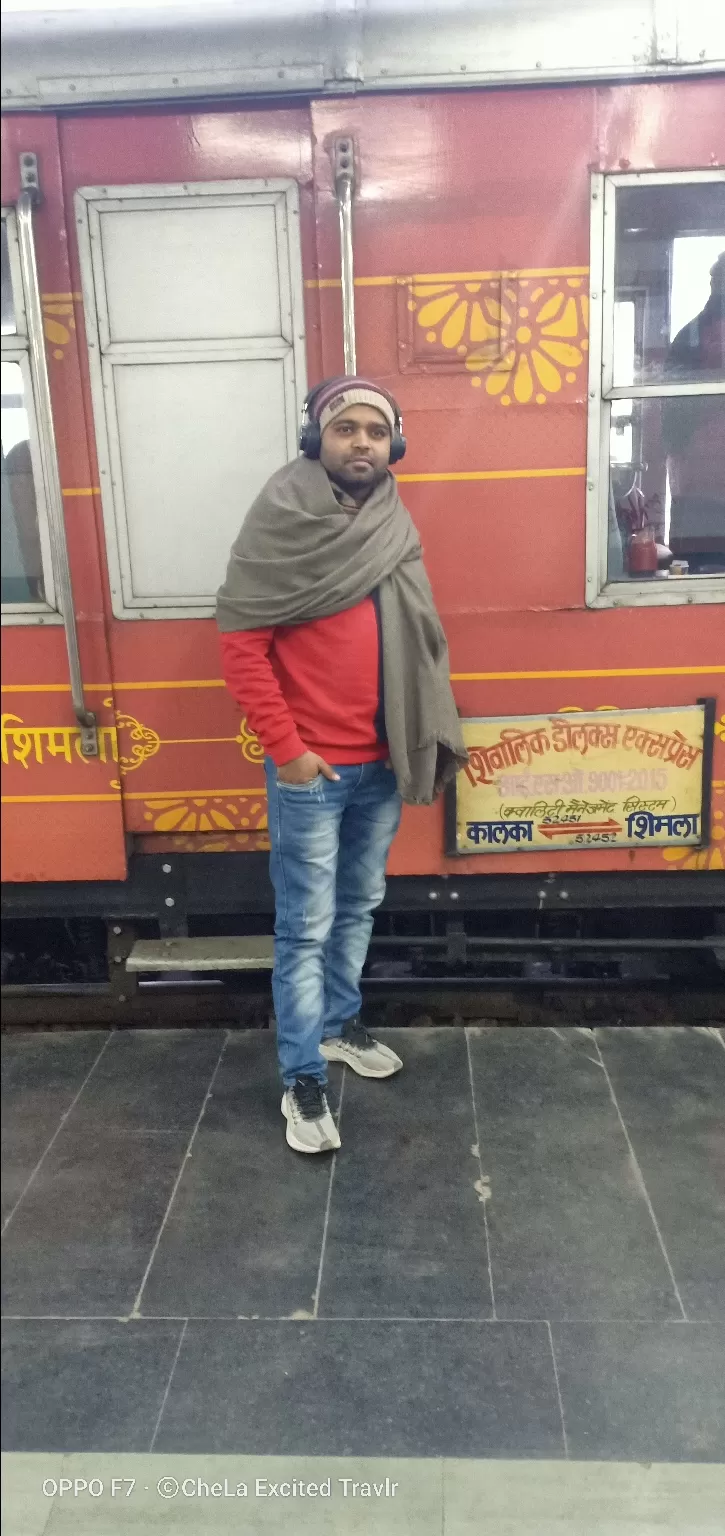
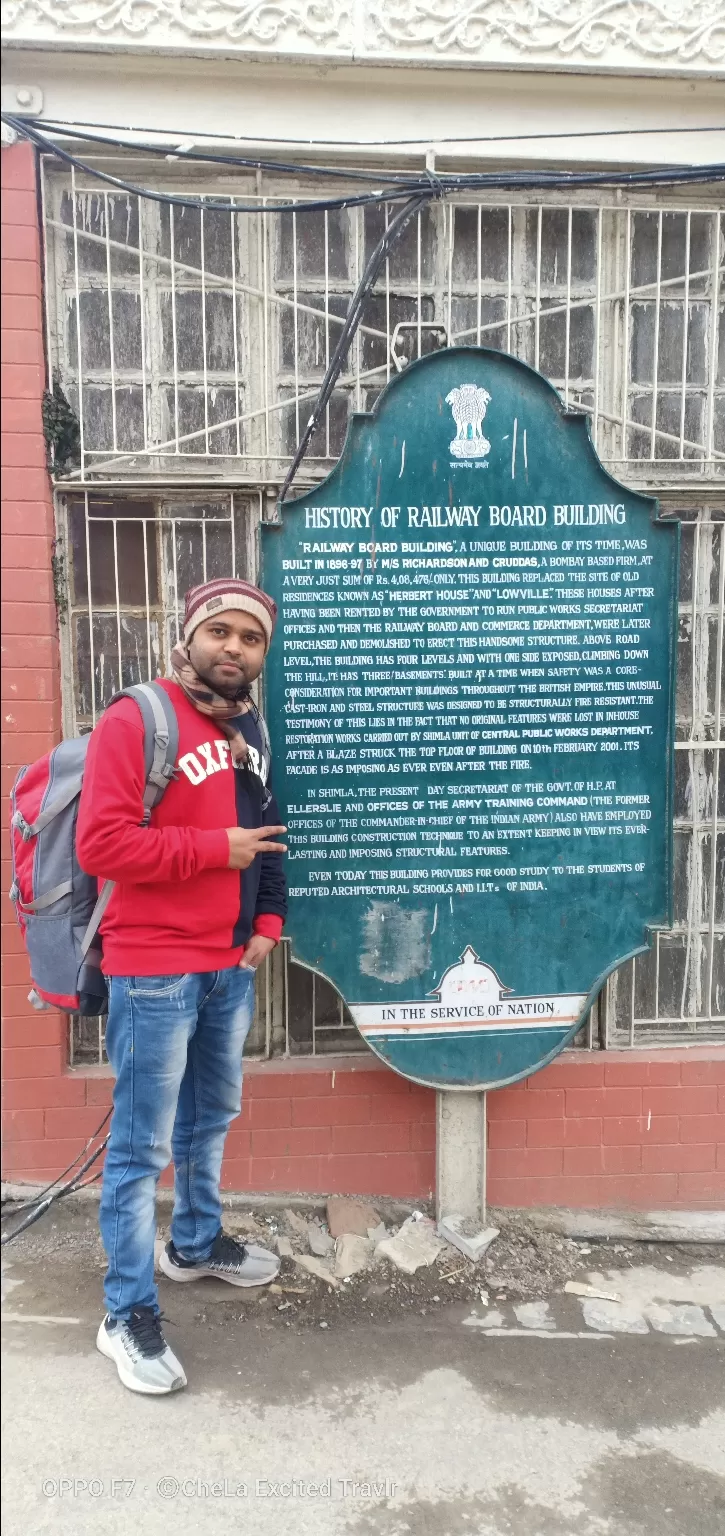
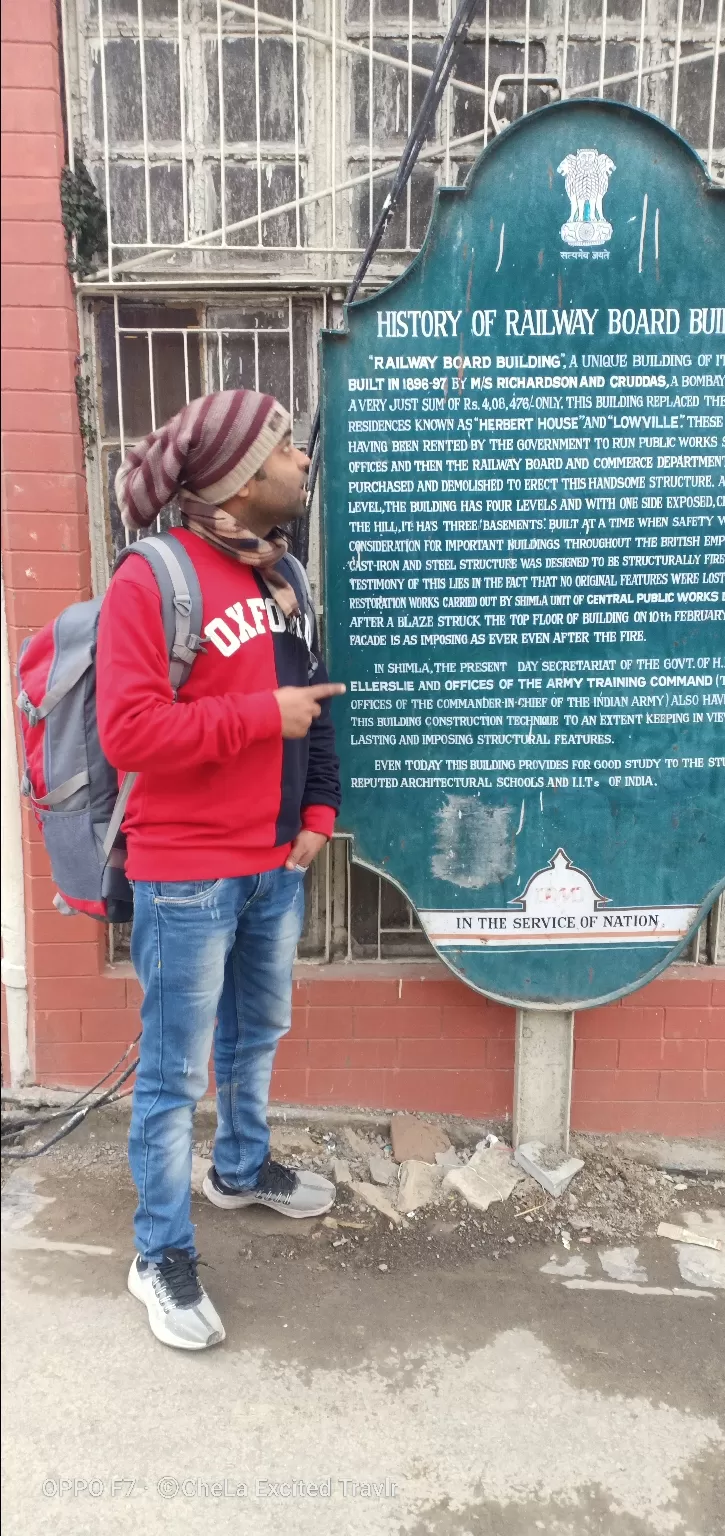
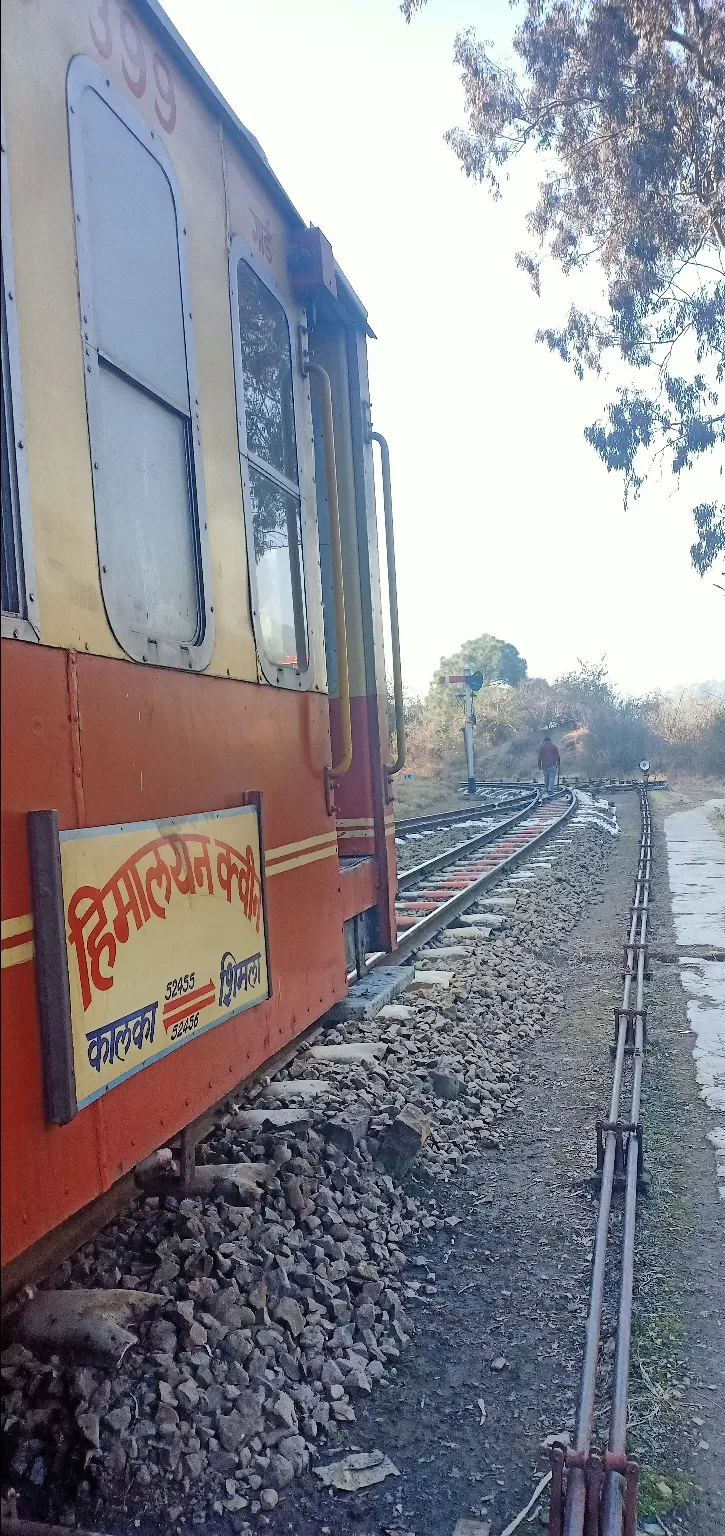
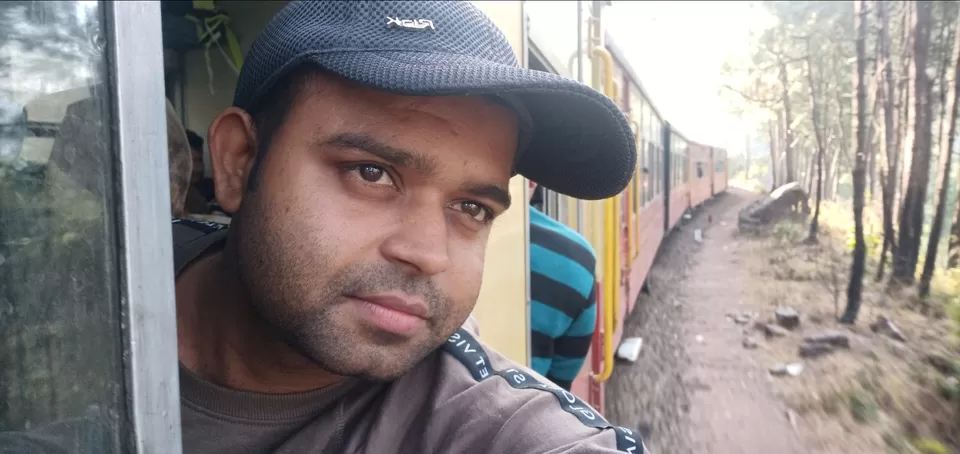
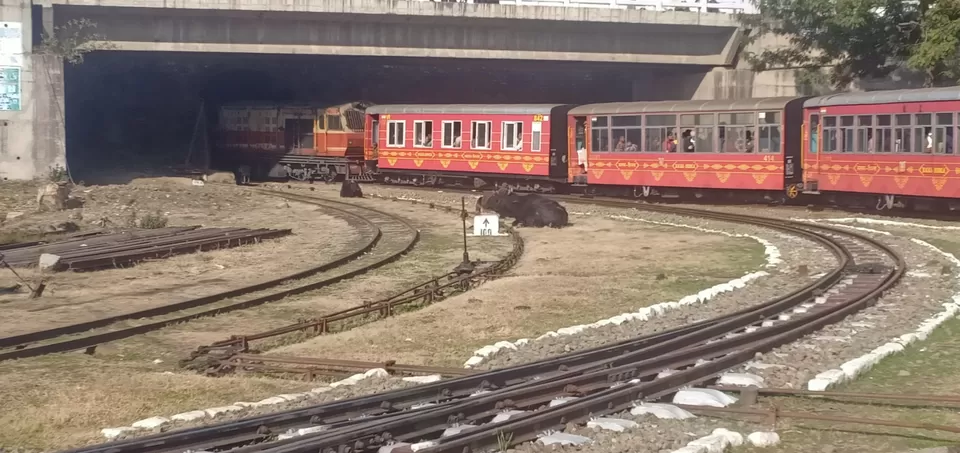
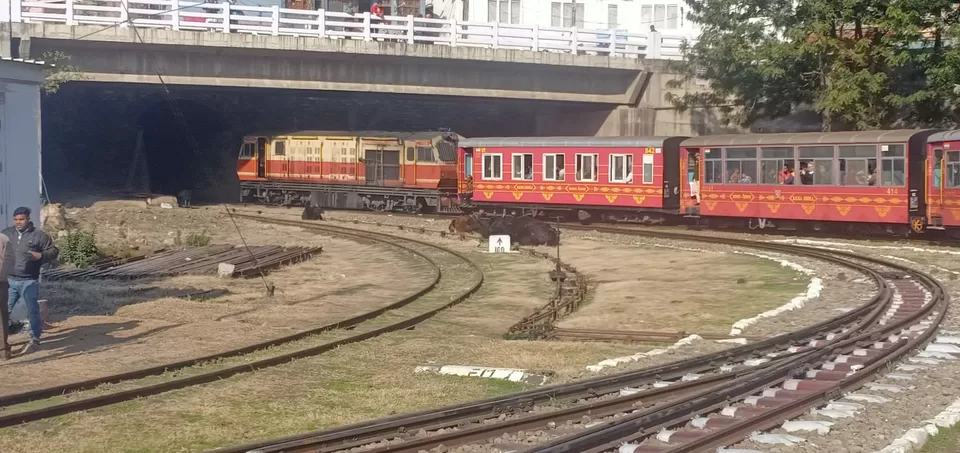
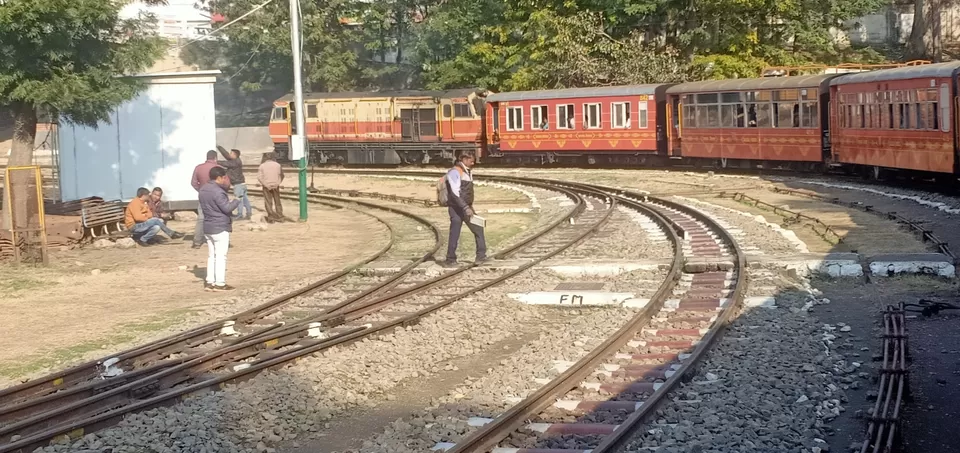
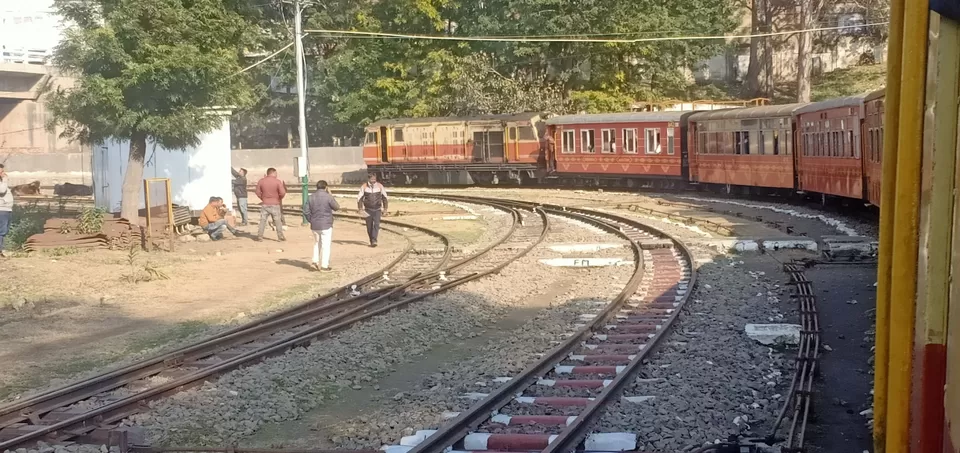
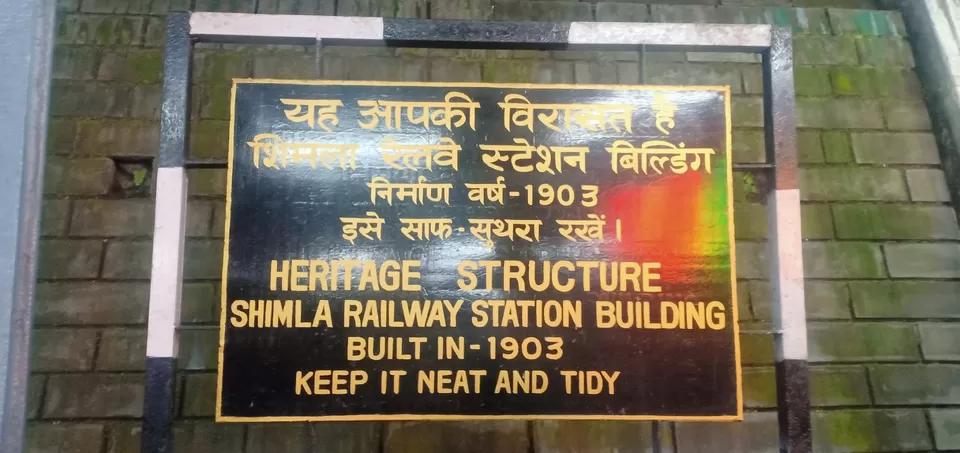
Hello Travelholic world ,
Hope all is well
CheLa The Excited Traveler welcome you again,
This time we covered with my friend Sumit and Vikas ,UNESCO Heritage sites mountain train journey =Kalka-Shimla Toy Train Journey @ UNESCO Heritage sites 2008.
Kalka-Shimla Toy Train, a UNESCO World Heritage Site that connects the Indian plains to the ‘Queen of Hills,’ Shimla. Built in 1903, this toy train ride is one of India’s most incredible feats of engineering covering a staggering 102 tunnels, 864 bridges and 919 stunning curves.
Spanning some 60 miles, the Kalka-Shimla Toy Train is said to be one of the most scenic railway journeys in India. And, with a route that encompasses a vast display of awe-inspiring landscapes, it’s easy to see why. This journey runs on a narrow gauge from Kalka to Shimla, treating passengers with breathtaking views of rugged mountains, lush pine forests, waterfalls, valleys and picture-perfect hill stations along the way that will definitely tempt you to disembark and bask in their beauty. The whole journey takes about five and a half hours.
History
Soon after the first Anglo-Gurkha war, Shimla (then, called as Simla) was established by the British. In 1864, the town became the summer capital of the British Empire and even served as the British army’s headquarters. But the only snag was connectivity – to reach Shimla, the only mode of transportation was a bullock cart that traversed through mountainous terrain, which was unsteady, dangerous and took a long amount of time. So, for easy and quick access to Shimla, the Kalka-Shimla narrow gauge was started in 1903 and was referred as the ‘British Jewel of the Orient’. The maiden journey of the train was taken by the then Viceroy of India, Lord Curzon. And since then, the train has been operating regularly and has become an iconic symbol of Shimla that is cherished by locals and tourists alike.
The route
The Kalka-Shimla train allows passengers to see mesmerizing sights and hamlets that they would have otherwise never witnessed. The route starts from Kalka, located in the Panchkula district of Haryana, from zero metres, winding its way upwards along the narrow track. At 656 metres, the train starts climbing uphill, passing through the 18 stations and reaches Shimla, located at an elevation of 2, 076 metres in the lap of the Himalayas. As the train ascends through steep mountains and curves, its speed slows down.
The 18 stations it stops at are: Taksal (6 km), Gumman (11 km), Koti (17 km), Sonwara (27 km), Dharampur (33 km), Kumarhatti (39 km), Barog (43 km), Solan (47 km), Salogra (53 km), Kandaghat (59 km), Kanoh (65 km), Kathleegat (73 km), Shoghi (78 km), Taradevi (85 km), Jutoh (90 km), Summer Hill (93 km) and finally, Shimla (96 km). At every station, there are tea and snack stalls, so passengers can relish in the local food along the way. The journey is magical, to say the least.
The highlight of the journey is Barog station, which has the longest tunnel (tunnel 33) on the route, stretching 1, 143.61 metres. Also, bridge number 226 is an architectural marvel that passes over a deep valley surrounded by steep hills on both sides. However, it is difficult to see this bridge from the carriage.
Thanks for pay attention and motivate me
Best Regards
CheLa
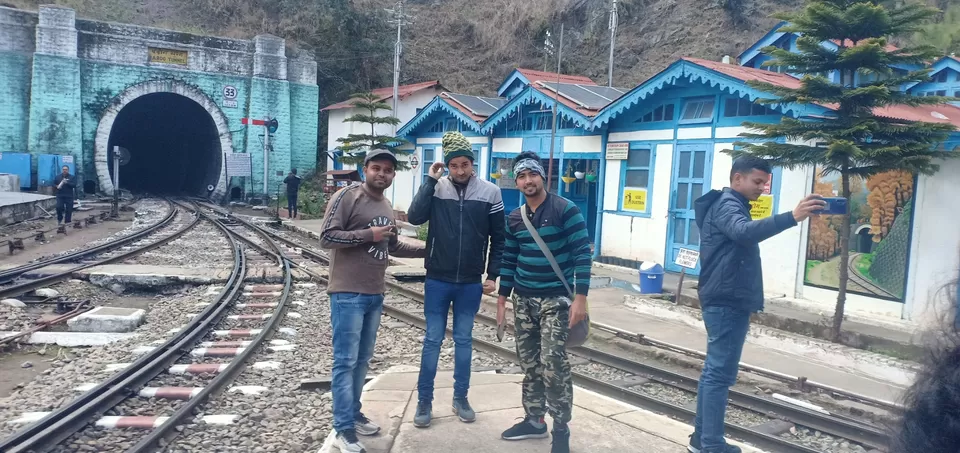
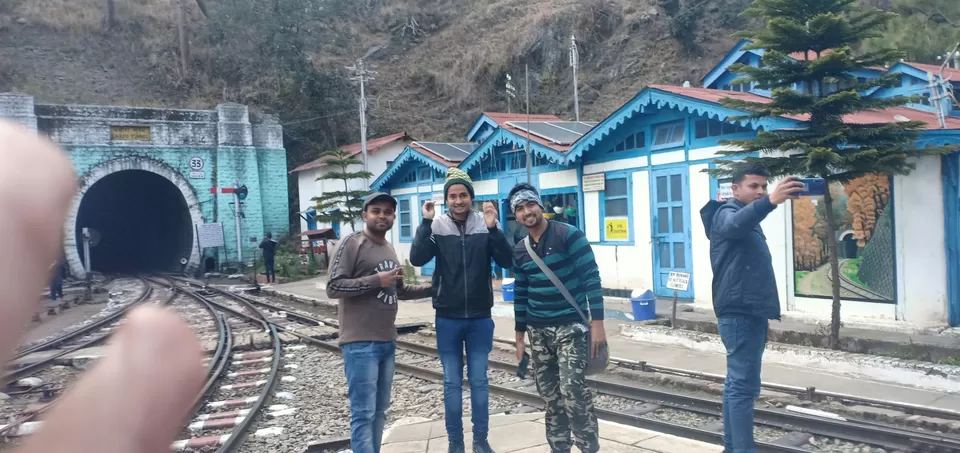
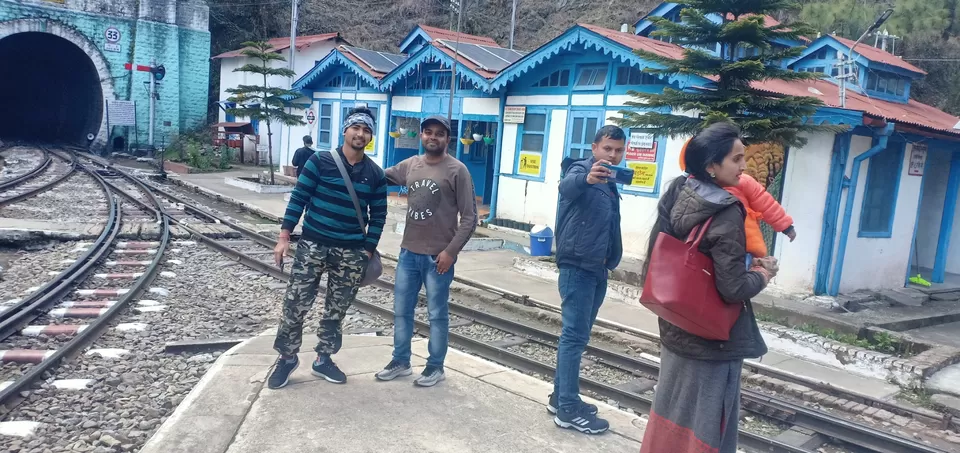
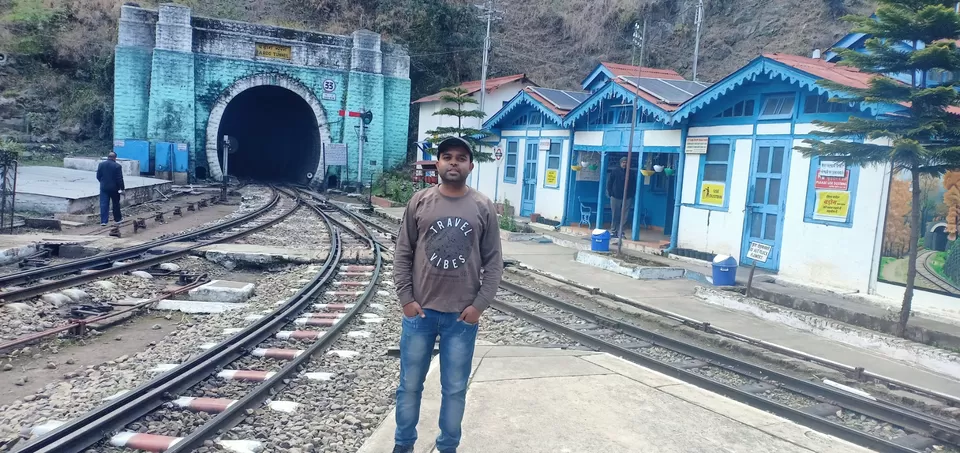
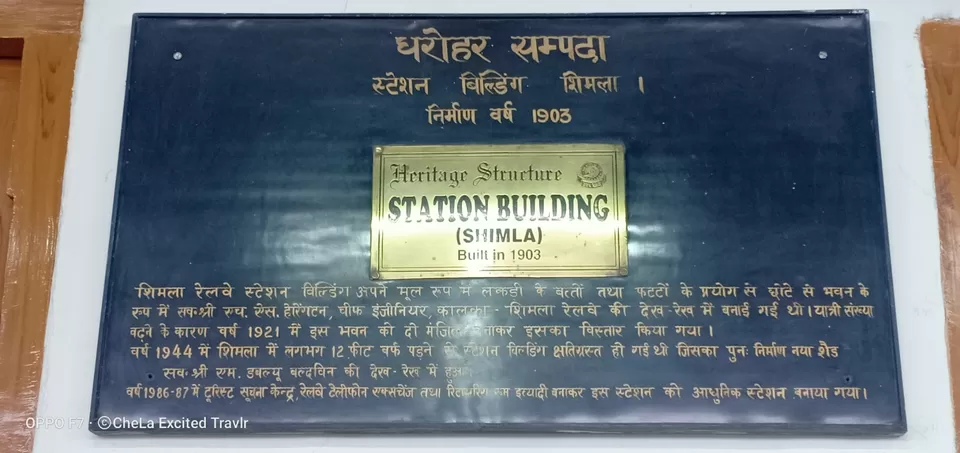
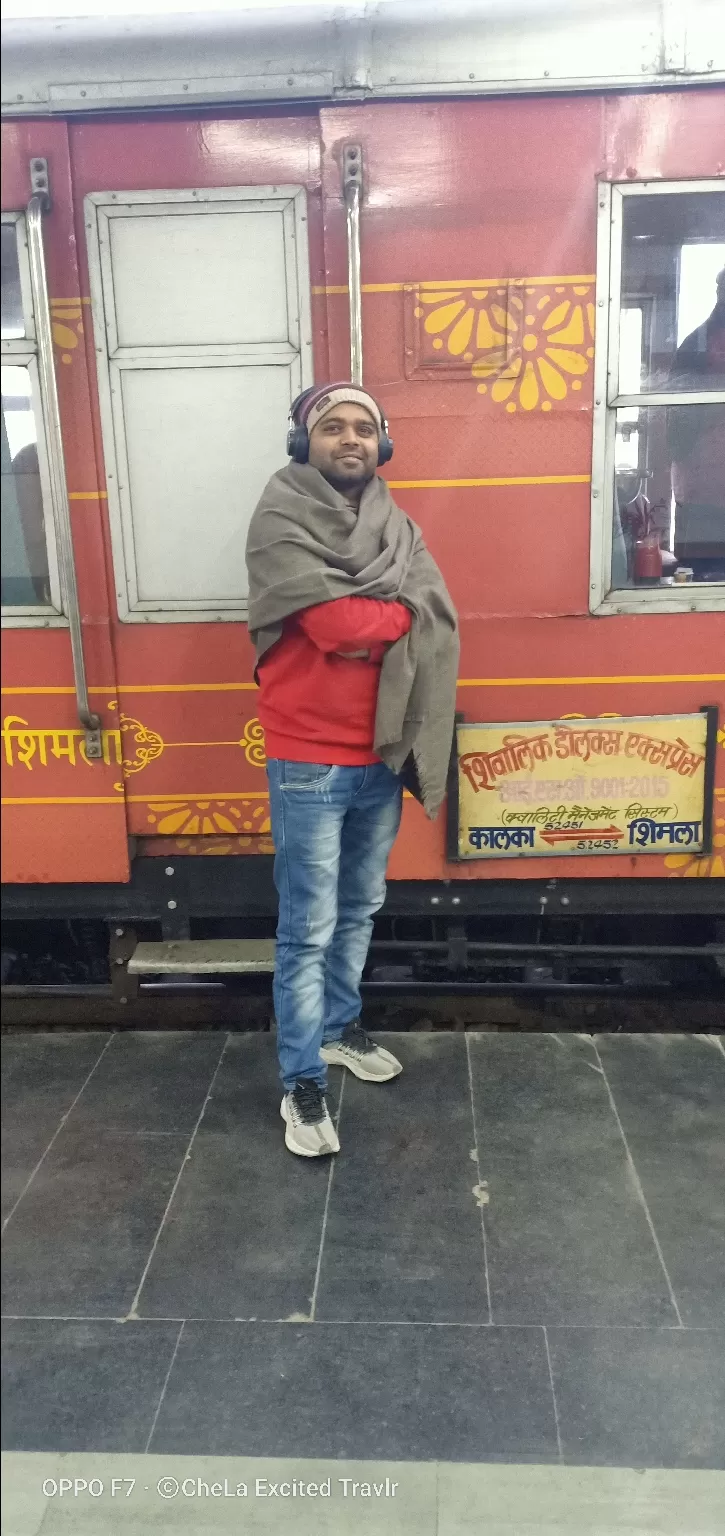
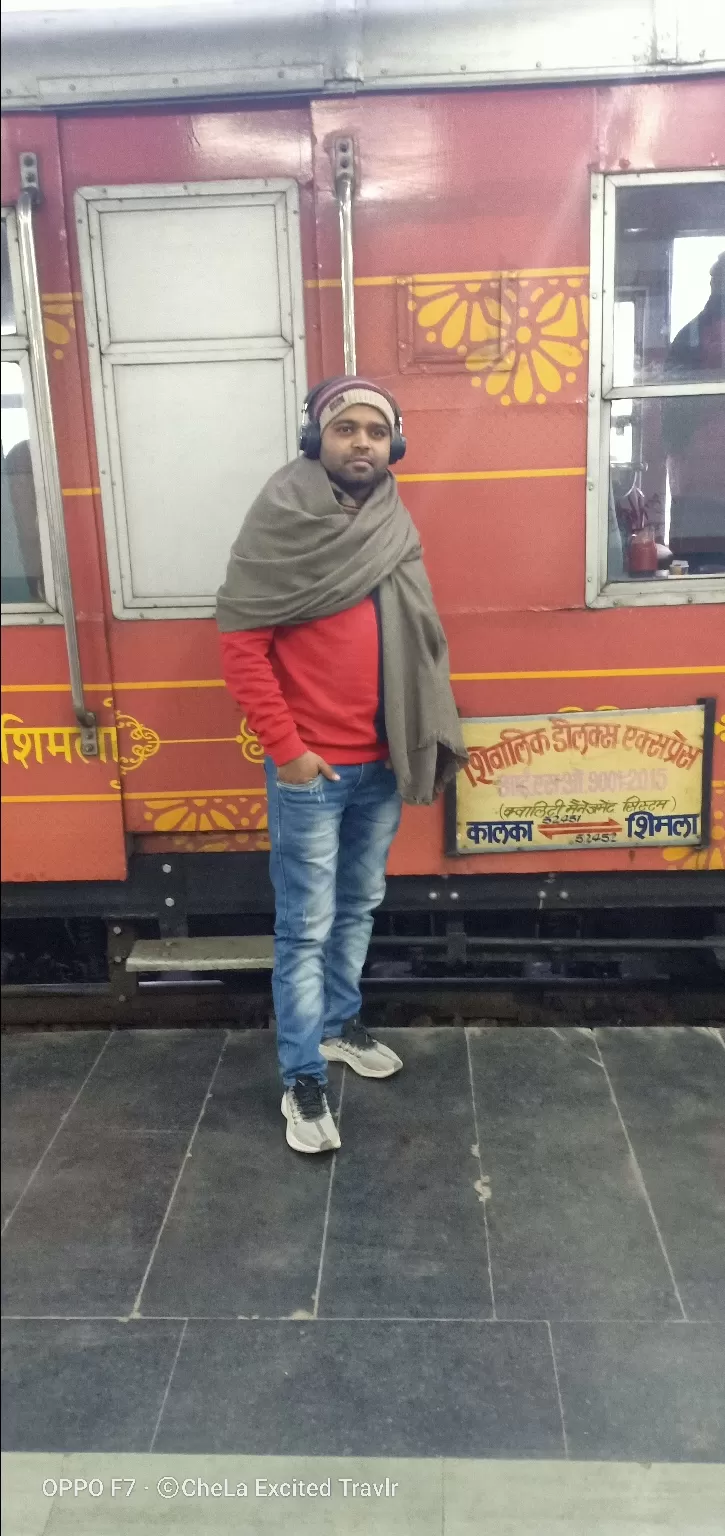
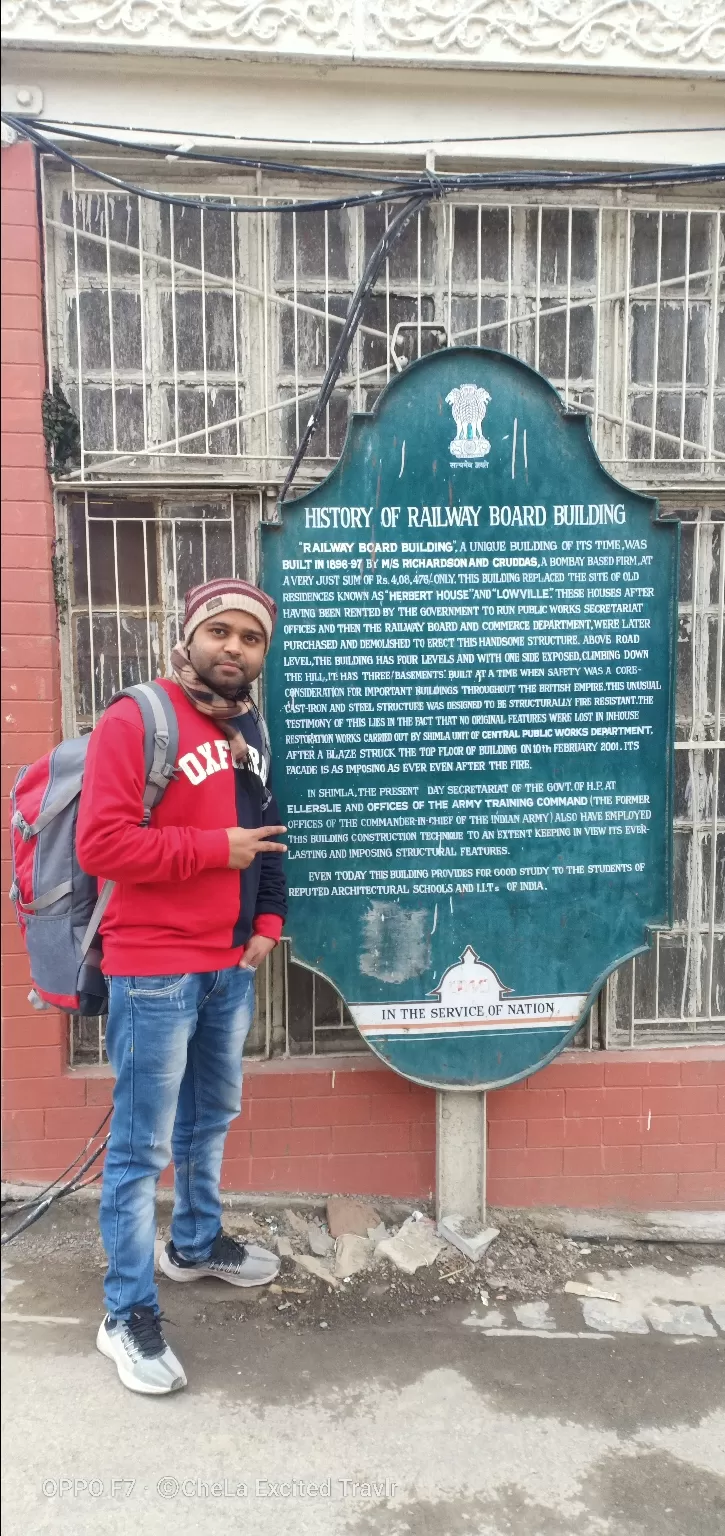
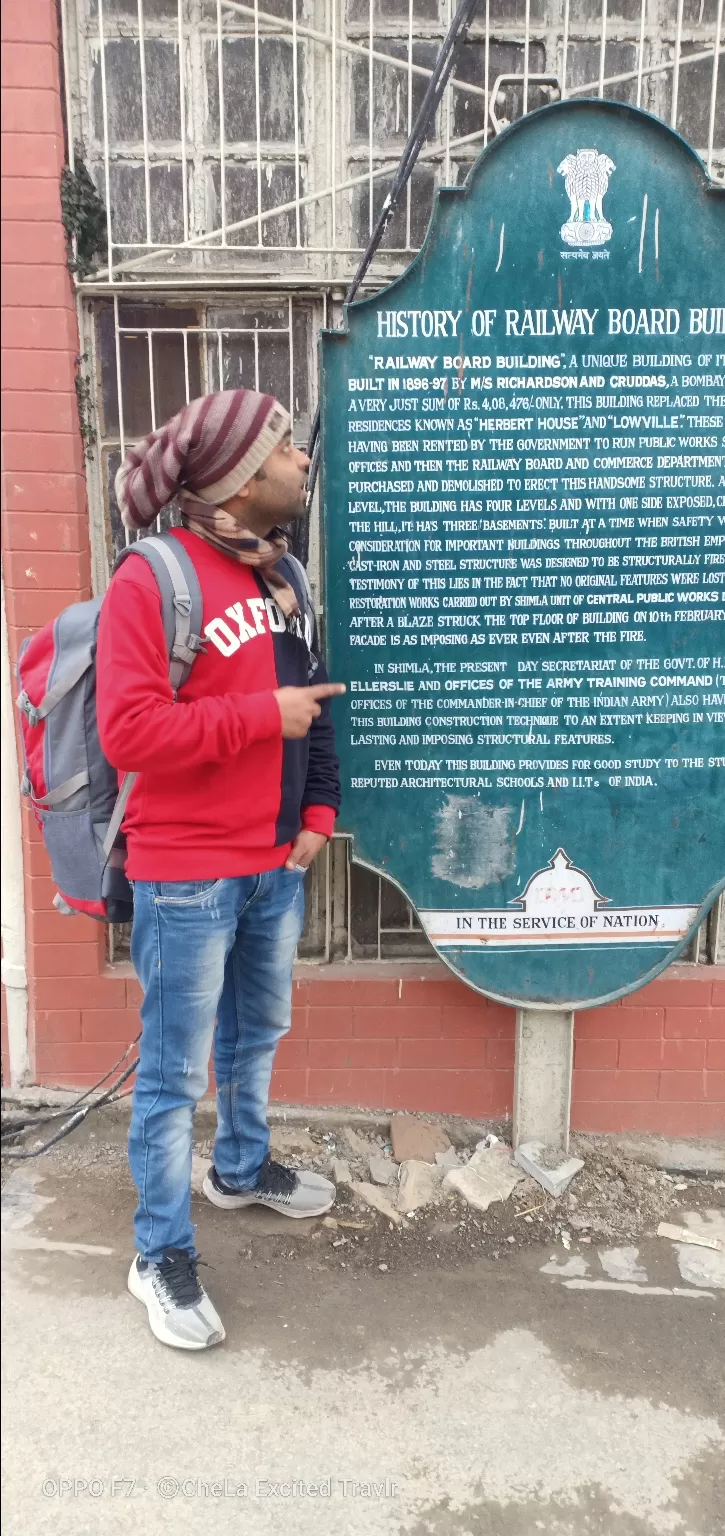
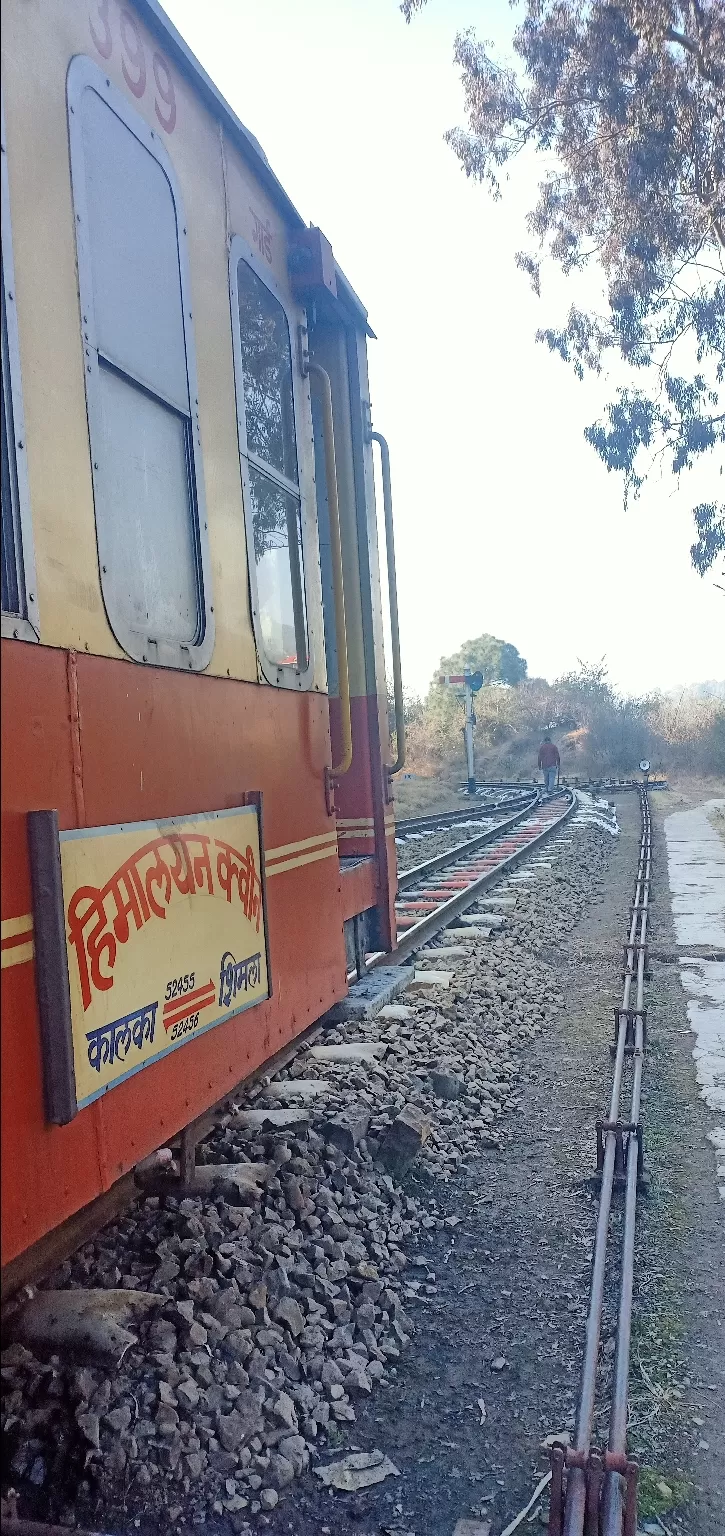
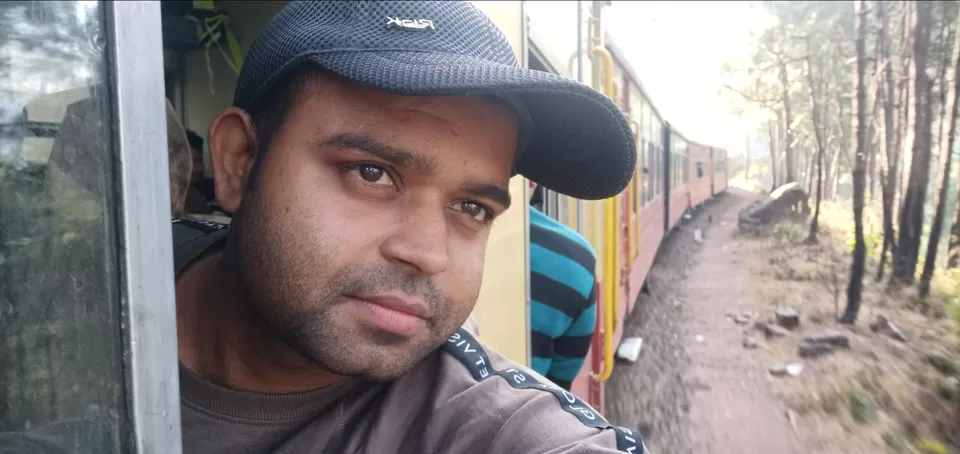
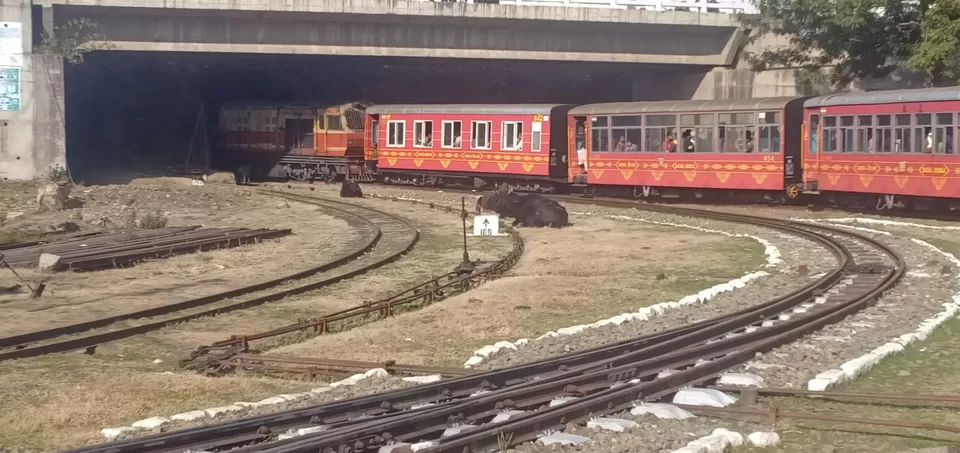
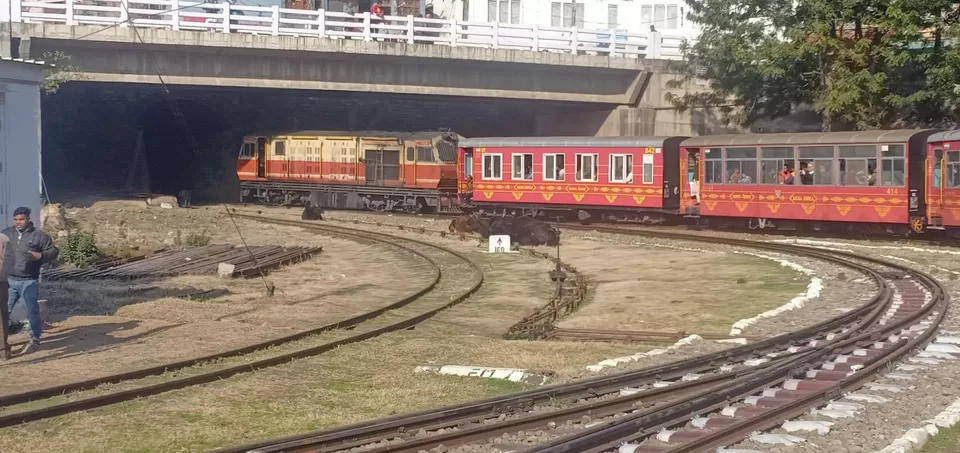
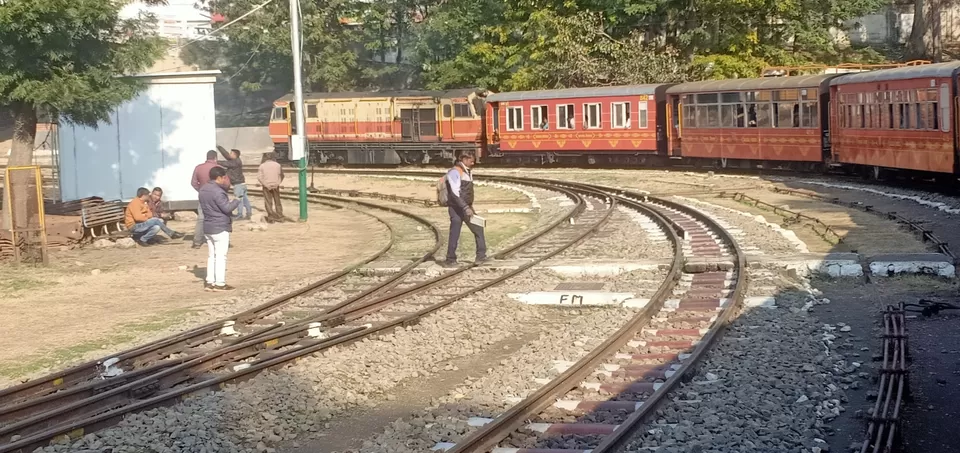
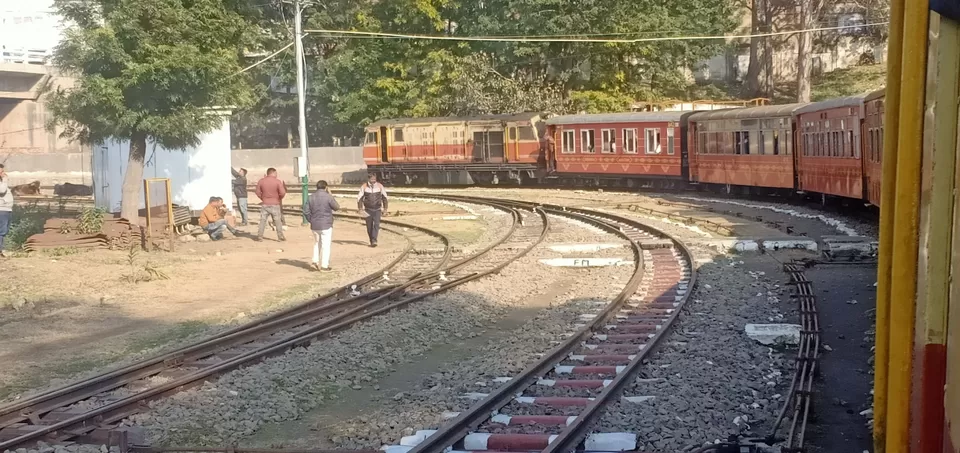
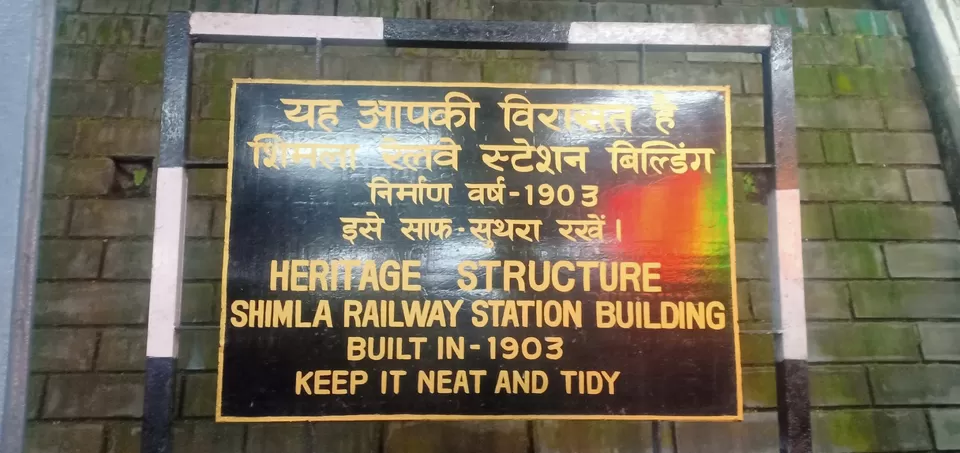
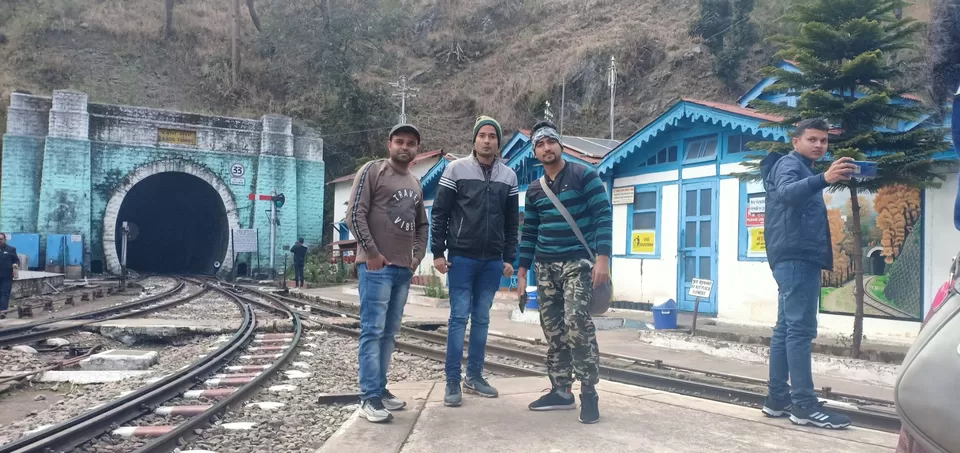
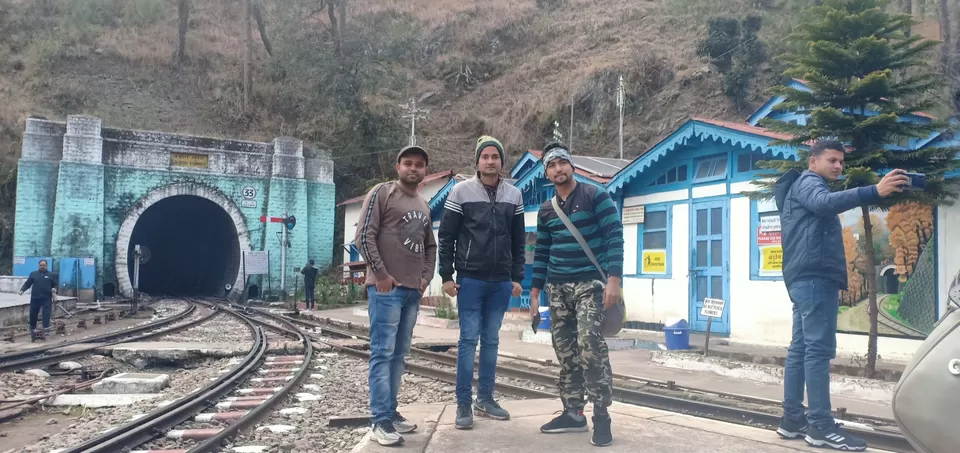
Hello Travelholic world ,
Hope all is well
CheLa The Excited Traveler welcome you again,
This time we covered with my friend Sumit and Vikas ,UNESCO Heritage sites mountain train journey =Kalka-Shimla Toy Train Journey @ UNESCO Heritage sites 2008.
Kalka-Shimla Toy Train, a UNESCO World Heritage Site that connects the Indian plains to the ‘Queen of Hills,’ Shimla. Built in 1903, this toy train ride is one of India’s most incredible feats of engineering covering a staggering 102 tunnels, 864 bridges and 919 stunning curves.
Spanning some 60 miles, the Kalka-Shimla Toy Train is said to be one of the most scenic railway journeys in India. And, with a route that encompasses a vast display of awe-inspiring landscapes, it’s easy to see why. This journey runs on a narrow gauge from Kalka to Shimla, treating passengers with breathtaking views of rugged mountains, lush pine forests, waterfalls, valleys and picture-perfect hill stations along the way that will definitely tempt you to disembark and bask in their beauty. The whole journey takes about five and a half hours.
History
Soon after the first Anglo-Gurkha war, Shimla (then, called as Simla) was established by the British. In 1864, the town became the summer capital of the British Empire and even served as the British army’s headquarters. But the only snag was connectivity – to reach Shimla, the only mode of transportation was a bullock cart that traversed through mountainous terrain, which was unsteady, dangerous and took a long amount of time. So, for easy and quick access to Shimla, the Kalka-Shimla narrow gauge was started in 1903 and was referred as the ‘British Jewel of the Orient’. The maiden journey of the train was taken by the then Viceroy of India, Lord Curzon. And since then, the train has been operating regularly and has become an iconic symbol of Shimla that is cherished by locals and tourists alike.
The route
The Kalka-Shimla train allows passengers to see mesmerizing sights and hamlets that they would have otherwise never witnessed. The route starts from Kalka, located in the Panchkula district of Haryana, from zero metres, winding its way upwards along the narrow track. At 656 metres, the train starts climbing uphill, passing through the 18 stations and reaches Shimla, located at an elevation of 2, 076 metres in the lap of the Himalayas. As the train ascends through steep mountains and curves, its speed slows down.
The 18 stations it stops at are: Taksal (6 km), Gumman (11 km), Koti (17 km), Sonwara (27 km), Dharampur (33 km), Kumarhatti (39 km), Barog (43 km), Solan (47 km), Salogra (53 km), Kandaghat (59 km), Kanoh (65 km), Kathleegat (73 km), Shoghi (78 km), Taradevi (85 km), Jutoh (90 km), Summer Hill (93 km) and finally, Shimla (96 km). At every station, there are tea and snack stalls, so passengers can relish in the local food along the way. The journey is magical, to say the least.
The highlight of the journey is Barog station, which has the longest tunnel (tunnel 33) on the route, stretching 1, 143.61 metres. Also, bridge number 226 is an architectural marvel that passes over a deep valley surrounded by steep hills on both sides. However, it is difficult to see this bridge from the carriage.
Thanks for pay attention and motivate me
Best Regards
CheLa
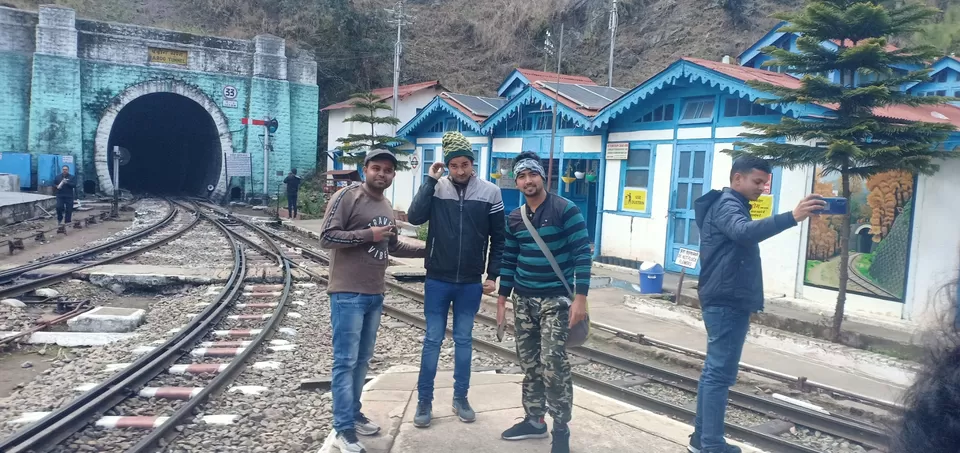
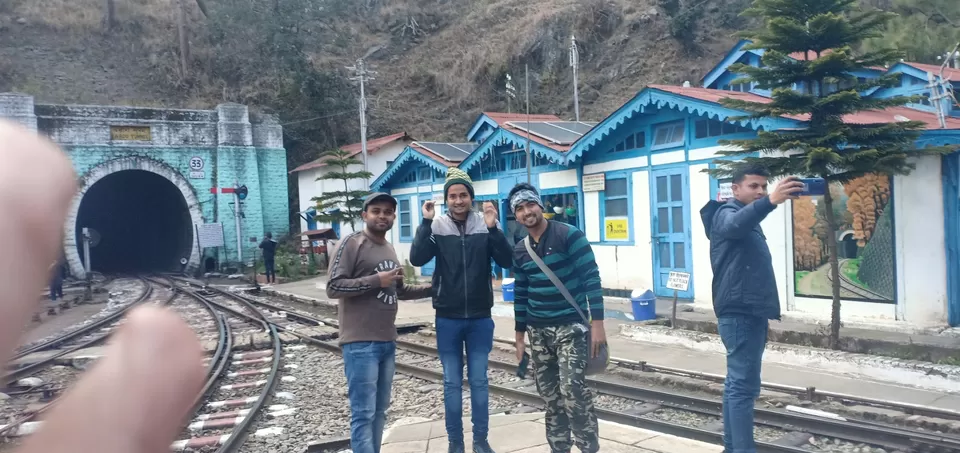
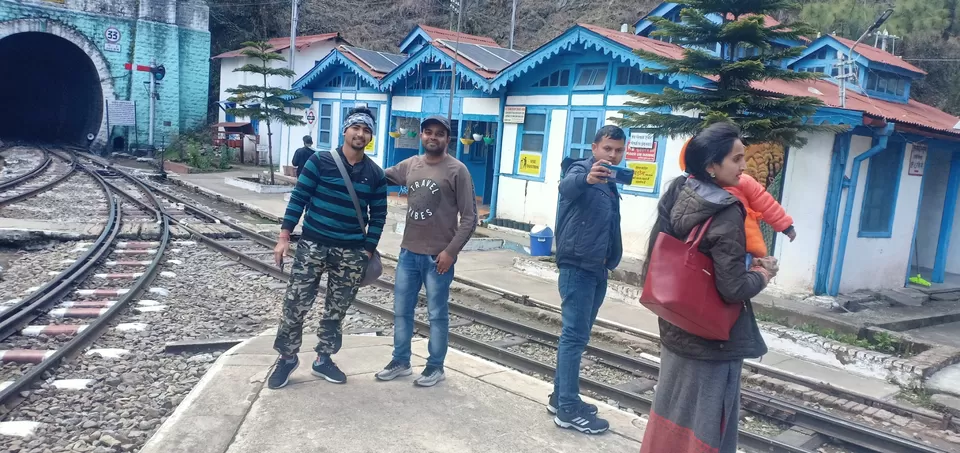
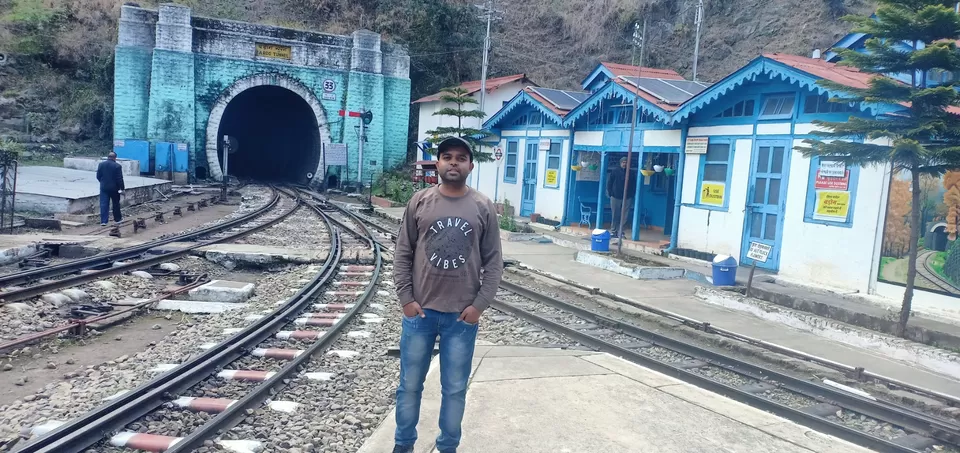
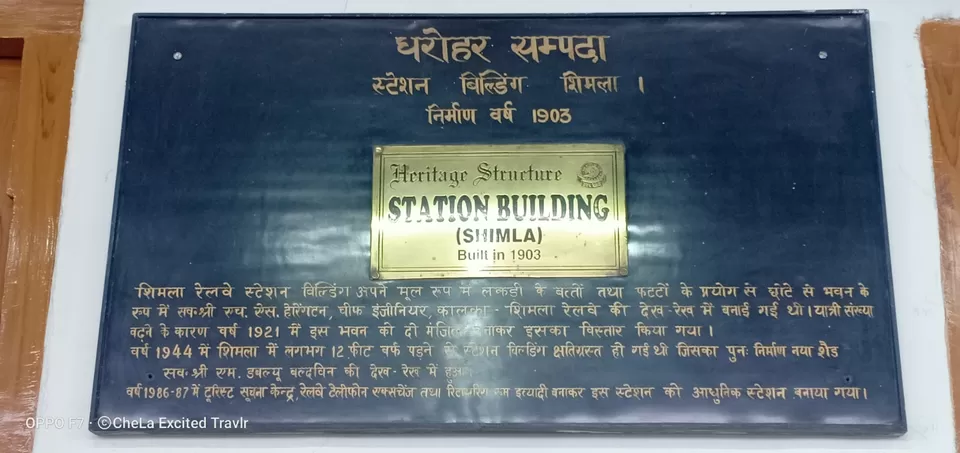
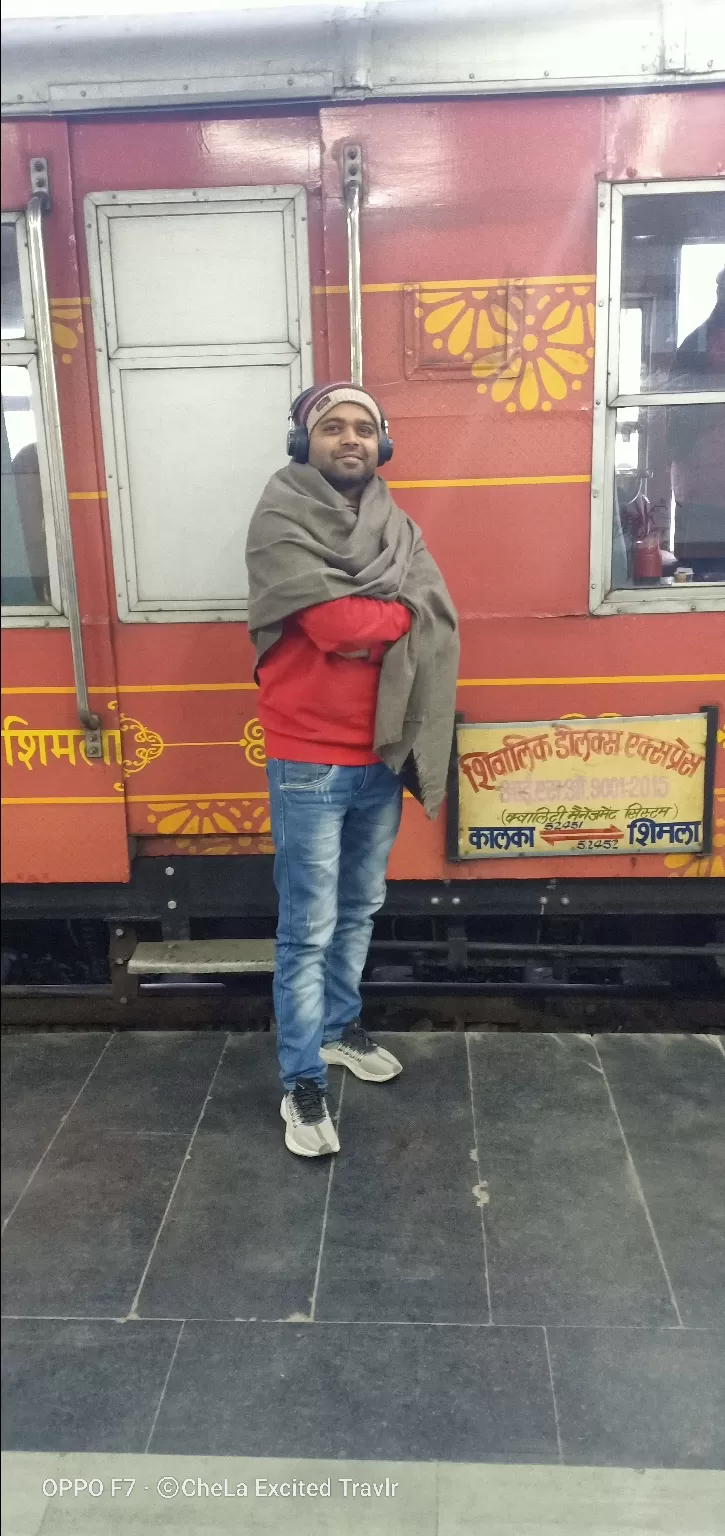
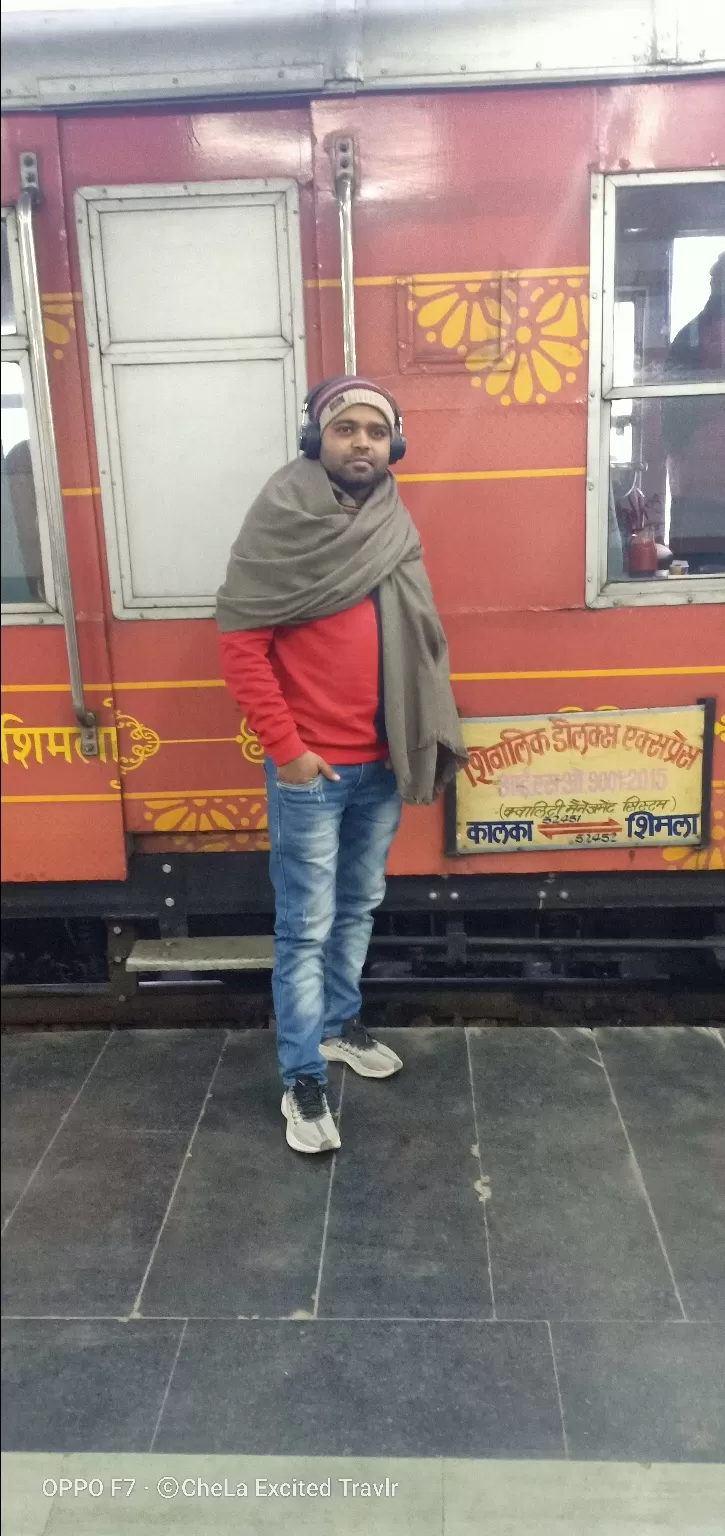
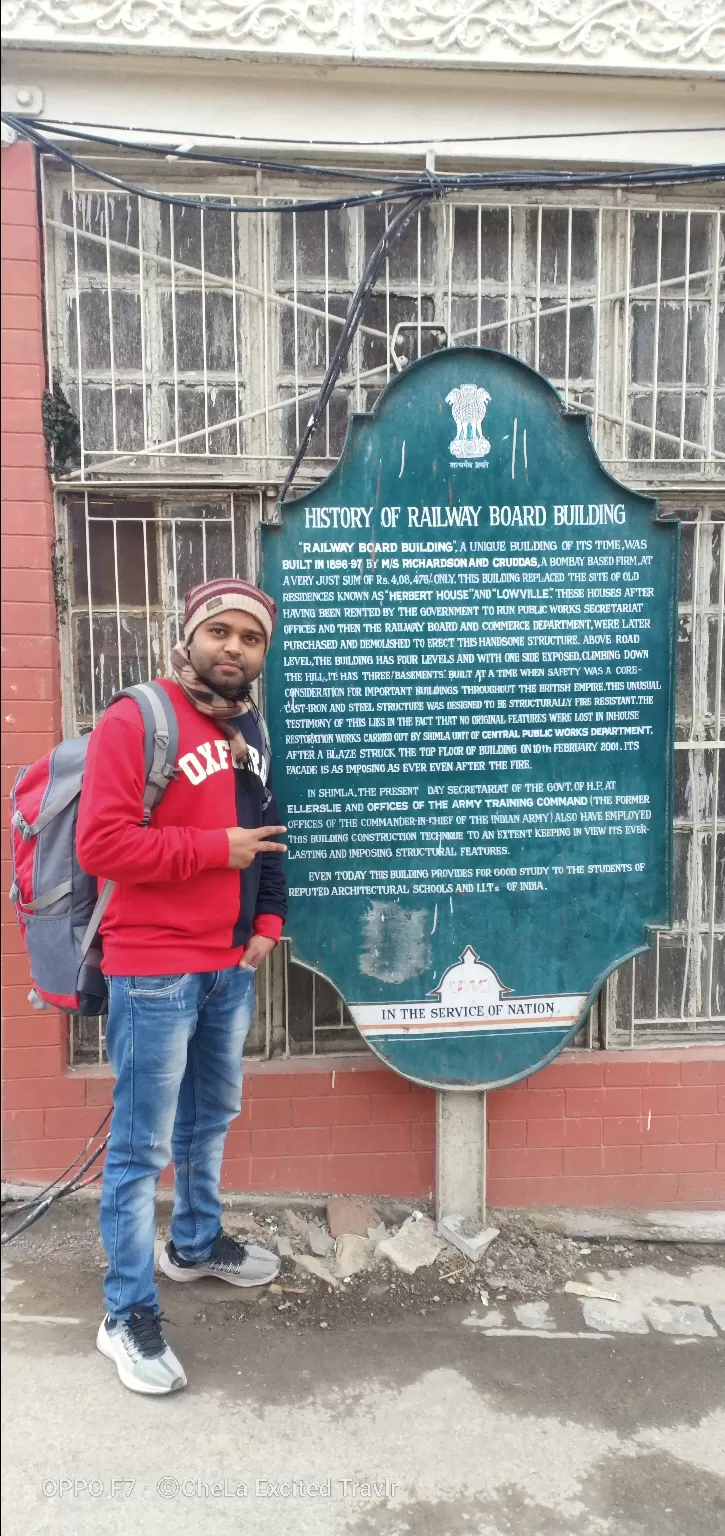
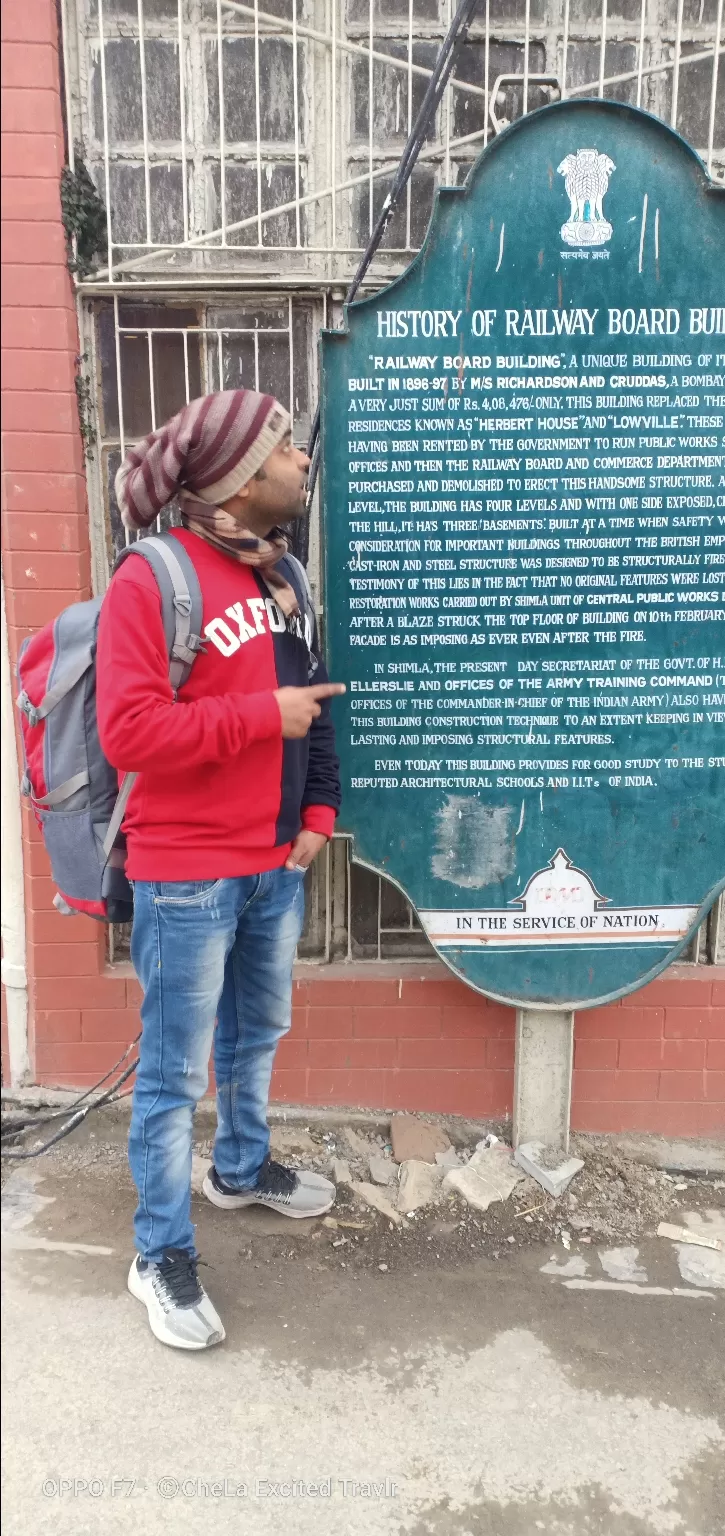
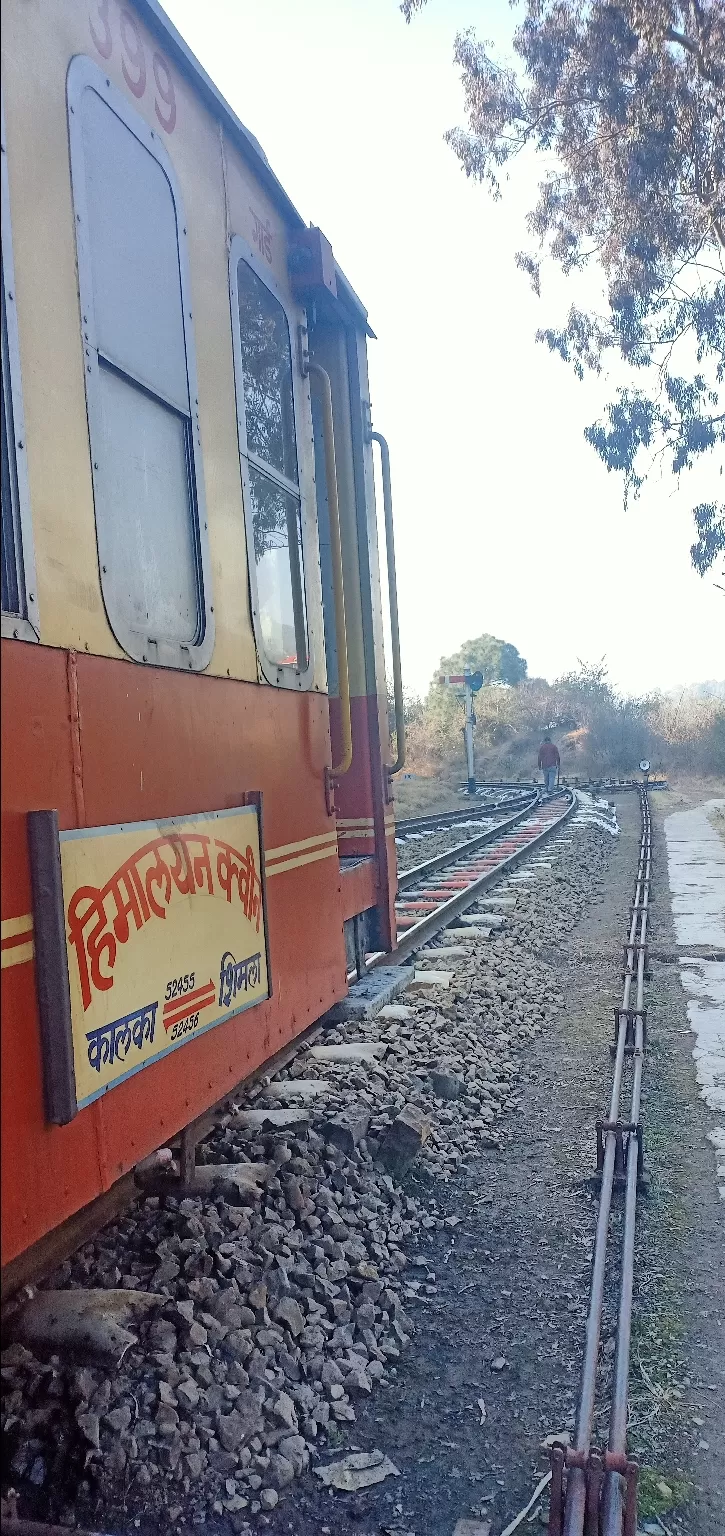
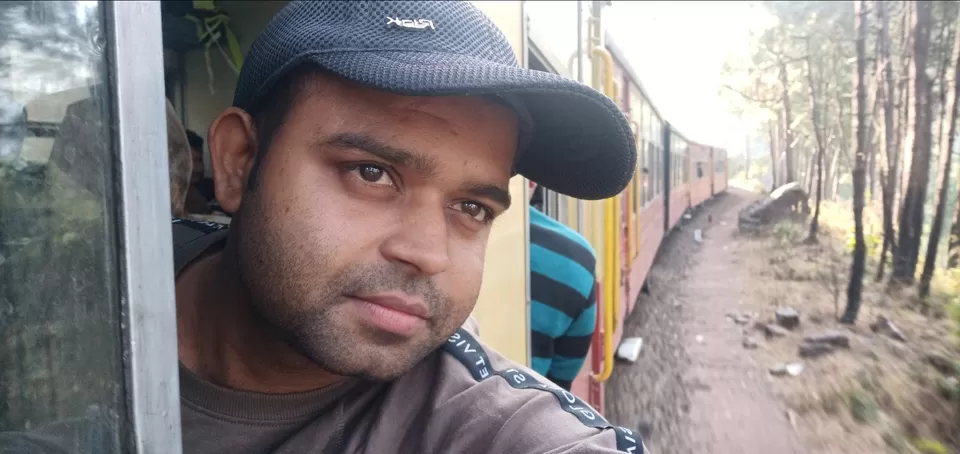
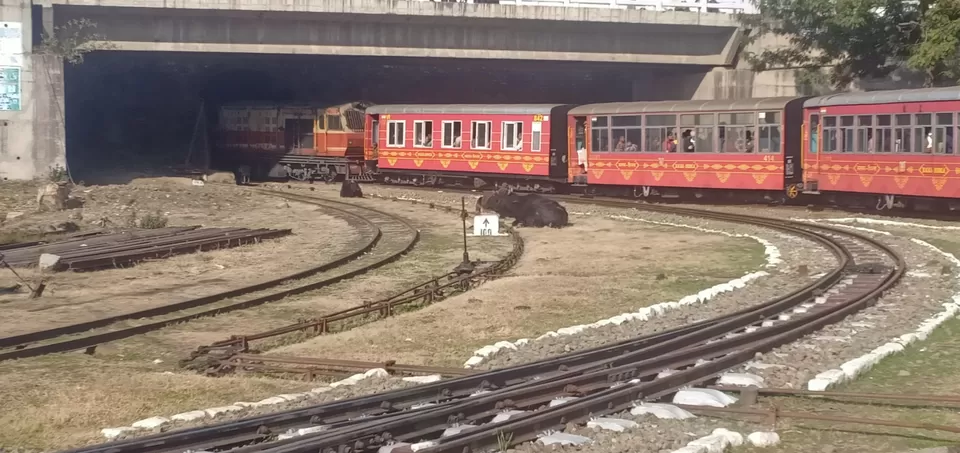
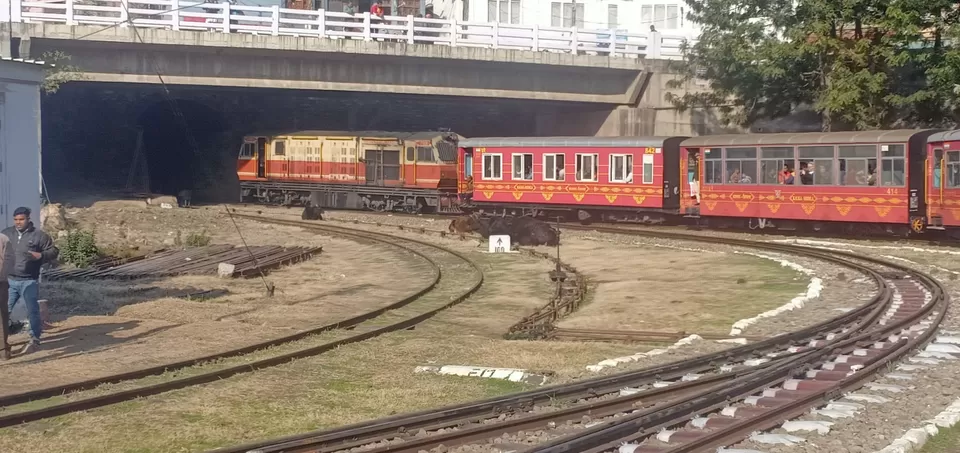
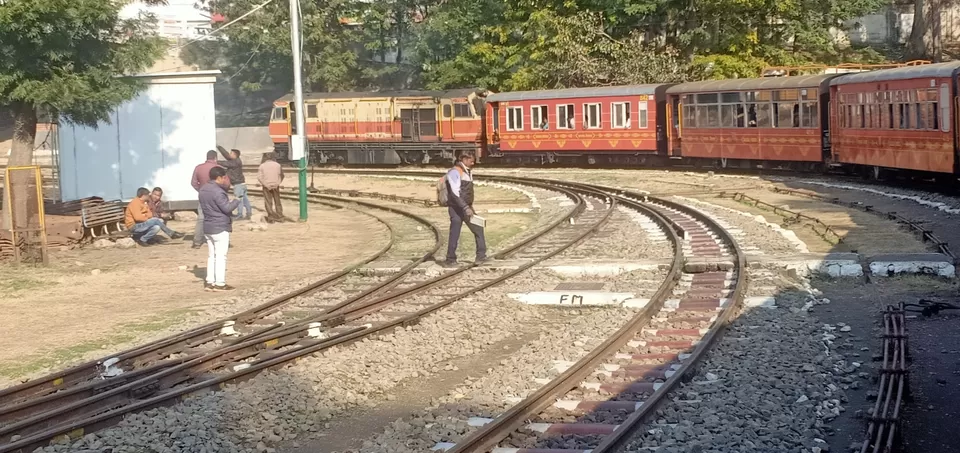
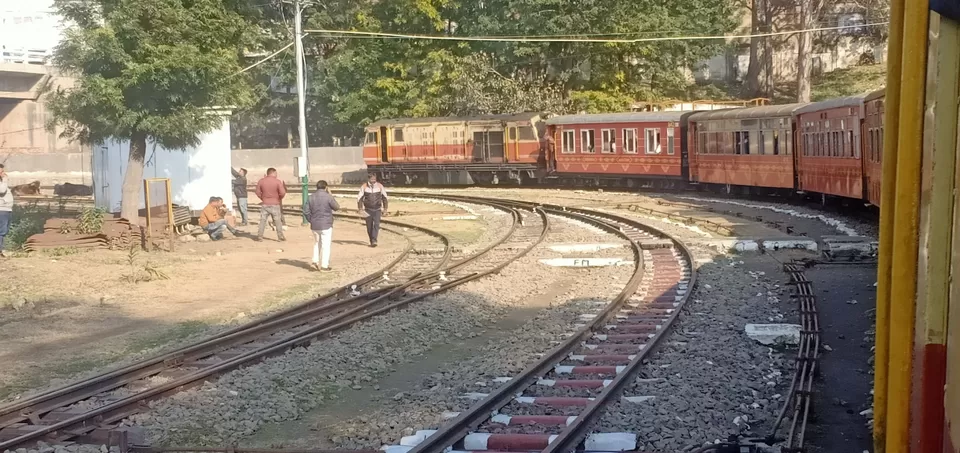
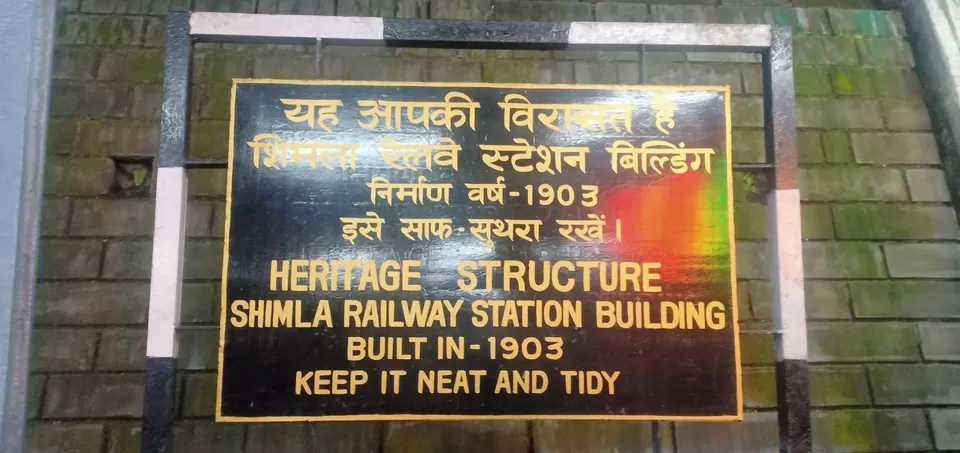
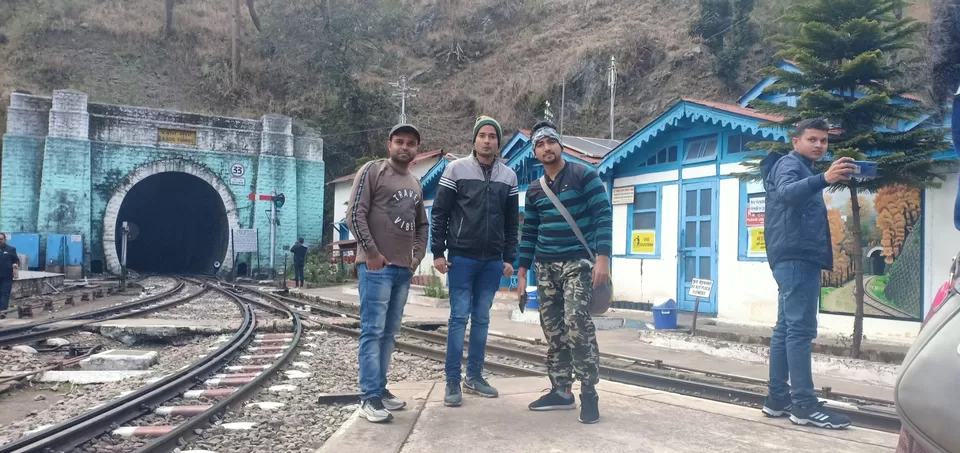
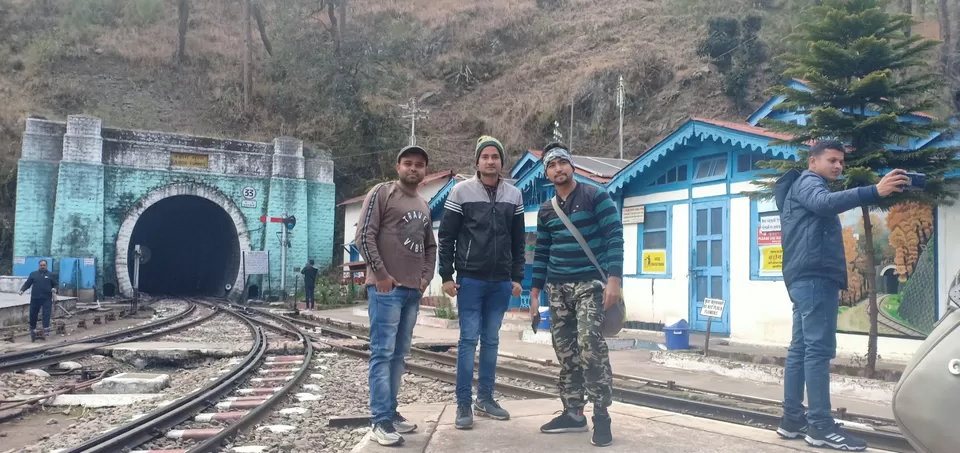
Hello Travelholic world ,
Hope all is well
CheLa The Excited Traveler welcome you again,
This time we covered with my friend Sumit and Vikas ,UNESCO Heritage sites mountain train journey =Kalka-Shimla Toy Train Journey @ UNESCO Heritage sites 2008.
Kalka-Shimla Toy Train, a UNESCO World Heritage Site that connects the Indian plains to the ‘Queen of Hills,’ Shimla. Built in 1903, this toy train ride is one of India’s most incredible feats of engineering covering a staggering 102 tunnels, 864 bridges and 919 stunning curves.
Spanning some 60 miles, the Kalka-Shimla Toy Train is said to be one of the most scenic railway journeys in India. And, with a route that encompasses a vast display of awe-inspiring landscapes, it’s easy to see why. This journey runs on a narrow gauge from Kalka to Shimla, treating passengers with breathtaking views of rugged mountains, lush pine forests, waterfalls, valleys and picture-perfect hill stations along the way that will definitely tempt you to disembark and bask in their beauty. The whole journey takes about five and a half hours.
History
Soon after the first Anglo-Gurkha war, Shimla (then, called as Simla) was established by the British. In 1864, the town became the summer capital of the British Empire and even served as the British army’s headquarters. But the only snag was connectivity – to reach Shimla, the only mode of transportation was a bullock cart that traversed through mountainous terrain, which was unsteady, dangerous and took a long amount of time. So, for easy and quick access to Shimla, the Kalka-Shimla narrow gauge was started in 1903 and was referred as the ‘British Jewel of the Orient’. The maiden journey of the train was taken by the then Viceroy of India, Lord Curzon. And since then, the train has been operating regularly and has become an iconic symbol of Shimla that is cherished by locals and tourists alike.
The route
The Kalka-Shimla train allows passengers to see mesmerizing sights and hamlets that they would have otherwise never witnessed. The route starts from Kalka, located in the Panchkula district of Haryana, from zero metres, winding its way upwards along the narrow track. At 656 metres, the train starts climbing uphill, passing through the 18 stations and reaches Shimla, located at an elevation of 2, 076 metres in the lap of the Himalayas. As the train ascends through steep mountains and curves, its speed slows down.
The 18 stations it stops at are: Taksal (6 km), Gumman (11 km), Koti (17 km), Sonwara (27 km), Dharampur (33 km), Kumarhatti (39 km), Barog (43 km), Solan (47 km), Salogra (53 km), Kandaghat (59 km), Kanoh (65 km), Kathleegat (73 km), Shoghi (78 km), Taradevi (85 km), Jutoh (90 km), Summer Hill (93 km) and finally, Shimla (96 km). At every station, there are tea and snack stalls, so passengers can relish in the local food along the way. The journey is magical, to say the least.
The highlight of the journey is Barog station, which has the longest tunnel (tunnel 33) on the route, stretching 1, 143.61 metres. Also, bridge number 226 is an architectural marvel that passes over a deep valley surrounded by steep hills on both sides. However, it is difficult to see this bridge from the carriage.
Thanks for pay attention and motivate me
Best Regards
CheLa
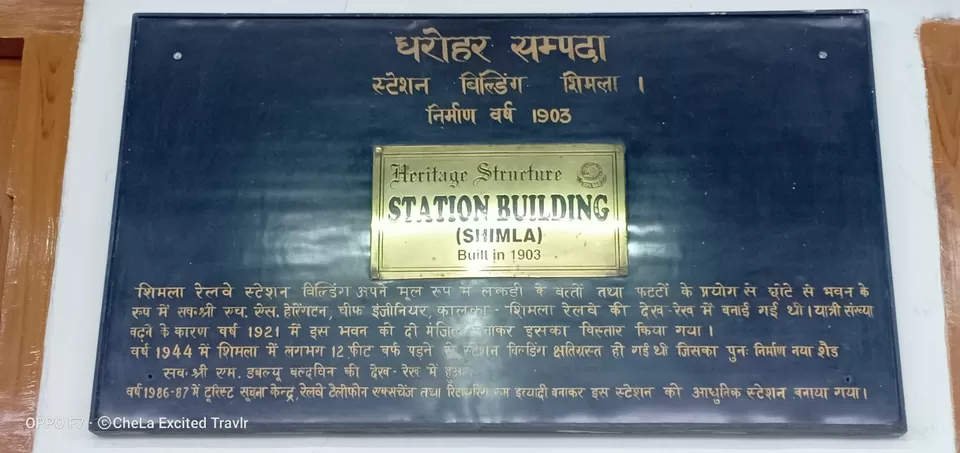
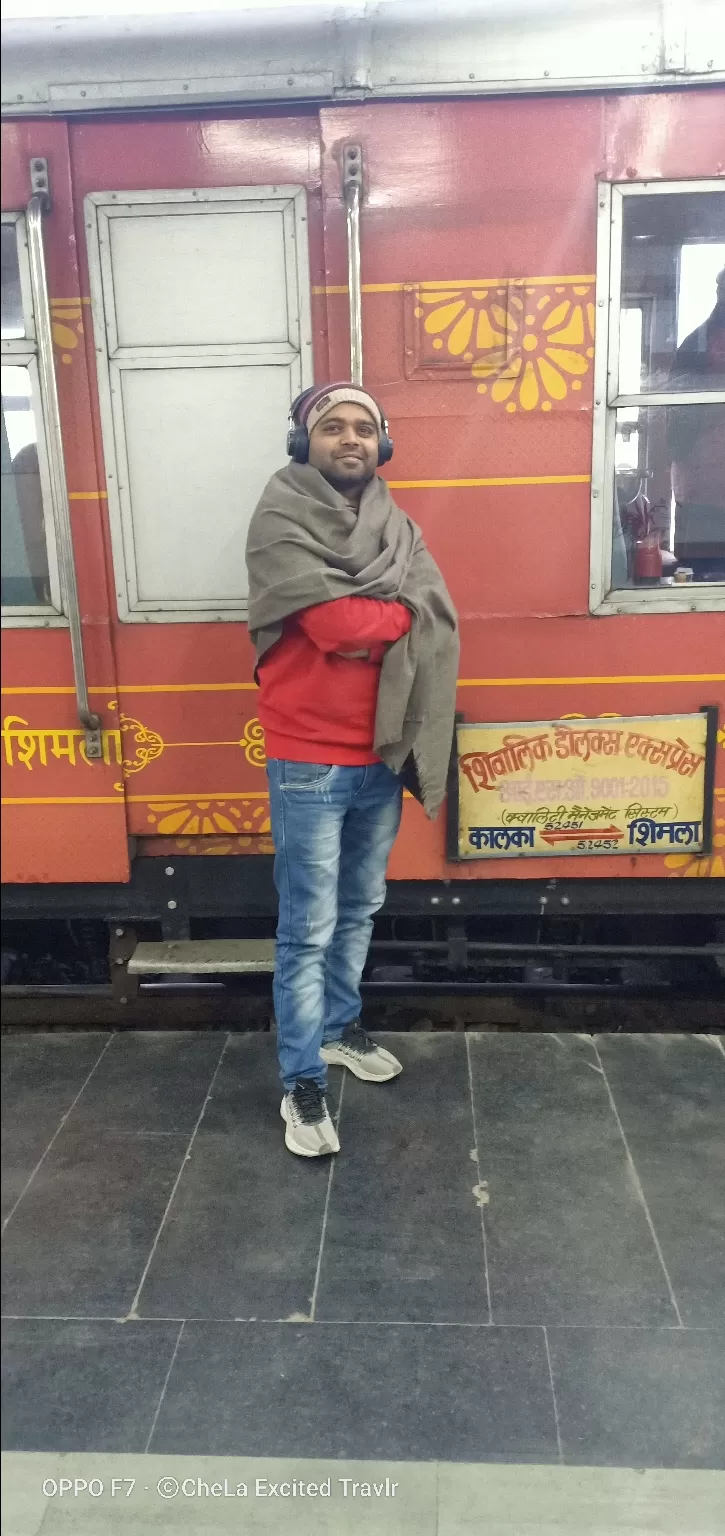
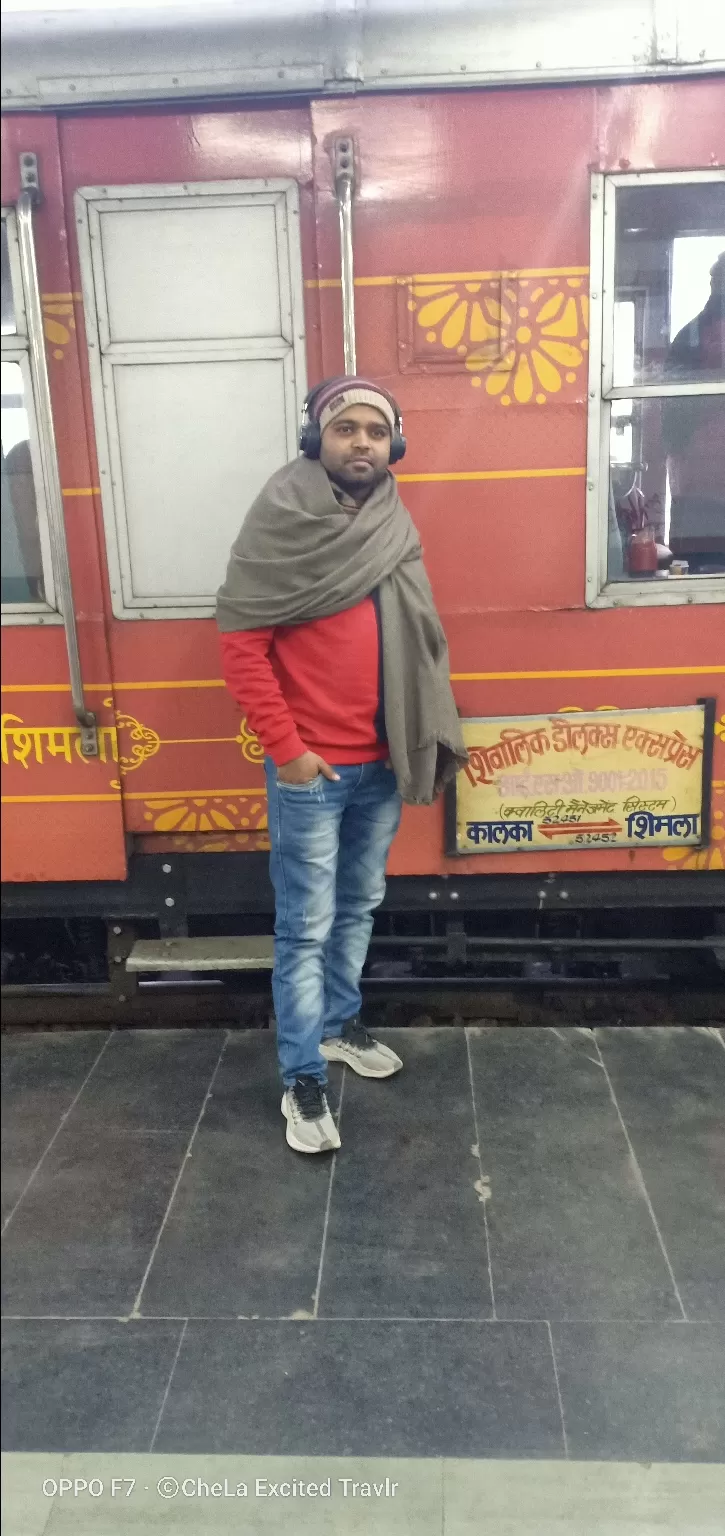
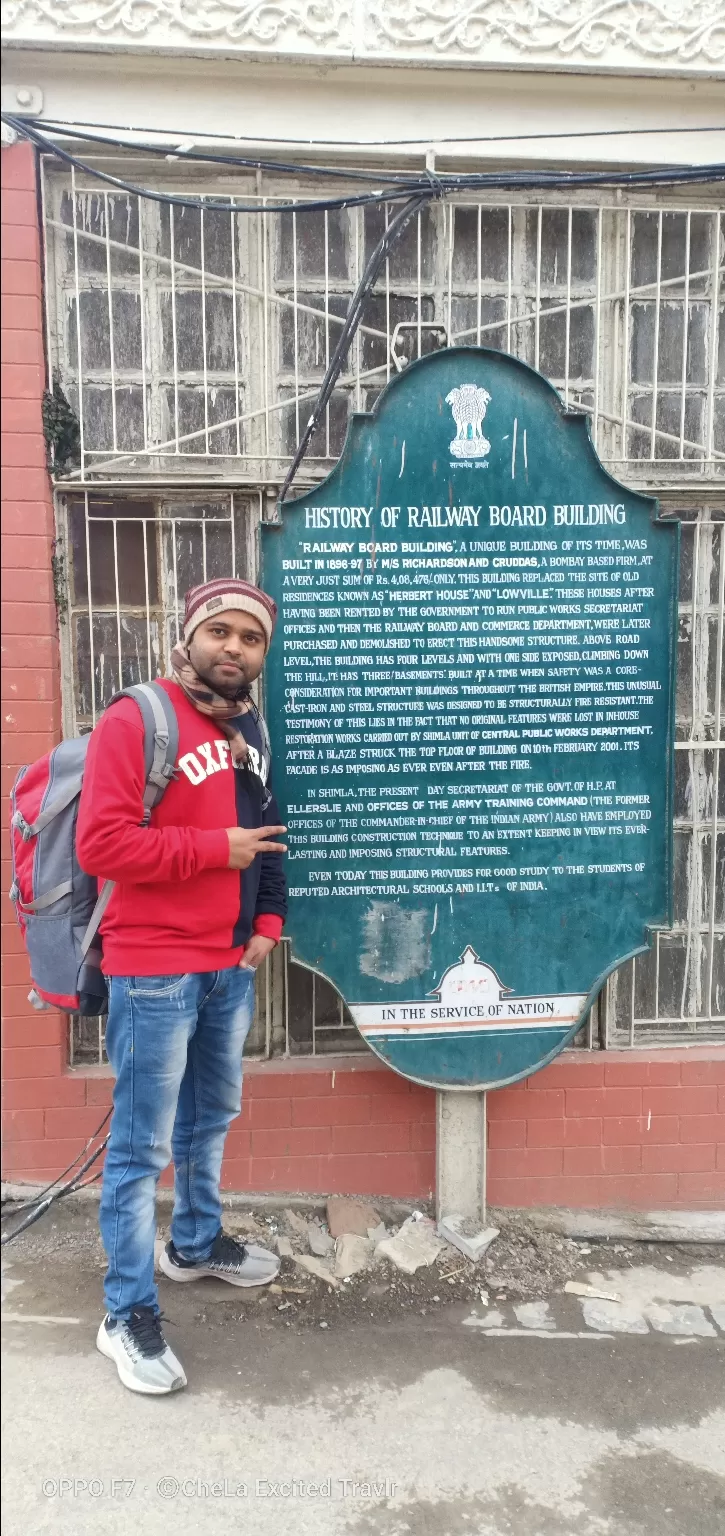
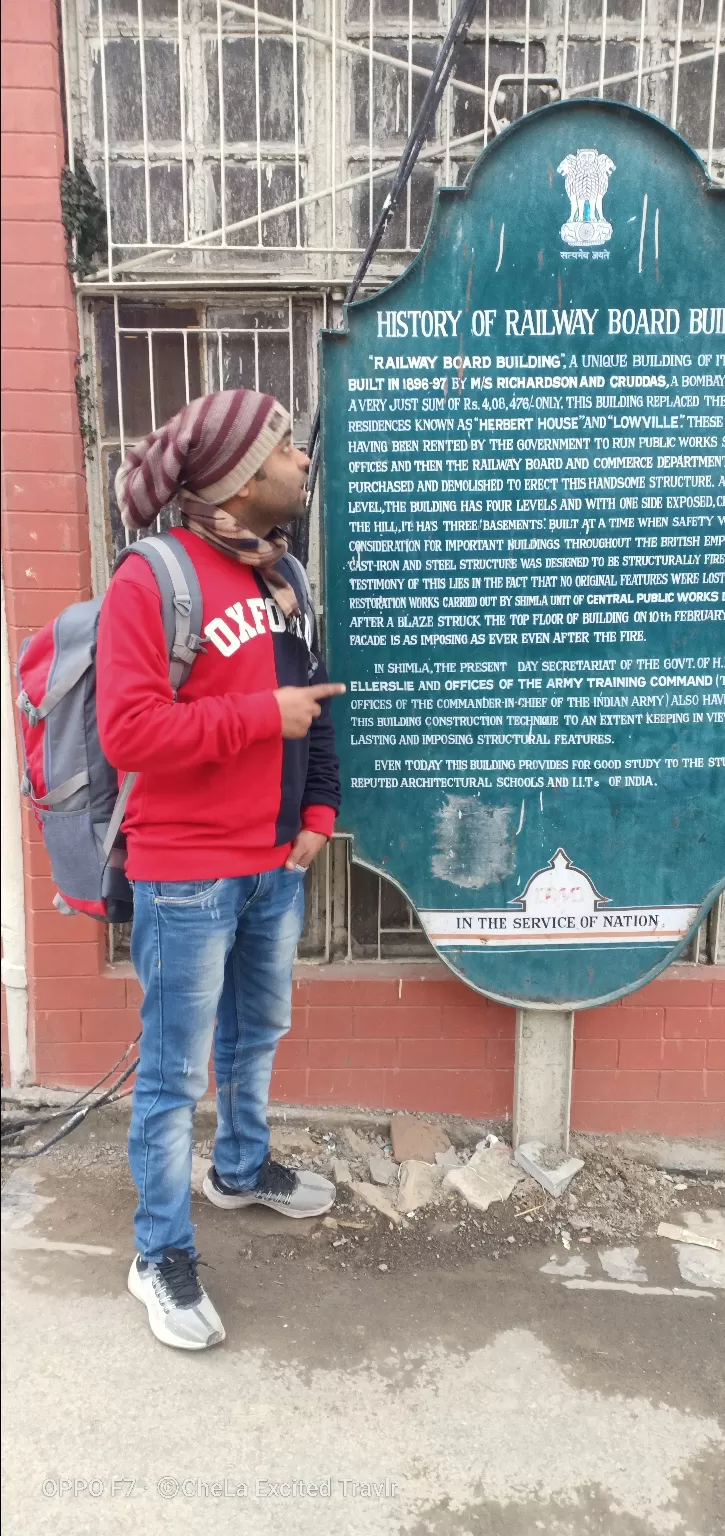
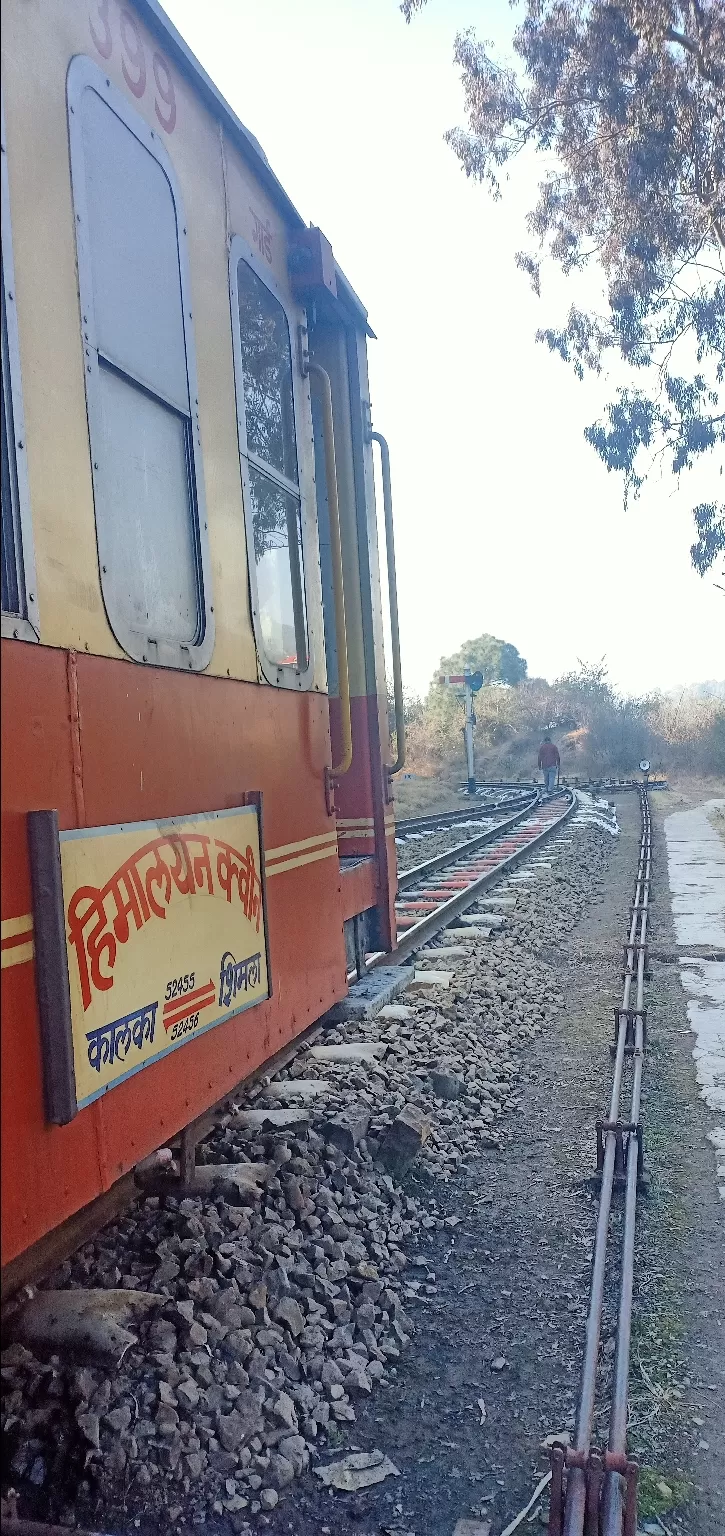
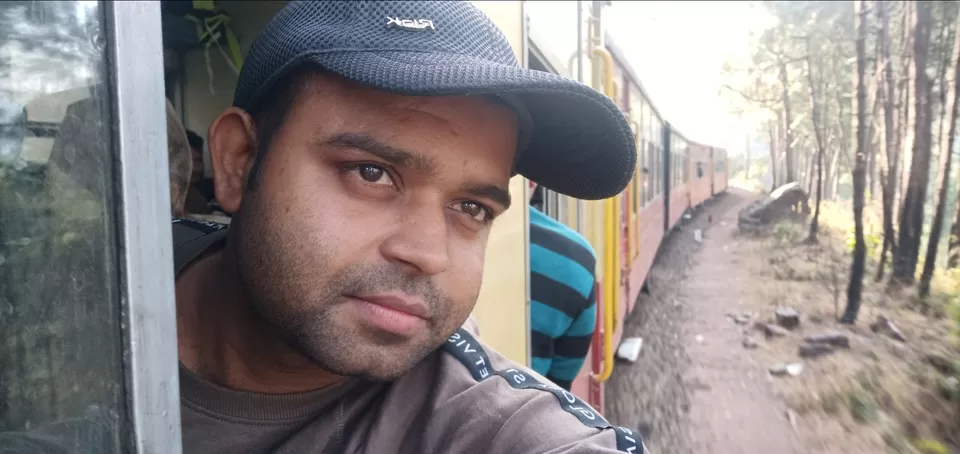
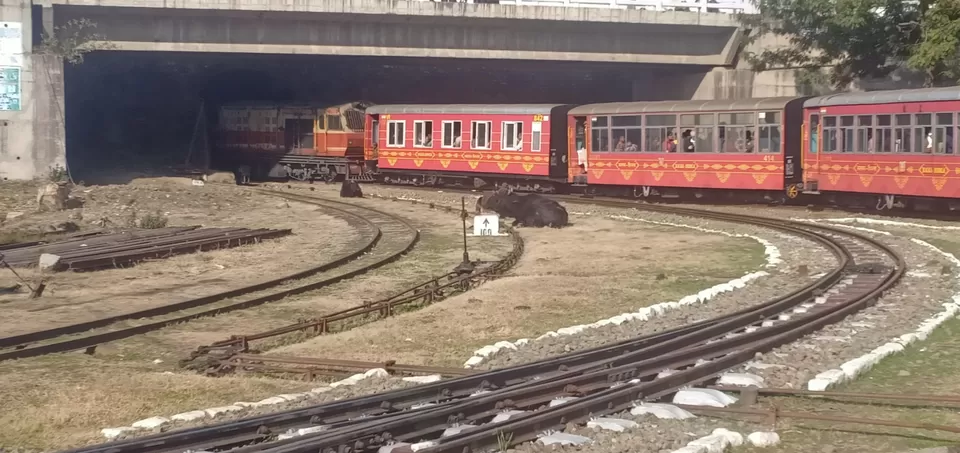
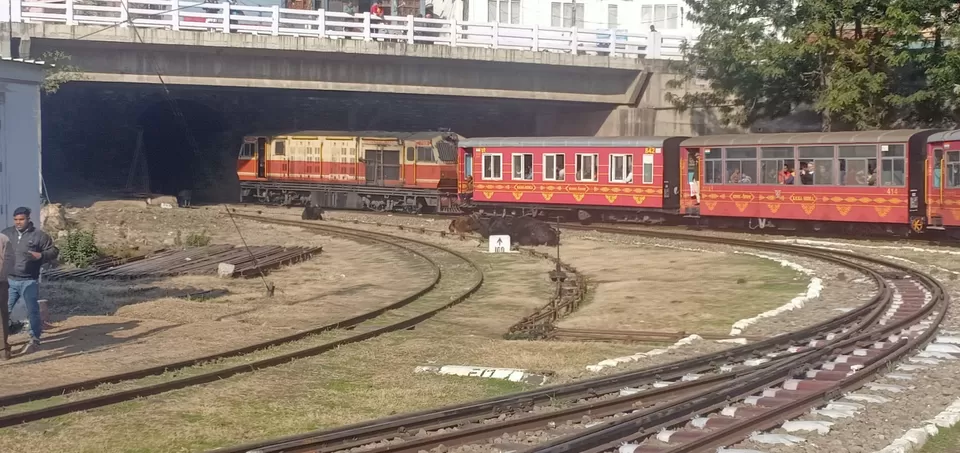
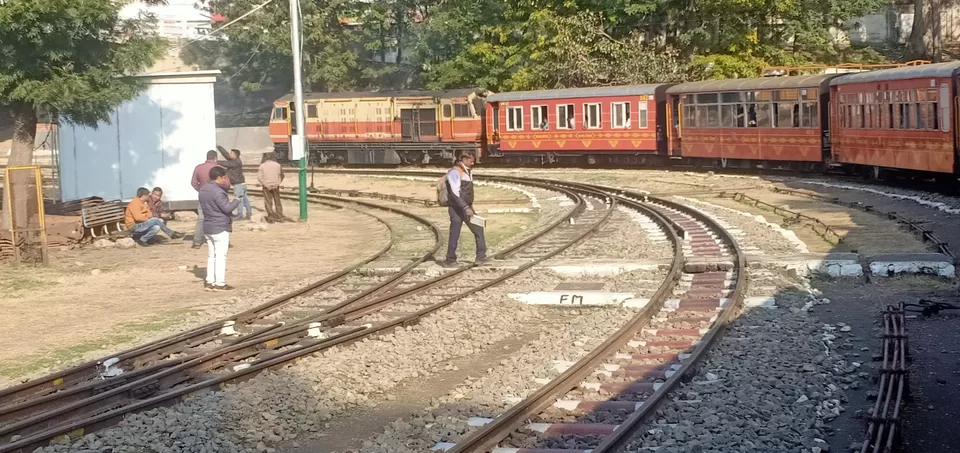
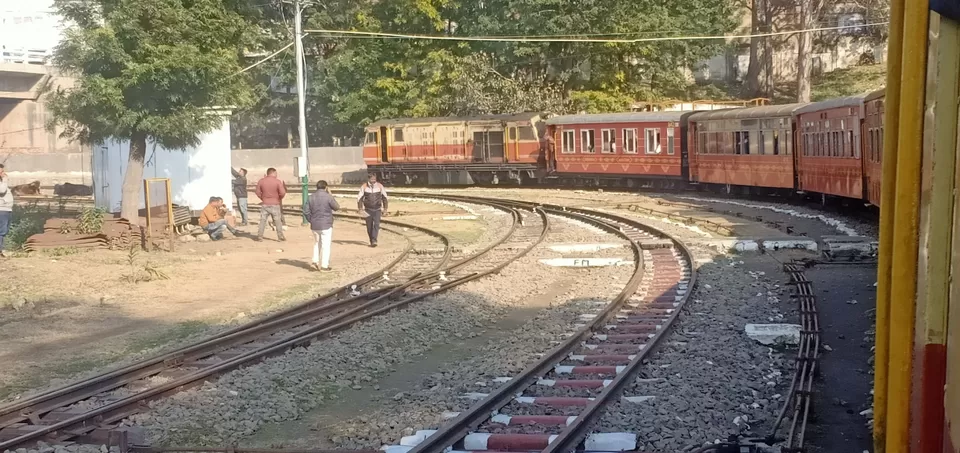
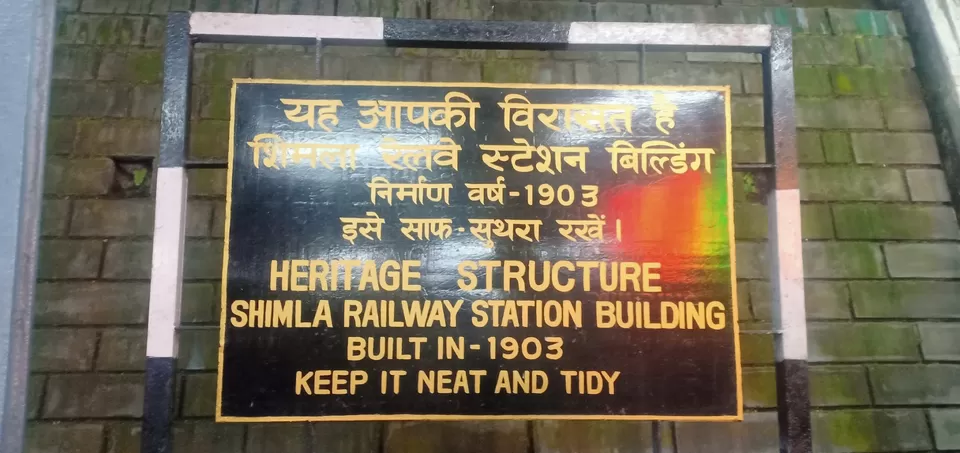
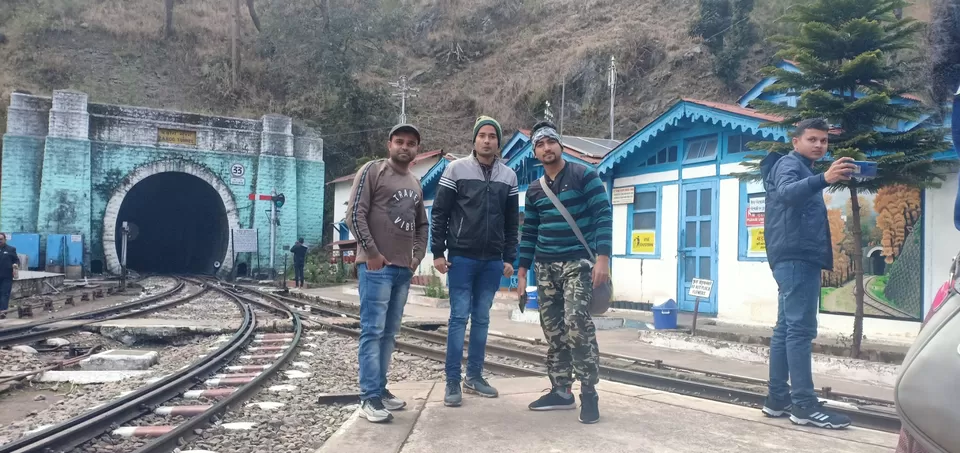
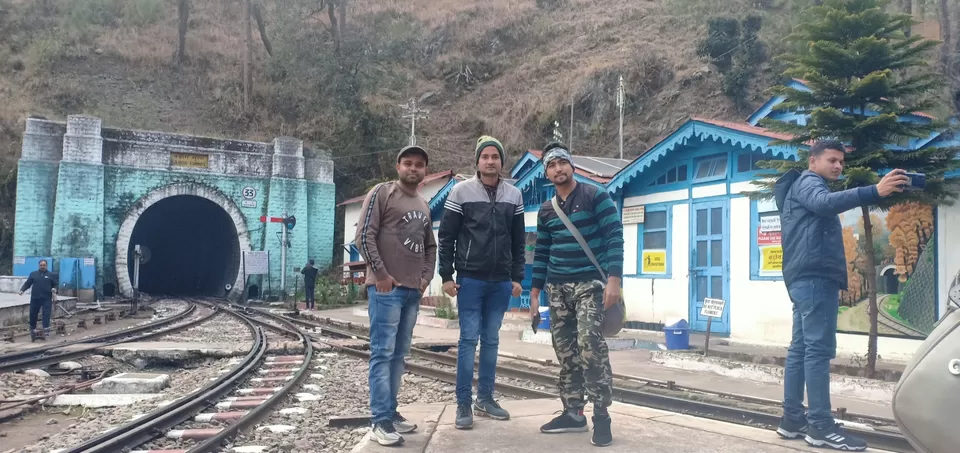
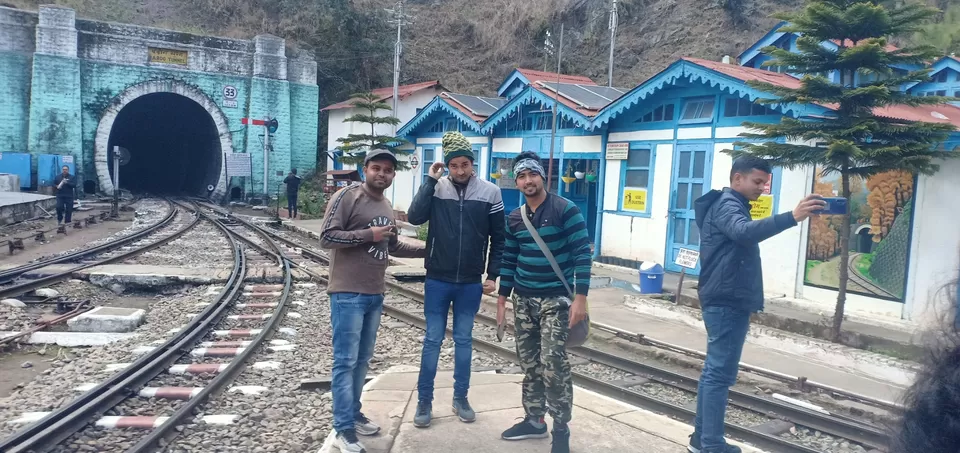
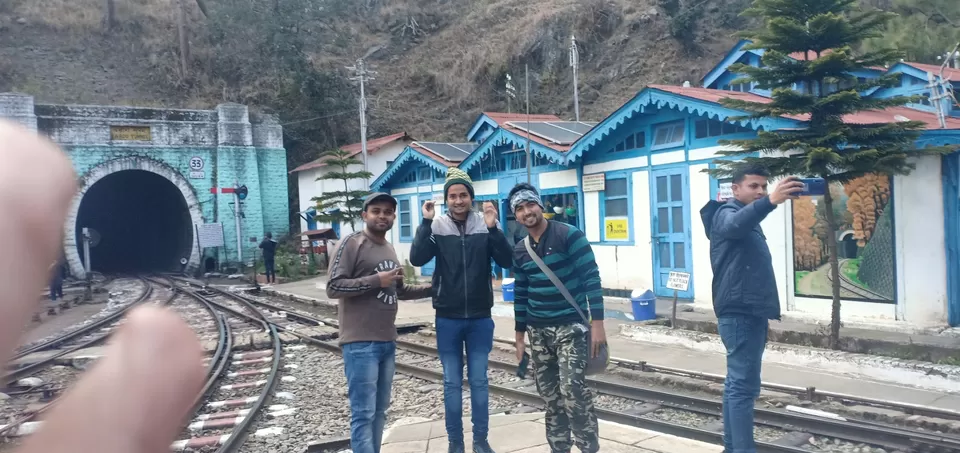
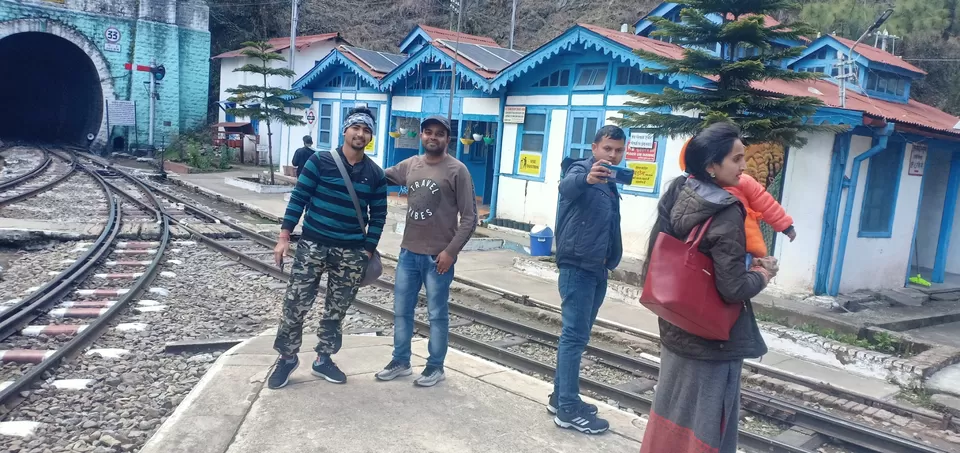
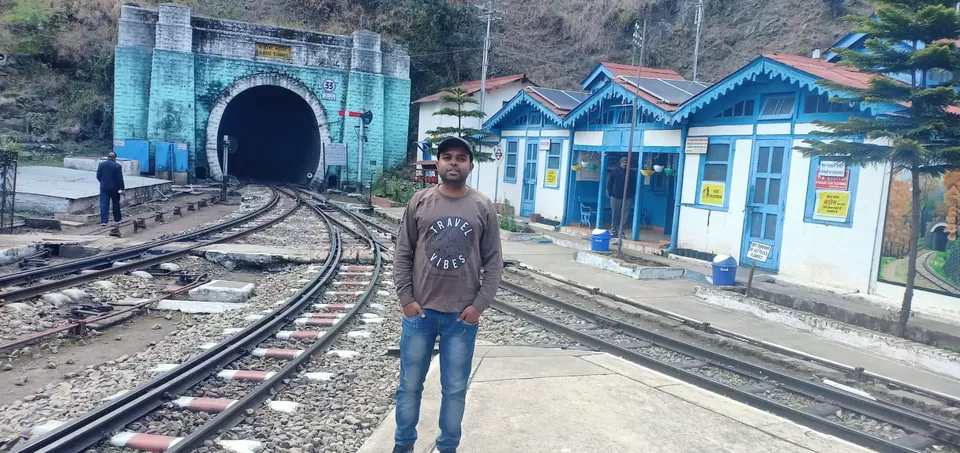
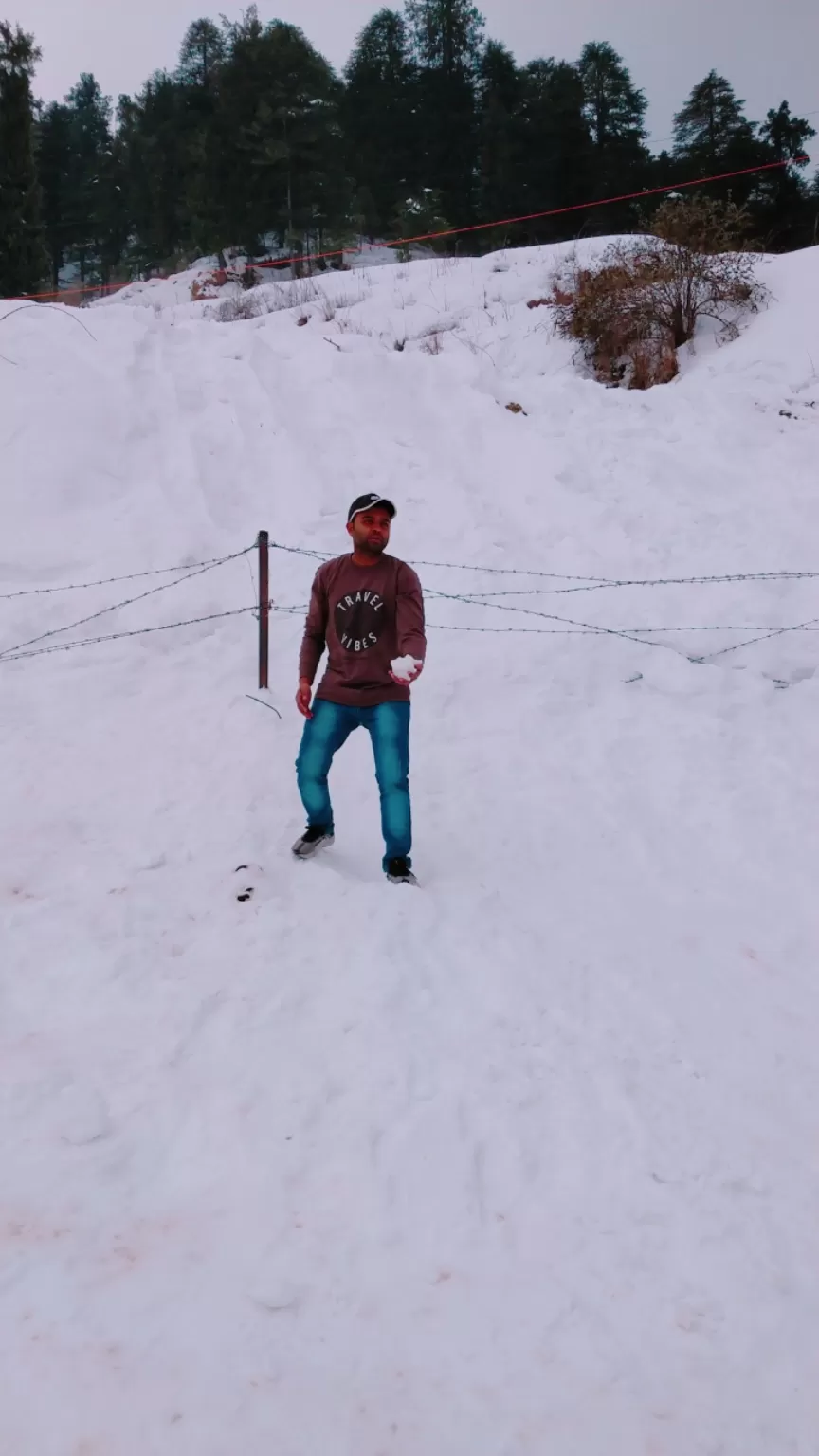
Hello Travelholic world ,
Hope all is well
CheLa The Excited Traveler welcome you again,
This time we covered with my friend Sumit and Vikas ,UNESCO Heritage sites mountain train journey =Kalka-Shimla Toy Train Journey @ UNESCO Heritage sites 2008.
Kalka-Shimla Toy Train, a UNESCO World Heritage Site that connects the Indian plains to the ‘Queen of Hills,’ Shimla. Built in 1903, this toy train ride is one of India’s most incredible feats of engineering covering a staggering 102 tunnels, 864 bridges and 919 stunning curves.
Spanning some 60 miles, the Kalka-Shimla Toy Train is said to be one of the most scenic railway journeys in India. And, with a route that encompasses a vast display of awe-inspiring landscapes, it’s easy to see why. This journey runs on a narrow gauge from Kalka to Shimla, treating passengers with breathtaking views of rugged mountains, lush pine forests, waterfalls, valleys and picture-perfect hill stations along the way that will definitely tempt you to disembark and bask in their beauty. The whole journey takes about five and a half hours.
History
Soon after the first Anglo-Gurkha war, Shimla (then, called as Simla) was established by the British. In 1864, the town became the summer capital of the British Empire and even served as the British army’s headquarters. But the only snag was connectivity – to reach Shimla, the only mode of transportation was a bullock cart that traversed through mountainous terrain, which was unsteady, dangerous and took a long amount of time. So, for easy and quick access to Shimla, the Kalka-Shimla narrow gauge was started in 1903 and was referred as the ‘British Jewel of the Orient’. The maiden journey of the train was taken by the then Viceroy of India, Lord Curzon. And since then, the train has been operating regularly and has become an iconic symbol of Shimla that is cherished by locals and tourists alike.
The route
The Kalka-Shimla train allows passengers to see mesmerizing sights and hamlets that they would have otherwise never witnessed. The route starts from Kalka, located in the Panchkula district of Haryana, from zero metres, winding its way upwards along the narrow track. At 656 metres, the train starts climbing uphill, passing through the 18 stations and reaches Shimla, located at an elevation of 2, 076 metres in the lap of the Himalayas. As the train ascends through steep mountains and curves, its speed slows down.
The 18 stations it stops at are: Taksal (6 km), Gumman (11 km), Koti (17 km), Sonwara (27 km), Dharampur (33 km), Kumarhatti (39 km), Barog (43 km), Solan (47 km), Salogra (53 km), Kandaghat (59 km), Kanoh (65 km), Kathleegat (73 km), Shoghi (78 km), Taradevi (85 km), Jutoh (90 km), Summer Hill (93 km) and finally, Shimla (96 km). At every station, there are tea and snack stalls, so passengers can relish in the local food along the way. The journey is magical, to say the least.
The highlight of the journey is Barog station, which has the longest tunnel (tunnel 33) on the route, stretching 1, 143.61 metres. Also, bridge number 226 is an architectural marvel that passes over a deep valley surrounded by steep hills on both sides. However, it is difficult to see this bridge from the carriage.
Thanks for pay attention and motivate me
Best Regards
CheLa
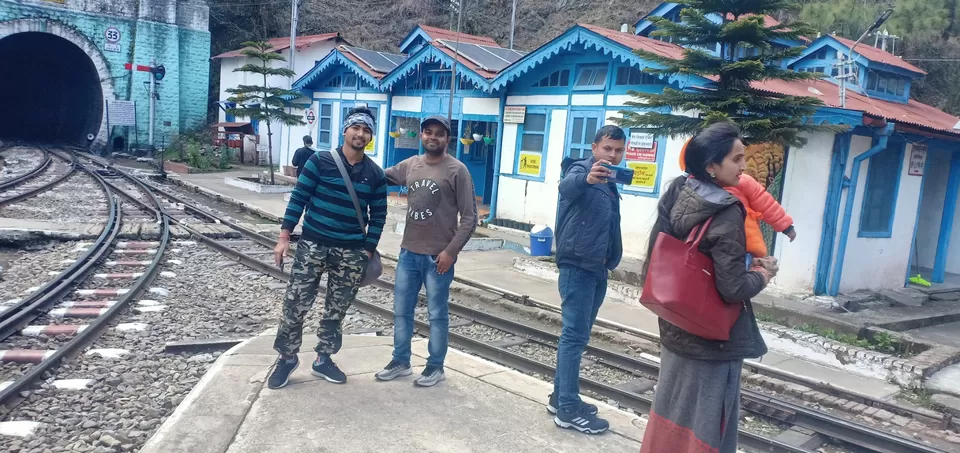
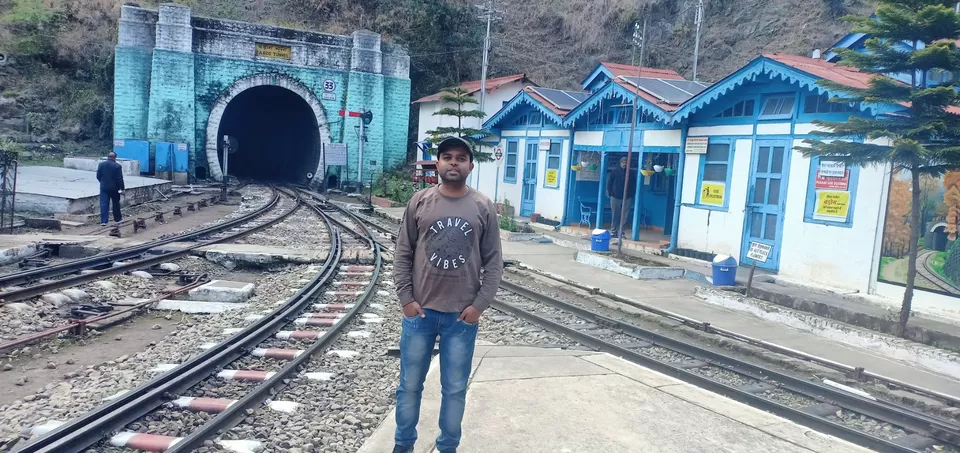
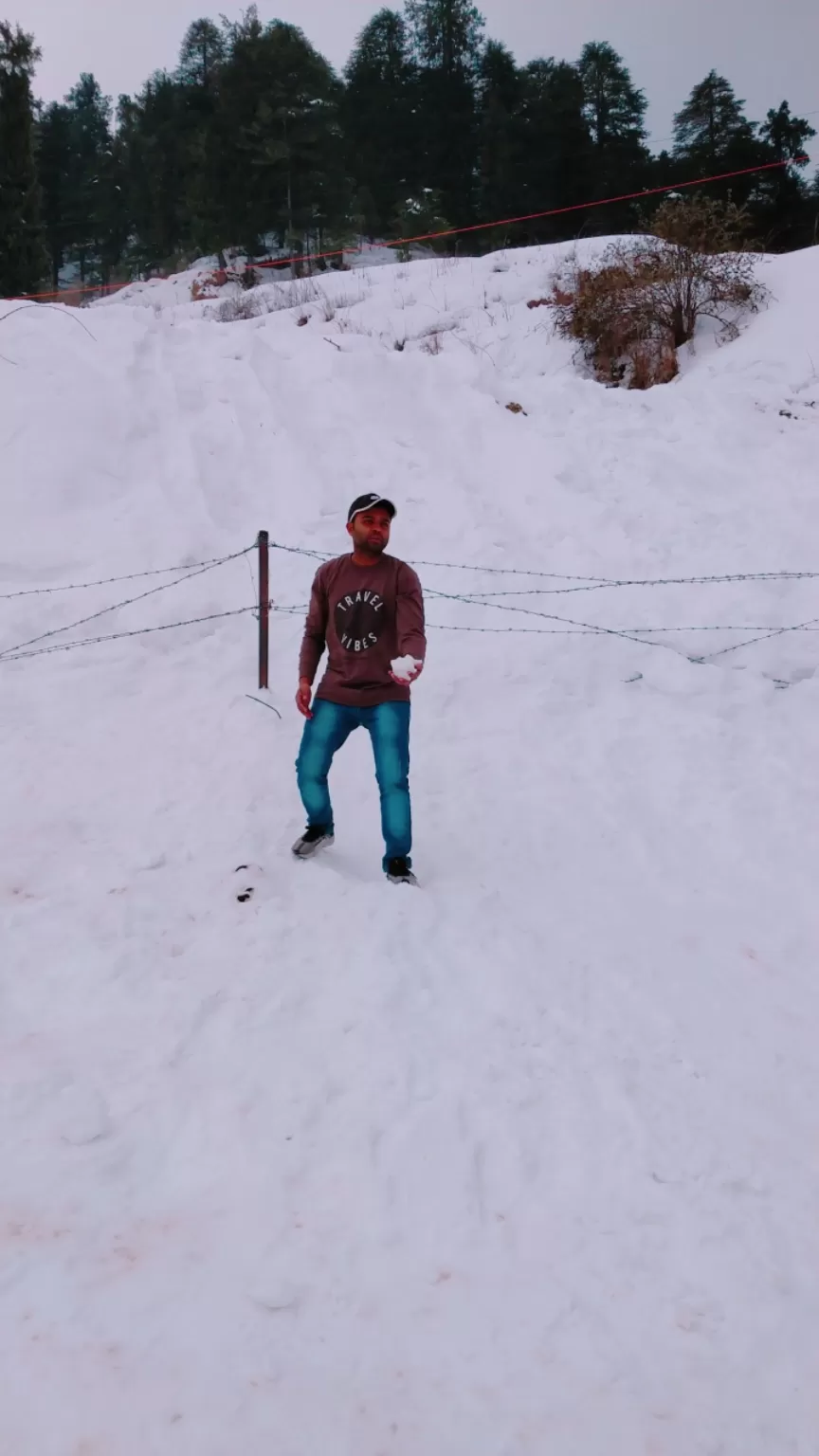
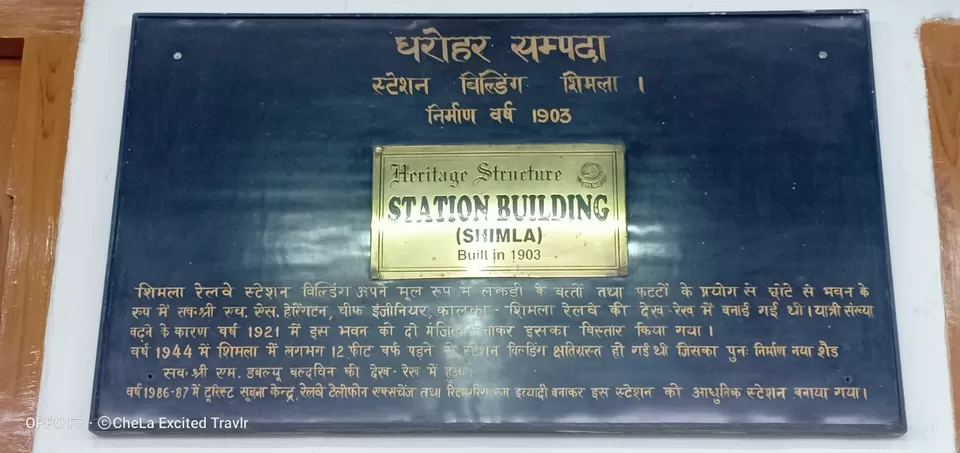
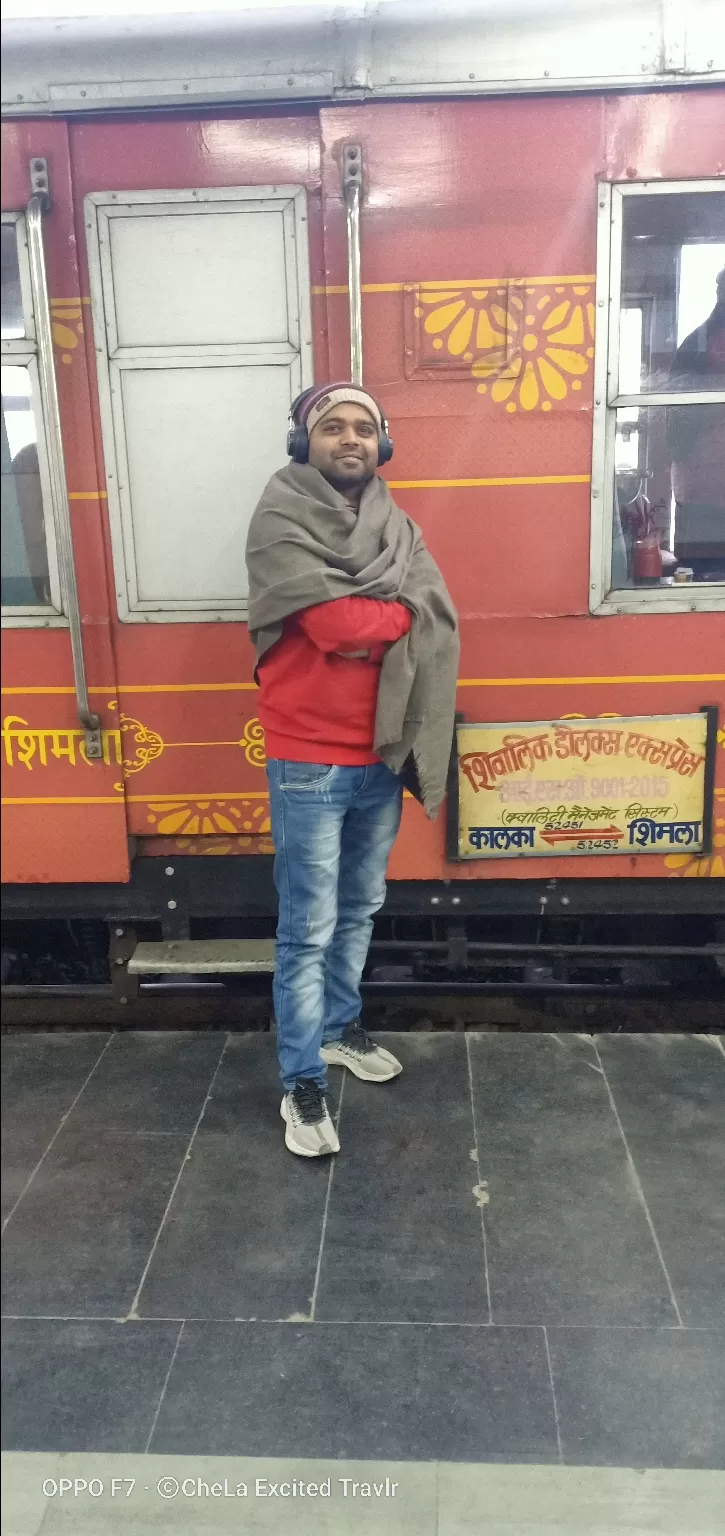
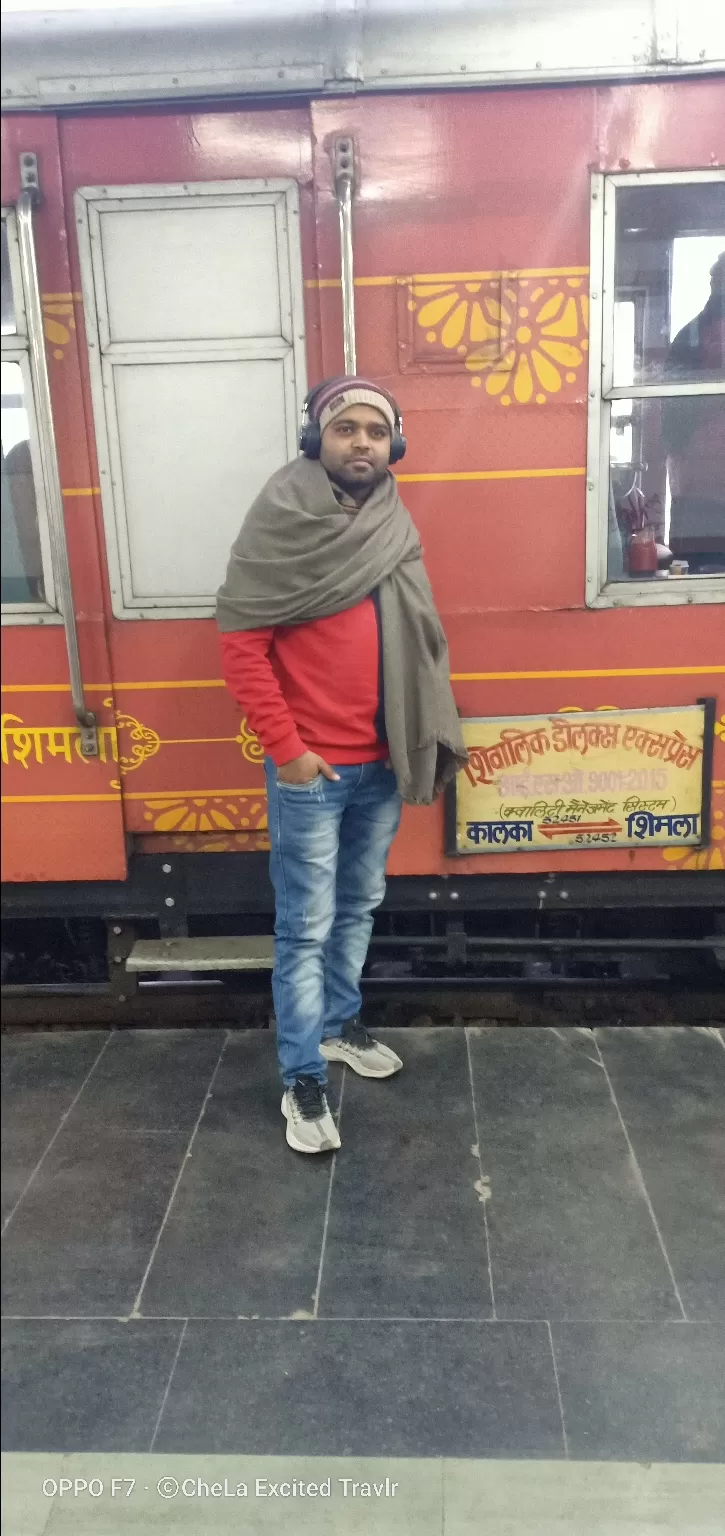
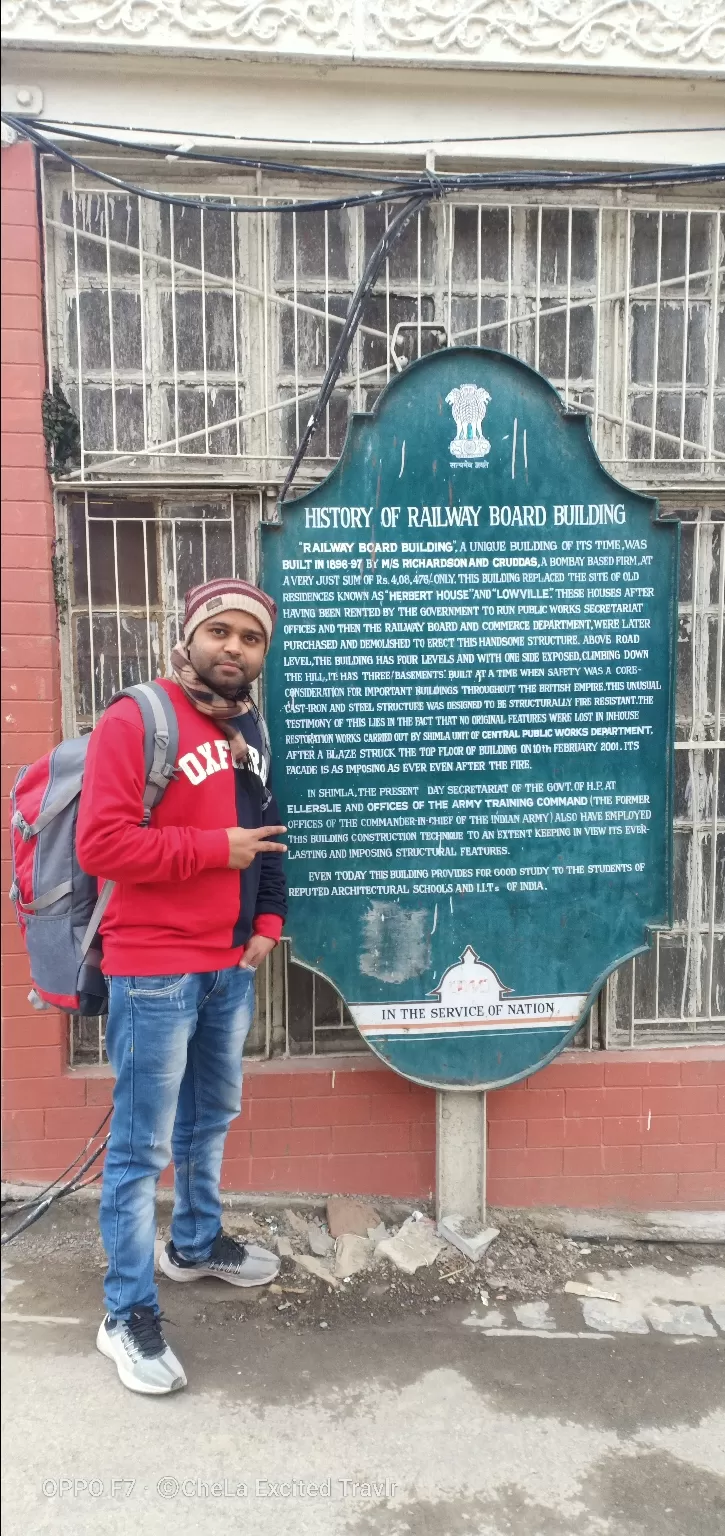
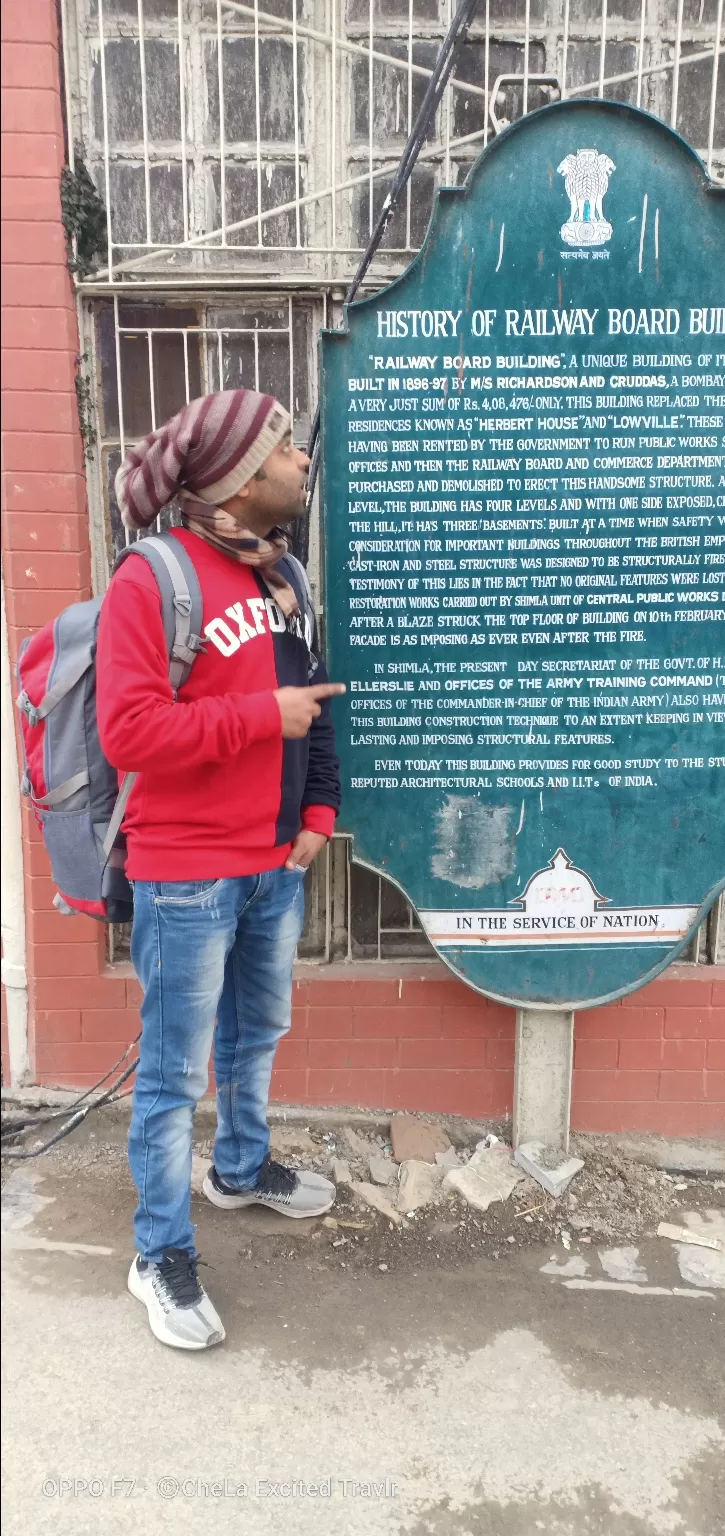
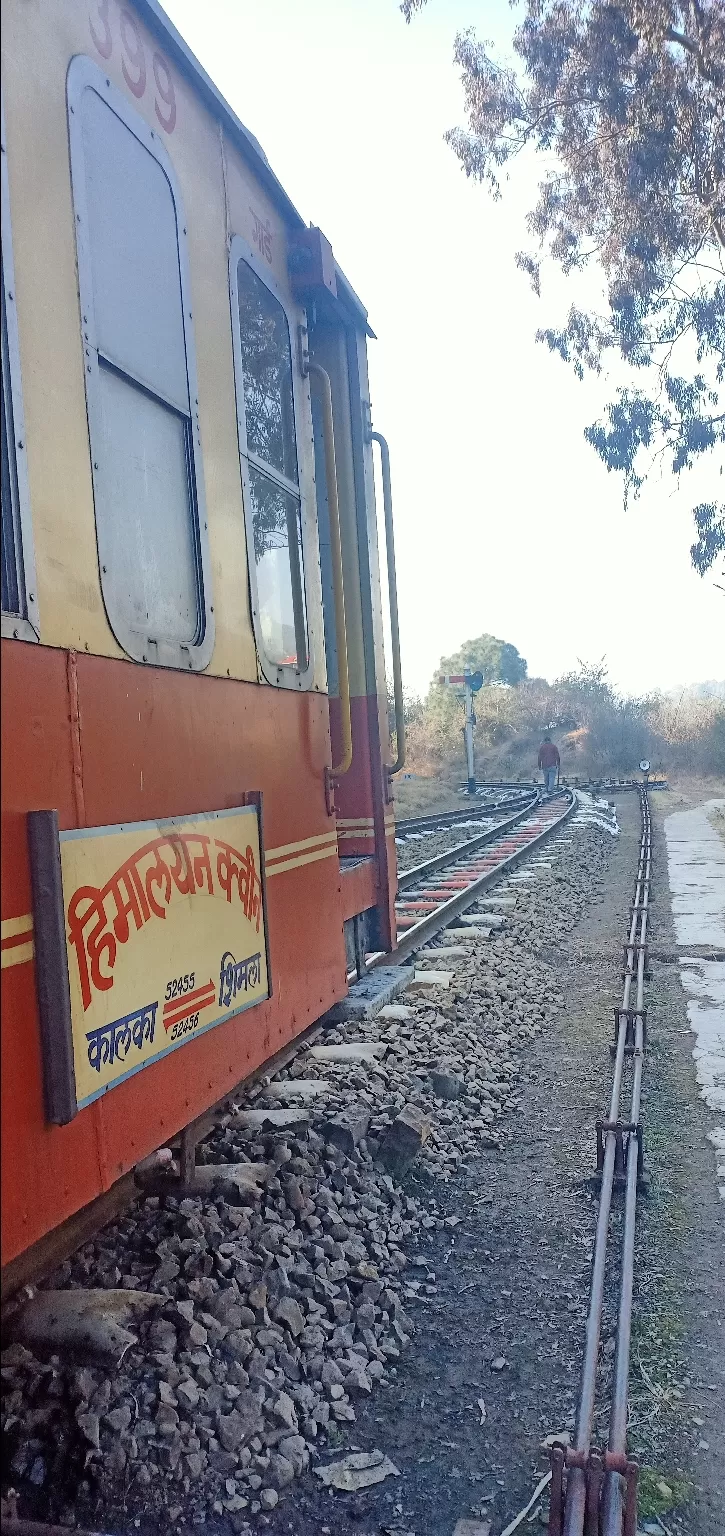
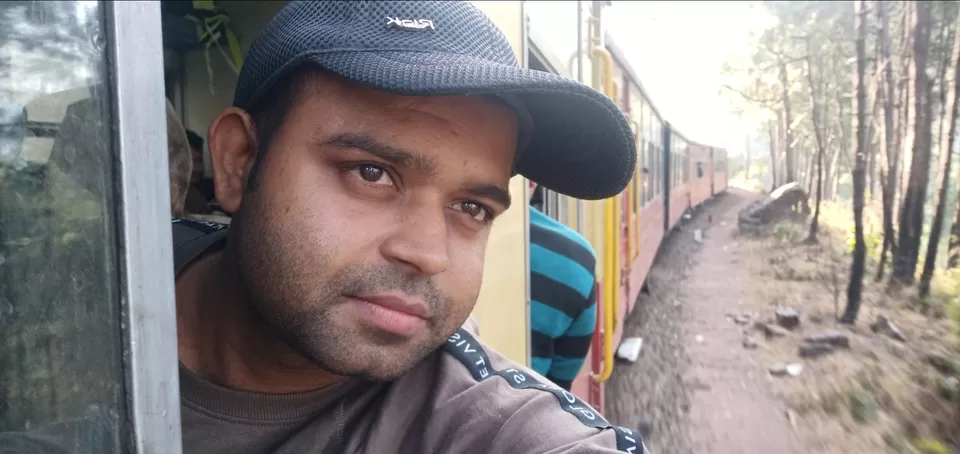
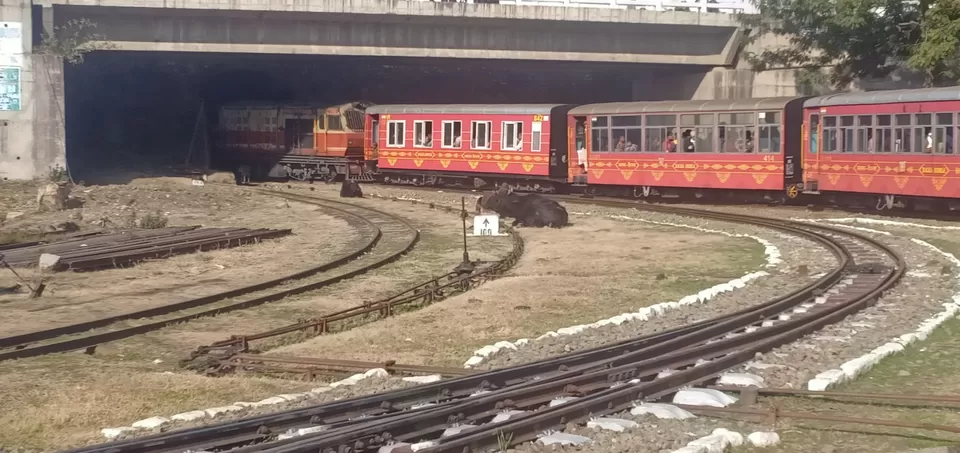
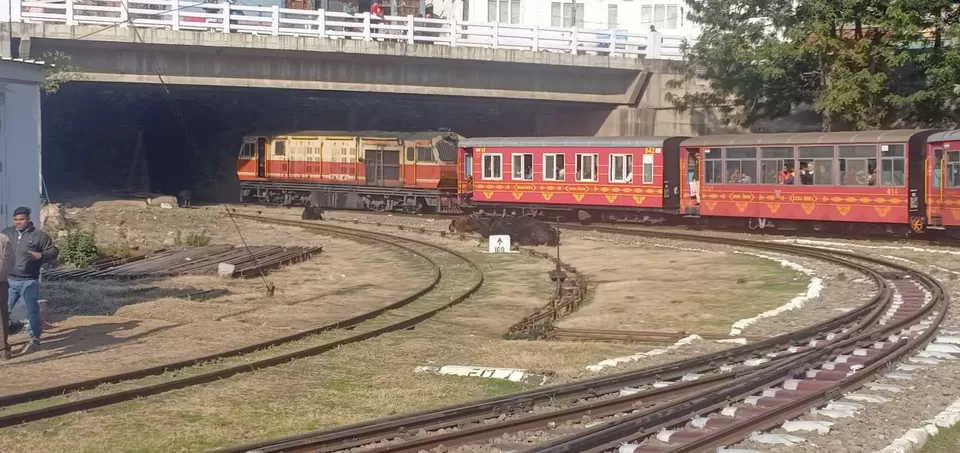
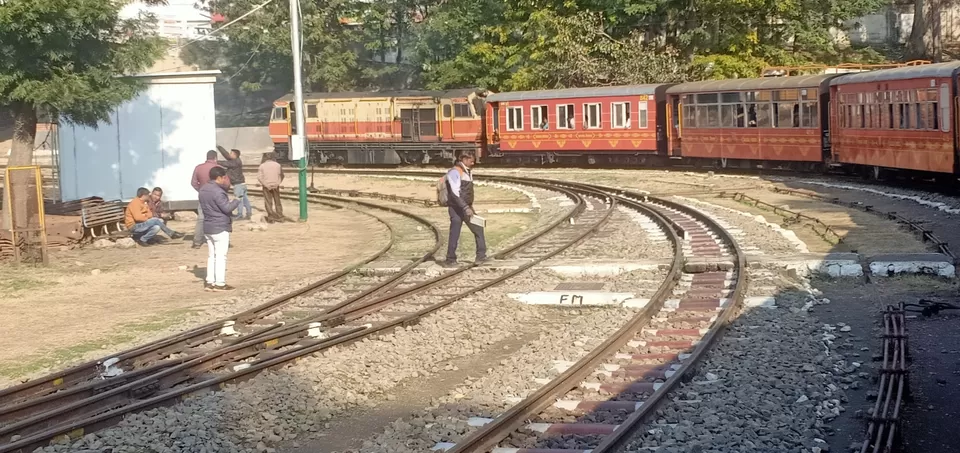
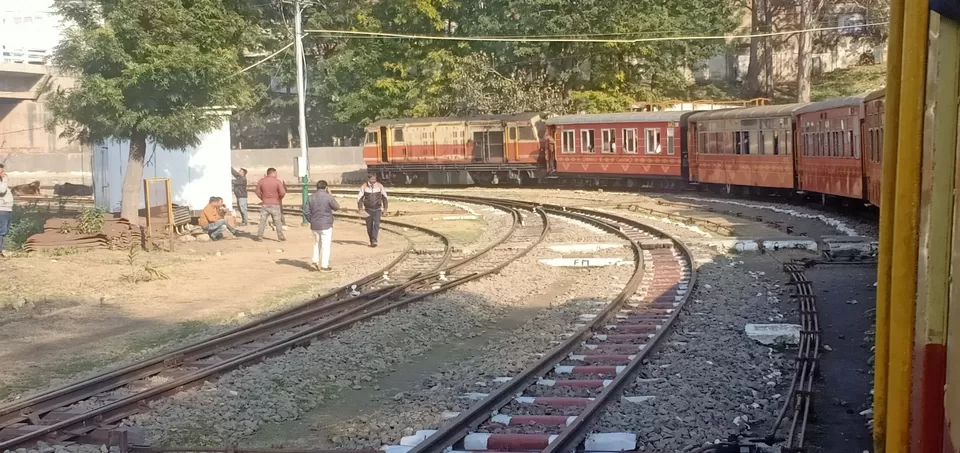
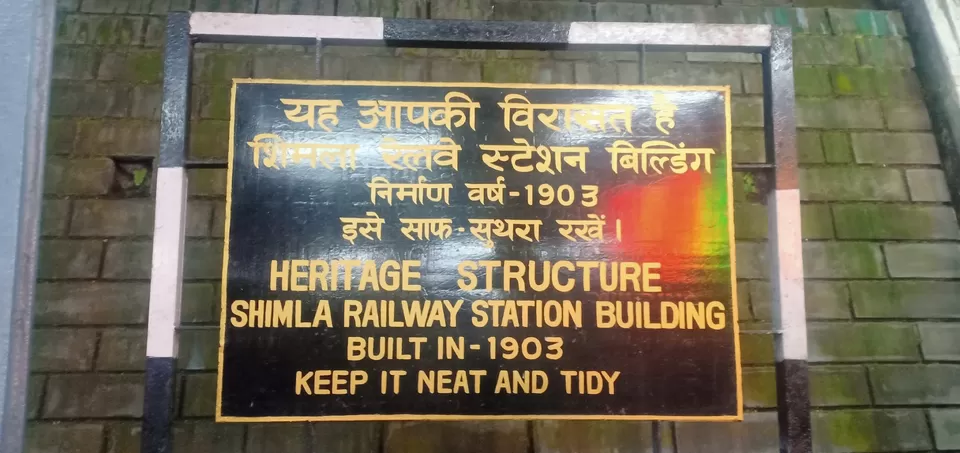
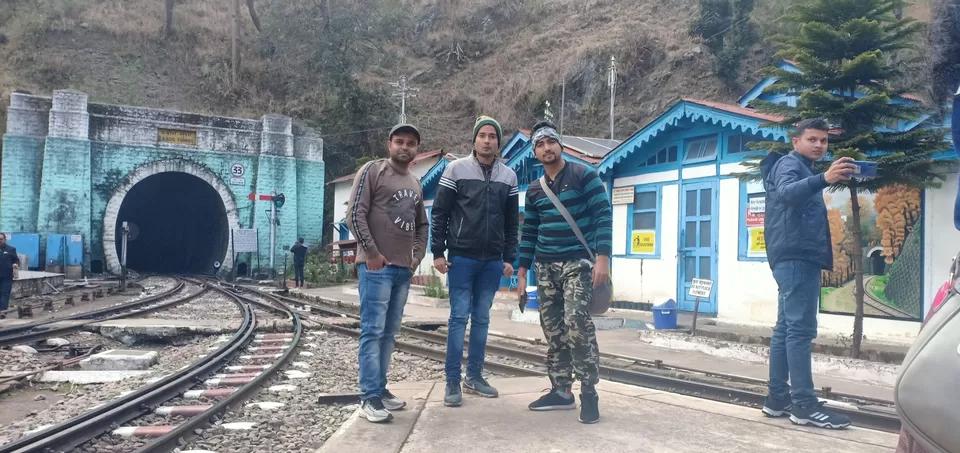
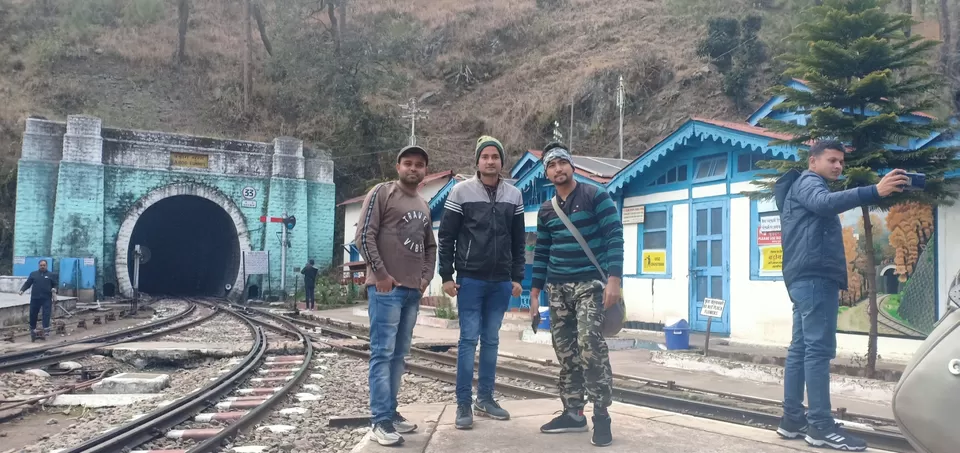
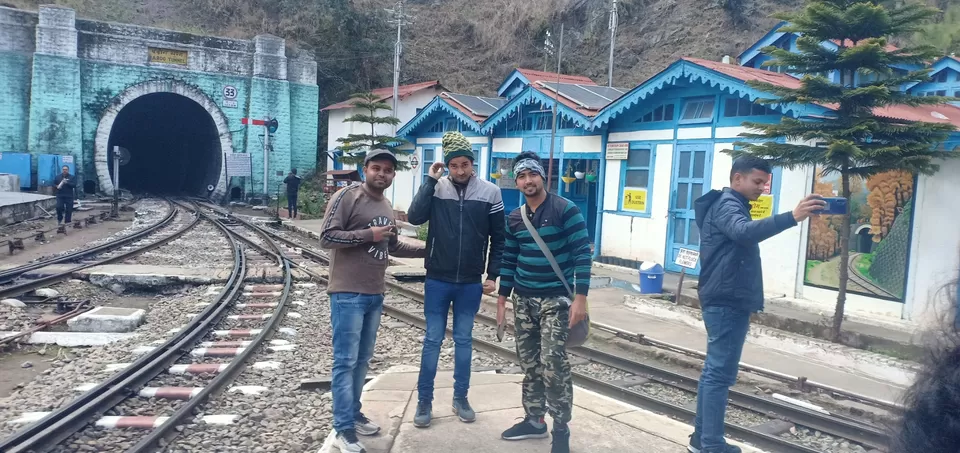
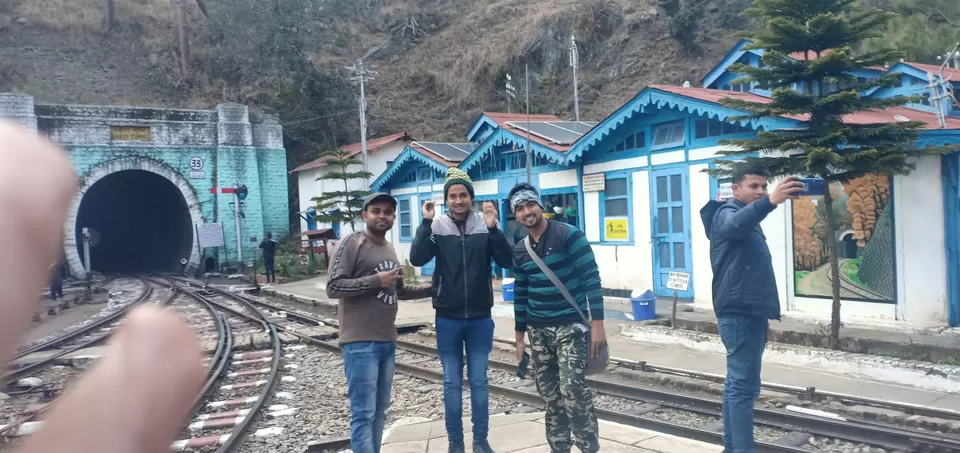
Hello Travelholic world ,
Hope all is well
CheLa The Excited Traveler welcome you again,
This time we covered with my friend Sumit and Vikas ,UNESCO Heritage sites mountain train journey =Kalka-Shimla Toy Train Journey @ UNESCO Heritage sites 2008.
Kalka-Shimla Toy Train, a UNESCO World Heritage Site that connects the Indian plains to the ‘Queen of Hills,’ Shimla. Built in 1903, this toy train ride is one of India’s most incredible feats of engineering covering a staggering 102 tunnels, 864 bridges and 919 stunning curves.
Spanning some 60 miles, the Kalka-Shimla Toy Train is said to be one of the most scenic railway journeys in India. And, with a route that encompasses a vast display of awe-inspiring landscapes, it’s easy to see why. This journey runs on a narrow gauge from Kalka to Shimla, treating passengers with breathtaking views of rugged mountains, lush pine forests, waterfalls, valleys and picture-perfect hill stations along the way that will definitely tempt you to disembark and bask in their beauty. The whole journey takes about five and a half hours.
History
Soon after the first Anglo-Gurkha war, Shimla (then, called as Simla) was established by the British. In 1864, the town became the summer capital of the British Empire and even served as the British army’s headquarters. But the only snag was connectivity – to reach Shimla, the only mode of transportation was a bullock cart that traversed through mountainous terrain, which was unsteady, dangerous and took a long amount of time. So, for easy and quick access to Shimla, the Kalka-Shimla narrow gauge was started in 1903 and was referred as the ‘British Jewel of the Orient’. The maiden journey of the train was taken by the then Viceroy of India, Lord Curzon. And since then, the train has been operating regularly and has become an iconic symbol of Shimla that is cherished by locals and tourists alike.
The route
The Kalka-Shimla train allows passengers to see mesmerizing sights and hamlets that they would have otherwise never witnessed. The route starts from Kalka, located in the Panchkula district of Haryana, from zero metres, winding its way upwards along the narrow track. At 656 metres, the train starts climbing uphill, passing through the 18 stations and reaches Shimla, located at an elevation of 2, 076 metres in the lap of the Himalayas. As the train ascends through steep mountains and curves, its speed slows down.
The 18 stations it stops at are: Taksal (6 km), Gumman (11 km), Koti (17 km), Sonwara (27 km), Dharampur (33 km), Kumarhatti (39 km), Barog (43 km), Solan (47 km), Salogra (53 km), Kandaghat (59 km), Kanoh (65 km), Kathleegat (73 km), Shoghi (78 km), Taradevi (85 km), Jutoh (90 km), Summer Hill (93 km) and finally, Shimla (96 km). At every station, there are tea and snack stalls, so passengers can relish in the local food along the way. The journey is magical, to say the least.
The highlight of the journey is Barog station, which has the longest tunnel (tunnel 33) on the route, stretching 1, 143.61 metres. Also, bridge number 226 is an architectural marvel that passes over a deep valley surrounded by steep hills on both sides. However, it is difficult to see this bridge from the carriage.
Thanks for pay attention and motivate me
Best Regards
CheLa
